
HYDROGEN: THE NEXT FRONTIER IN ENERGY
THE NO DISCOUNT ENERGY RETAILER

Pat McCafferty DISCUSSES THE TRANSITION TO DIGITAL METERS
DATA DRIVES NEW APPROACHES IN ASSET MANAGEMENT
Construction & Maintenance www.utilitymagazine.com.au Issue #23, August 2019 WATER SEWER ELECTRICITY GAS
Engineering,
THE ROCK DRILL FOR A RANGE OF CONDITIONS
The new D40x55DR S3 Navigator® horizontal directional drill helps deliver excellent productivity in a broad range of conditions, from hard, medium and soft rock to loamy dirt and clay. Dual rod technology delivers powerful down-hole cutting action and the flexibility to select the right tooling to match ground conditions. Help maximize jobsite productivity with multiple rod options, 40,000 lb (177.9 kN) of thrust and pullback and 5500 ft-lb (7457 Nm) of rotational torque. Demo it and experience the
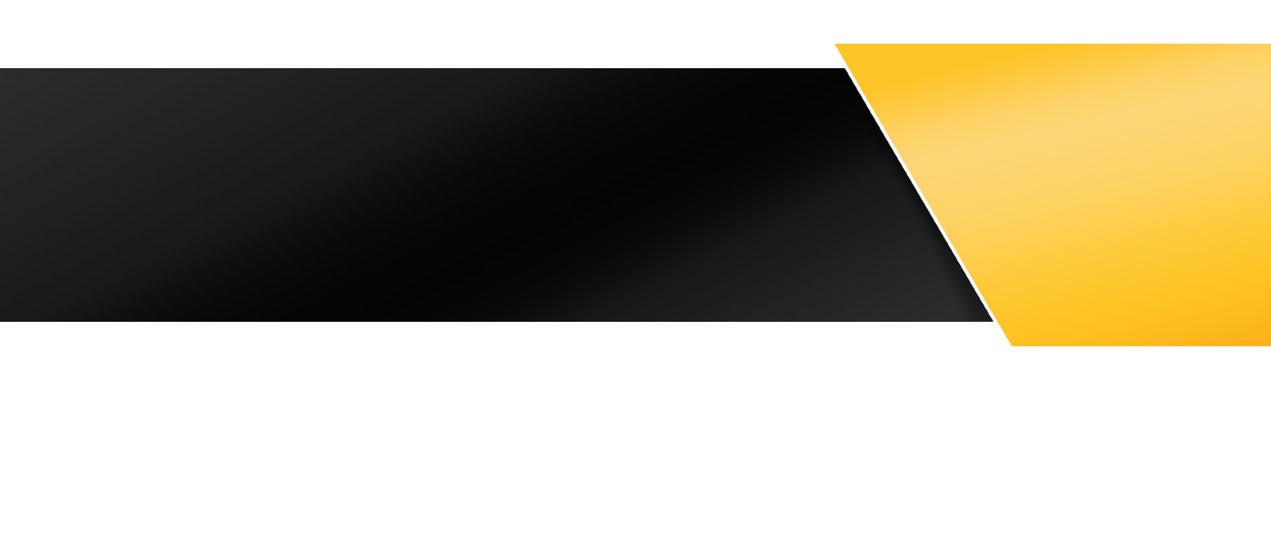








/ VermeerAustralia VERMEER.COM.AU | 1300 VERMEER Vermeer and the Vermeer logo are trademarks of Vermeer Manufacturing Company in the United States and /or other countries. © 2019 Vermeer Equipment Holdings Pty Ltd. All Rights Reserved. Overseas model shown.
difference TO ROCK THE NEW D40X55DR S3 READY




The utility industry is ripe for disruption, with many organisations turning to digital technologies and embracing a more innovative mindset to provide better value for their customers. Those that don’t seize the opportunities embedded in digital transformation risk being left behind or displaced by more agile players.
In this edition of Utility, Pat McCafferty, Managing Director of Yarra Valley Water, discusses the digital metering trial taking place in Vermont South in Melbourne, which will help the utility better understand the value of digital water metering technology for its customers.
The energy sector is also looking at ways to apply new technologies to serve the customers of the future, while satisfying safety, reliability and affordability requirements.
Western Power, which has a network that connects more than one million customers over an area larger than the United Kingdom, has developed the Grid Transformation Engine to drive the delivery of a smarter grid. The Grid Transformation Engine is a suite of software tools and applications that consider a range of data inputs to forecast the most probable shape and makeup of the electricity network over the next 30 years.
In addition to our article on how Western Australia is leading the way in smart grid solutions, we also have an interview with Amy Childs, Managing Director of Momentum Energy, who talks about the challenge of restoring consumer confidence and trust in the market and Momentum’s positioning as the no discount energy retailer.
As well as improving the customer experience, technology has the power to enhance the management of utility assets by maximising the use of asset information to provide a greater understanding of an asset’s location, condition and how it adds value to the network.
Asset Managers are now being faced with overwhelming volumes of data about their assets, however data is only useful when it can be interpreted in meaningful ways that can benefit both the asset and the organisation’s bottom line.
In response to this, Sydney Water is taking a new approach to leverage data across the asset management value chain to improve the organisation’s decisionmaking, which Tammy Falconer, Head of Asset Knowledge, has shared with Utility
Speaking of asset management, Utility’s next event is the third annual Asset Management for Critical Infrastructure Conference, which is being held from 20–21 August in Sydney.
Asset Management for Critical Infrastructure is the premier event for anyone working in the construction, transport or utility sectors looking to gain an understanding of how smart technology and infrastructure will impact and benefit their business in the near future.
If you’re involved in asset management for a utility or other critical infrastructure provider and would like to attend, then you can register at assetmanagementevent. com.au.
Clearly we enjoy being busy as we’ve just launched a new event for later in the year. Disaster Management 2019, running from 21–22 November in Melbourne, aims to help critical services prepare, survive and thrive in the face of major disaster events. It’s a topic of vital importance and tickets are currently available at disastermanagement.com.au.
You’ll be able to find this edition of the magazine at a number of events, including WIOA Bendigo , Energy in WA and Power+Utilities – I’ll be chairing a few sessions in the digital transformation theatre so hopefully I’ll see you there for some interesting and informative discussions.
UTILITY • AUGUST 2019 Published by Cover image highlights our focus on how digital technologies are improving utility operations. Engineering, Construction & Maintenance www.utilitymagazine.com.au Issue #23, August 2019 WATER SEWER ELECTRICITY GAS UTILITY MAGAZINE AUGUST 2019 DATA DRIVES NEW APPROACHES IN ASSET MANAGEMENT Pat McCafferty DISCUSSES THE TRANSITION TO DIGITAL METERS THE NO DISCOUNT ENERGY RETAILER HYDROGEN: THE NEXT FRONTIER IN ENERGY Editor Charlotte Pordage Assistant Editors Lauren 'LJ' Butler Siobhan Day Senior Designer Alejandro Molano Designers Jacqueline Buckmaster Danielle Harris Business Development Manager Rima Munafo Publisher Chris Bland Managing Editor Laura Harvey Operations Manager Kirsty Hutton Digital Marketing Manager Sam Penny Monkey Media Enterprises ABN: 36 426 734 954 204/23–25 Gipps St Collingwood VIC 3066 P: (03) 9988 4950 monkeymedia.com.au info@monkeymedia.com.au utilitymagazine.com.au info@utilitymagazine.com.au ISSN: 2203-2797 6,474 This publication has been independently audited under the AMAA’s CAB Total Distribution Audit. Audit Period: 1 October 2018 to 31 March 2019 welcome August 2019
FROM THE EDITOR
Charlotte Pordage
ISSUE 23 1
Editor

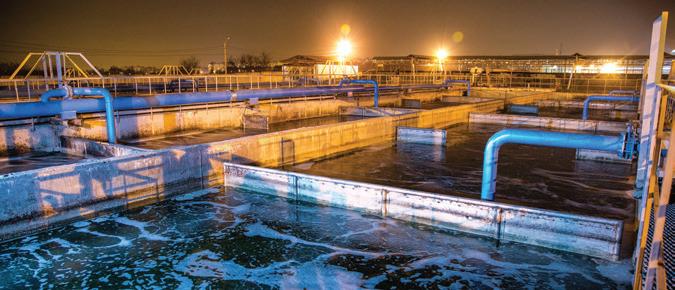
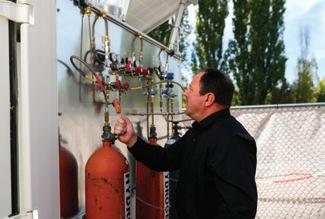
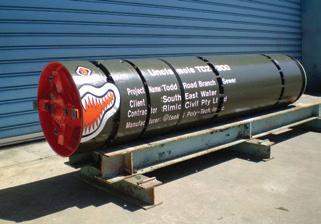

2
UTILITY • AUGUST 2019 WWW.UTILITYMAGAZINE.COM.AU 44 Making water services accessible to all 24 Essential water services will be more easily accessible to thousands of South Australians living with a disability or medical condition as part of an Australian industry-leading program being implemented by SA Water The changing face of construction: Jenny Ding ............ 28 The future of water meters 30 Detecting toxins in drinking water supply ................................ 34 Still soldering on? You might be missing a trick ..... 36 WIOA Operators of the Year 38 Effective arsenic removal with DMI-65 42 Overhauling the greenhouse gas emissions accounting guidelines for wastewater handling ............ 44 How South East Water’s smart sewers are keeping beaches clean with Advanced BlokAid .............. 47 Making water safer for both sides of the Tasman 48 Sydney Water announces new Chief Executive Officer 50 WASTE MANAGEMENT Biosolids trial to boost soil productivity ................................ 92 GAS PIPELINES Your go-to supplier for all things pipeline ............................ 74 The ACT’s ‘renewable and reliable’ hydrogen future 76 Gain maximum productivity with specialised equipment and attachments 80 TRENCHLESS TECHNOLOGY Microtunnelling enables cost-effective sewer upgrade..... 82 Hi-Vac high-CFM vacs and jetters already making an impact down under............................................ 86 Overcoming challenges in the Todd Road Branch Sewer 88 Industry leader draws on forty years of experience 90 92 76 EMBRACING DIVERSITY WATER TREATMENT AND OPERATIONS 24 EVENTS Bringing together innovative thinkers in the power and energy sector .............................. 98 88
CONTENTS

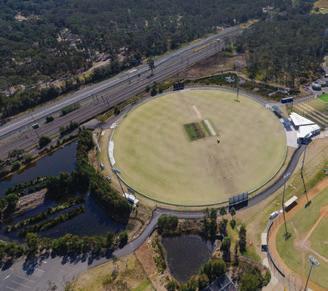

August 2019 ISSUE 21 3 UTILITY • AUGUST 2019 WWW.UTILITYMAGAZINE.COM.AU ASSET MANAGEMENT STORMWATER IoT AND SCADA 62 58 In each issue Welcome from the Editor ���������������������������������������������������������������������������������������������������������������������� 1 A word from Energy Networks Australia ������������������������������������������������������������������������������������������ 4 A word from WSAA ��������������������������������������������������������������������������������������������������������������������������������6 News briefs ����������������������������������������������������������������������������������������������������������������������������������������������8 Advertisers’ index ������������������������������������������������������������������������������������������������������������������������������ 100 Editorial schedule ����������������������������������������������������������������������������������������������������������������������������� 100 Defining sustainability in asset management 51 The data-driven model informing Sydney Water’s asset management decisions 52 Understanding and preventing water hammer 54 How Western Power created a Digital Asset Management Strategy 56 Full water savings for stormwater harvesting scheme 58 Maintaining numerous world-class sporting fields and extensive surrounding reserves requires significant amounts of water for irrigation, which can be costly, environmentally damaging and difficult to sustain in times of drought. Blacktown City Council overcame these issues with the innovative Angus Creek stormwater harvesting and reuse scheme. Driving a digital transformation: an MD’s perspective 62 Smart water meters have proven their worth; now Narrabri is investigating wastewater analytics .................. 64 The IoT power play 66 RETAIL, BILLING AND CRM The ‘no hassle’ service approach to retail energy 68 SMART GRIDS WA drives smart grid solutions 72 WATER INDUSTRY SAFETY Creating a safer industry 60 52 96
A WORD FROM ENERGY NETWORKS AUSTRALIA
ANDREW DILLON CHIEF EXECUTIVE OFFICER – ENERGY NETWORKS AUSTRALIA

STAND-ALONE POWER SYSTEMS ARE A NO-BRAINER
Traditional poles and wires may be replaced by solar PV, batteries and backup generation for some rural and regional customers. This would not only come at no extra cost to customers, but it could also reduce power prices for all. How? The Australian Energy Market Commission (AEMC) recently made recommendations for a law change which, if legislated, will allow network businesses to decommission existing poles and wires in some locations and replace them with a stand-alone power system (SAPS).
WHY SAPS?
A SAPS is an electricity generation and supply system which typically comprises solar panels, a large battery and a backup diesel generator which can operate independently of the electricity grid.

(AN EXAMPLE OF A SAPS. SOURCE: UNLOCKING VALUE: MICROGRIDS AND STAND ALONE SYSTEMS – ROLES AND INCENTIVES FOR MICROGRIDS AND STAND ALONE POWER SYSTEMS)
These systems aren’t cheap. For most customers, it would cost more to disconnect from the grid and invest in a SAPS given electricity is currently being provided at a fraction of the cost through their existing grid connection.
But in some cases – specifically for many rural and regional areas – it makes a lot of sense, as these are some of the most costly to supply due to the low density of customers.
It can be cheaper to supply these customers using a SAPS than it would be to maintain or replace vast expanses of poles and wires. The savings can then be shared among all customers to put downward pressure on bills.
There are also significant reliability benefits.
The long wires that service these remote and regional customers are more exposed and are more likely to be impacted by bushfires, wind, falling branches and lightning strikes. Their length also makes identifying and rectifying faults difficult.
A SAPS is less vulnerable to weather events and localises any reliability issues. This can decrease cost and increase reliability.
THE CUSTOMER EXPERIENCE
The almost three-year review process for the rule change proposal culminated in late May with a framework to allow distributors to provide SAPS to existing grid-connected customers where it is economically efficient.
The framework is consumer-centric and designed so that wherever possible, the customer experience will remain the same.
Most notably, customers will be able to continue their existing relationship with their retailer and receive a bill under similar arrangements to those they have now.
A notable difference is that retailers will no longer have to purchase wholesale electricity to supply SAPS customers, as their electricity will be generated on site. Instead, retailers will pay a fixed ‘administered settlement price’.
Customers transitioning to SAPS will also have similar protections to those who are grid connected. The AEMC has recommended that the existing suite of consumer protections under national and jurisdictional energy laws should be extended to customers transitioning to SAPS.
An early trial by Western Power, where six customers in Ravensthorpe WA were early-adopters of SAPS, showed that reliability was greatly enhanced under SAPS supply compared with their regional grid connection. Before these trials, when participants were grid supplied, they were in the dark for 70 hours during the year but were only off supply for five hours when the SAPS was installed.
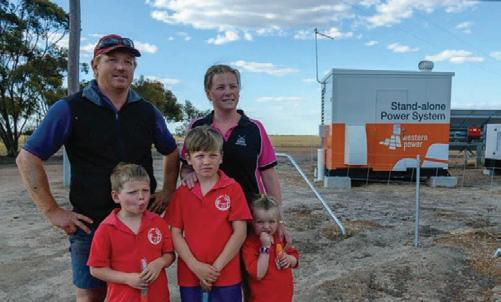
Because customers will still be covered by the same protections and will still have access to the competitive market, network businesses won’t have to seek formal consent from customers to transition them to a SAPS. Instead, network businesses will have to design a fit-forpurpose customer engagement strategy and work closely with prospective SAPS customers to provide a SAPS which is tailored to each customer’s needs.
COAG AND BEYOND
Customers are not yet able to transition to a SAPS as the recommendations need approval by the Council of Australian Governments (COAG) Energy Council and then require legislation. While energy networks believe this is a ‘nobrainer’, the COAG Energy Council and the Commonwealth Parliament have final say over whether the recommendations are enshrined in law.
Let’s hope for the greater good of all customers that this process doesn’t take too long.
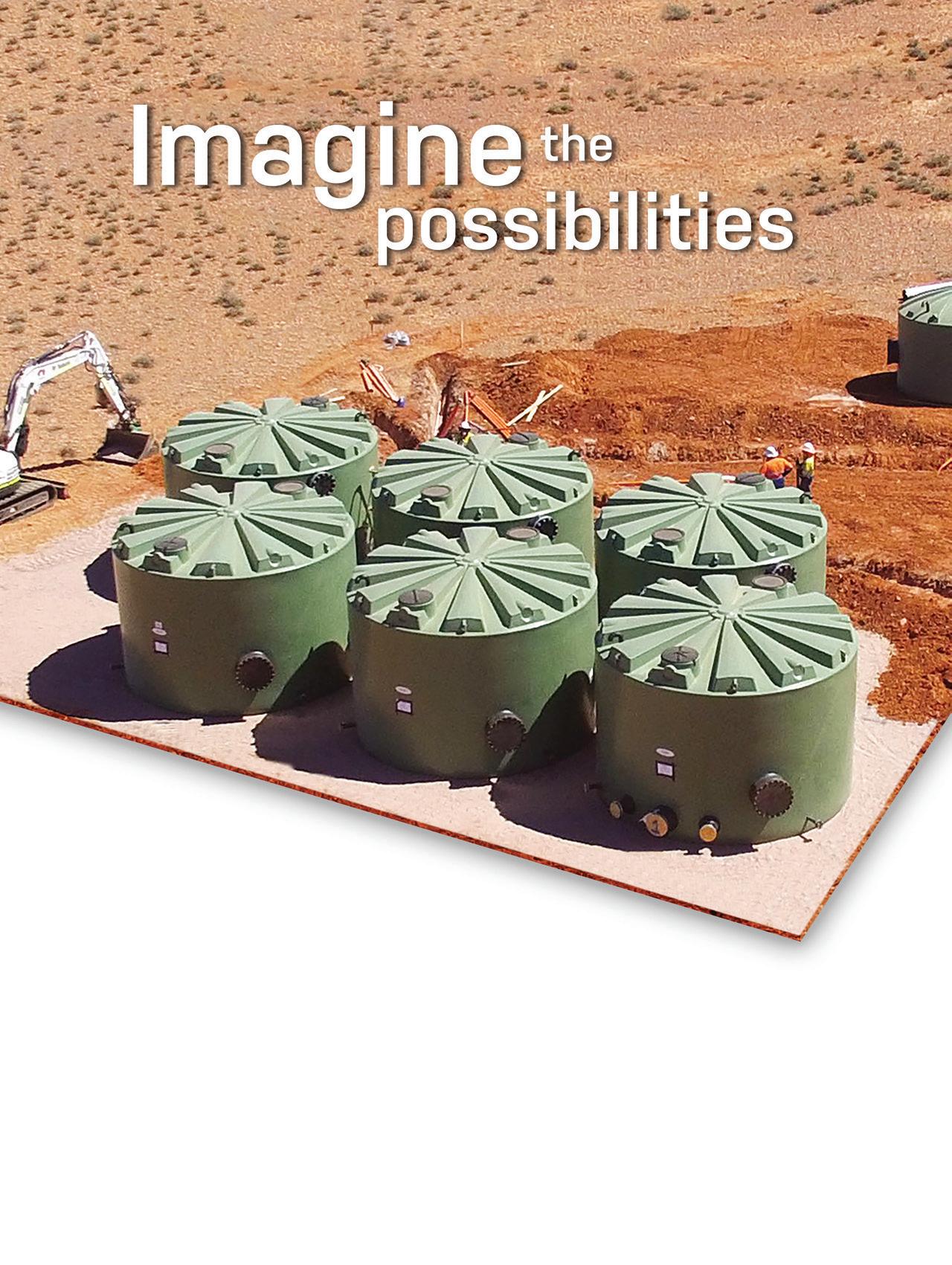
UTILITY • AUGUST 2019 WWW.UTILITYMAGAZINE.COM.AU 4
(WESTERN POWER SAPS TRIAL. SOURCE: STAND-ALONE POWER SYSTEM PILOT - ONE YEAR ON, WESTERN POWER)
What you can do today with a poly tank is really only limited by your imagination. They are stronger, more versatile and easier to install on site than ever before...

• Engineered up to 2SG
• Hydrostatic Tested
• 1965 Chemicals can be stored
• Certified Design
• Purpose built SLUDGE TANKS | INDUSTRIAL PROCESS TANKS | CHEMICAL BUNDED TANKS
OUR RANGE OF INDUSTRIAL TANKS
1300 062 064 | industrial.polymaster.com.au
While disappointed with the recent Federal Court ruling on flushable wipes, WSAA continues to lead the development of an Australian Standard for Flushable Products.

The issue of wipes and other products increasingly contributing to sewage blockages is global. In the UK, water utilities say it costs £100 million annually to clear blockages caused mainly by wet wipes. In the US there is a similar story, with New York City’s wastewater management saying removal of blockages involving wet wipes has cost $18 million in the

last five years. Here in Australia it’s no different, with water utilities each spending millions of dollars on the problem.
While the Federal Court dismissed the case against Kimberly-Clark, Justice Gleeson also concluded that “there was ample evidence that ‘wipe’ products generally are a significant management problem for municipal sewerage systems, impairing the

function of infrastructure and increasing maintenance costs”.
The impact of these blockages –sometimes called ‘fatbergs’ – include disruption to customer services, extra costs for water utilities and customers, and environmental contamination through sewage overflows.
Moving forward, WSAA notes the court decision highlights the urgent need to develop an appropriate standard for Australia. WSAA continues to call for clearer labelling for consumers and is leading the development of an Australian Standard for Flushable Products. The standard will soon be released for public consultation and is expected to be finalised by the end of 2019.
Once published, the standard will include pass/fail criteria and clear specifications to design products that are compatible with the sewerage network in Australia. The standard is being developed by manufacturers, water utilities, peak bodies and consumer groups.
Until the standard is finalised we advise consumers to only flush the 3Ps – Pee, Poo and toilet Paper!
PHOTO CREDIT: SYDNEY WATER
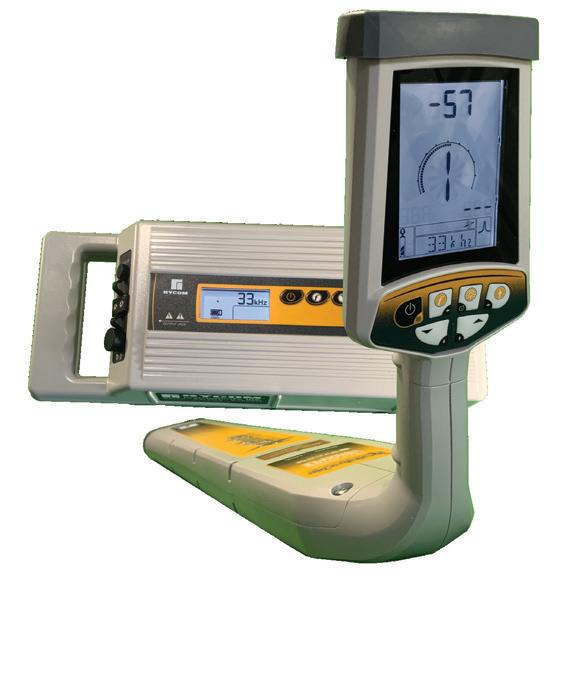





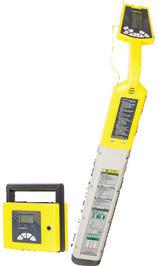
ERM POWER INVESTS IN AUTOMATION AND ELECTRICAL ENGINEERING COMPANY

Energy retailer and energy solutions provider ERM Power has announced the acquisition of 50 per cent of industrial automation and electrical engineering company, Alliance Automation, with a $8.1 million investment.
Alliance Automation is one of the largest independent electrical engineering and automation solution providers in Australia, with a team of more than 190 people and offices in Queensland, New South Wales, Victoria and South Australia.
Alliance Automation was founded in 2010 and specialises in delivering value-adding industrial automation solutions, consultancy and support to customers in a range of sectors, including manufacturing, infrastructure, water and wastewater, oil and gas, and mining.
ERM Power CEO, Jon Stretch, said he was delighted to enter into a strategic relationship with Alliance Automation.
Mr Stretch said the investment was an excellent fit for ERM Power, given Alliance Automation’s core capabilities in technical consultancy, process automation, business intelligence, industrial automation solutions, electrical engineering design, manufacturing and site installation.
“Ten years of energy policy malaise has caused electricity prices to increase and reliability to decrease. The continued lack of enduring national policy means Australian businesses need to take control of their costs and invest in improving their energy productivity,” Mr Stretch said.
“ERM Power is focused squarely on helping commercial and industrial businesses manage their electricity supply and demand, which means either reducing how much they use or changing when they use energy to lower cost periods, and that’s where process automation engineering comes in.”
Mr Stretch said Alliance Automation’s expertise in automation and control would deepen ERM Power’s ability to design holistic solutions that would help businesses to use energy more efficiently.
“Demand side control takes on a new importance given the move to a five-minute market,” Mr Stretch said.
“Capability in automation and control strategy gives ERM Power greater ability to design and implement demand response strategies for businesses.”
Alliance Automation Managing Director, Matt Griffiths, today said he was excited about the opportunities for the business’s growth and said ERM Power was a great fit for the business both from a commercial and cultural perspective.
“The ability to partner with a large, reputable Australian business like ERM Power will help us further scale our business and help transform businesses’ systems and processes for greater energy productivity.”
The investment will be immediately EPS accretive and complements ERM Power’s energy solutions capability and strategy. It will be financed from existing facilities, consistent with previously announced plans to invest up to $60 million in organic and inorganic opportunities in energy solutions. Alliance Automation’s annual turnover is more than $35 million.
Today’s announcement follows ERM Power’s acquisition in September 2018 of industrial energy efficiency business Out Performers, which bolstered its energy solutions’ capability in large-scale industrial project expertise, gas productivity and energy efficiency certificate creation.
“The combination of ERM Power and Alliance Automation enables us to drive value through productivity at all levels for manufacturing and complex industrials, in a way we believe to be unmatched in the market,” Mr Stretch said.
8 NEWS UTILITY • AUGUST 2019 WWW.UTILITYMAGAZINE.COM.AU
Industrial pollution targeted IN NEW STORMWATER TECHNOLOGY TRIAL
In an Australian first, Melbourne Water is set to trial realtime monitoring technology of an industrial stormwater catchment at Dandenong Creek to address industrial pollution following a high-profile foam pollution event in November 2017.
Senior Planning Engineer from Melbourne Water, Heath Baker, said that following the foam spill the community, Melbourne Water and Knox City Council were keen to find a solution that prevents spills, and enables a swifter response if one were to occur.
Melbourne Water has partnered with Monash University, South East Water, Knox City Council, EPA Victoria and First Friends of Dandenong Creek for the trial, which utilises both new and existing technologies.
“The long-term prospect is to have an automated system that alarms as soon as an ‘abnormal’ event occurs. This would allow crews to respond more quickly and to help identify the source of the contaminant,” Mr Baker said.
“The system will help monitor infrastructure and raise awareness of best practice for industrial businesses to reduce pollution.
“Ultimately, a system such as this also should assist with prosecution of those who pollute our waterways.”
Seven Advanced BlokAid loggers (developed by South East Water for use in sewers) and 25 Arduino loggers (developed


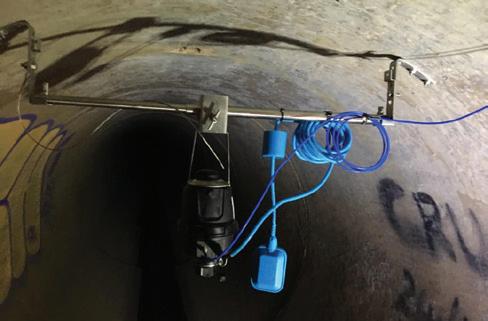
by Monash University) have been installed in drains and in the creek under the industrial estate in Bayswater, in Melbourne’s east. These provide data in real time that can detect, track and source pollution events.
The Advanced BlokAid units are an ultrasonic device attached within Melbourne Water’s trunk drainage network. The units also have H2S and VOC gas detection capabilities.
These units can detect flow within the network that does not correlate to rainfall events, helping to trace where suspect flows originated from. The Arduino loggers identify the pollutants in the water, helping to identify the pollutant discharged.
“We’re very excited about the prospects for this technology and hope it can be installed in other industrial areas,” Mr Baker said.
“Melbourne Water has worked with the local community to significantly upgrade Dandenong Creek and it is now a popular local amenity, recently winning two Australian Water Association awards for the Enhancing Our Dandenong Creek program, of which the pollution detection and prevention project is part of.
“Reducing pollution into it and other waterways is always a high priority, and we hope this technological solution can help us to do this.”
PLS-CADD
Design
Conductor
Underground
Fibre
Transformer
Testing

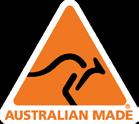


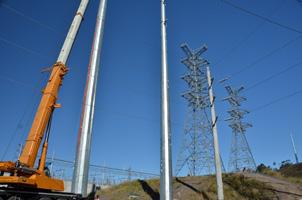

AUST RAL I A WI DE · COMMUNI CAT I ON & POWERL I NE · AUST RAL I AN MADE WWW FUTUREAU COM AU SALES@FUTUREAU COM AU +61 8 9417 4999 Lattice Towers
Monopoles
Steel
powerline profiling
and install foundations
and OPGW stringing
cable installation
optic cable installation
compounds
and commissioning NEWS 9 UTILITY • AUGUST 2 019 WWW.UTILITYMAGAZINE.COM.AU
COURT RULES KIMBERLY-CLARK ‘FLUSHABLE’ WIPES CLAIM NOT MISLEADING

The Federal Court has dismissed a case instituted by the Australian Competition and Consumer Commission (ACCC) against Kimberly-Clark and their ‘flushable’ branded wipes.
The ACCC alleged that KimberlyClark was misleading consumers about the suitability of its wipes to be flushed down the toilet by describing
its products as ‘flushable’ on product packaging and its website.
The ACCC argued that KimberlyClark’s wipes did not break apart quickly once flushed and therefore should not have been considered ‘flushable’, however the Court found that Kimberly-Clark’s claims were not false or misleading.
The Court ruled there was insufficient evidence to show that Kleenex Cottonelle ‘flushable’ wipes in this case, as opposed to ‘wipes’ products more broadly, had contributed to the problems in municipal sewerage systems.
The Court also found that it was reasonable for Kimberly-Clark to rely on guidelines, developed largely by nonwovens industry associations, to substantiate its ‘flushable’ claims.
The ACCC had argued these guidelines were not an independent testing regime, as they were developed by the manufacturers of ‘flushable’ labelled products, without substantial input from wastewater authorities.
The Court noted that Kimberly-Clark did not expect its wipes to fully disperse in the sewerage system and that the wipes had inferior properties of breakdown and dispersion than toilet paper.
The Court noted this was consistent with a conclusion the wipes posed a risk of harm to the sewerage system, but there was insufficient evidence this harm actually occurred, except in limited circumstances.
THE MONSTER IS TURNING BLUE...

The Muffin Monster™ sewage grinders are designed to protect pumps and other equipment by grinding down the toughest wastewater solids. Available in three different models each with two different configurations, they are suitable for applications such as:
• Pump Stations
• Sludge Processing
• Correctional facilities
• Airports • Septage/Grease Receival
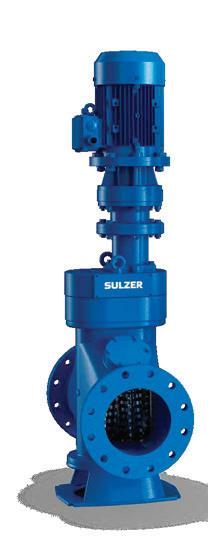


10 NEWS UTILITY • AUGUST 2019 WWW.UTILITYMAGAZINE.COM.AU
1800 678 910 sales@qmaxpumping.com.au www.qmaxpumping.com.au
ACCC Chair, Rod Sims, said that the ACCC took action because it was concerned that consumers were being misled about the very nature of the product they were buying.
“We also took this case because we are aware of increasing problems reported by Australian water authorities as a result of non-suitable products being flushed down the toilet and contributing to blockages and other operational issues,” Mr Sims said.
“The ACCC is carefully considering the Court’s decision.”
While the Court dismissed the ACCC’s case in relation to the suitability of Kimberly-Clark’s wipes to be flushed, the Court did find Kimberly-Clark made a false representation when it claimed its wipes were made in Australia, in breach of the Australian Consumer Law. In fact, Kimberly-Clark’s Kleenex Cottonelle range of wipes were variously made in Germany, South Korea and the UK.
“Kimberly-Clark misled consumers into thinking they were purchasing an Australian product when this was not the case,” Mr Sims said.
“Businesses must not mislead consumers about where their products are made, or they risk facing court penalties.”
Last April, in a similar case brought against consumer products group Pental, the Federal Court ruled in favour of the ACCC.
Pental was fined $700,000 for making false and misleading representations about its White King ‘flushable’ toilet and bathroom cleaning wipes.
Sydney Water spokesperson, Peter Hadfield, said, “We are obviously disappointed with the decision, but we must abide by the Federal Court ruling.
“Sydney Water removes over 500kg of wipes from our network every year at a cost of over $8 million dollars.
“We commenced our ‘keep wipes out of pipes’ campaign in 2015 and we have seen positive behavioural change in our customers. Hopefully the decision by the Federal Court won’t set back this behavioural change.
“Customers across Australia have been hit with expensive plumbing bills to remove blockages or to repair damage to their private sewer pipes caused by flushing wet wipes – one Sydney Water customer reported a $16,000 plumbing bill to repair damage to her sewer pipes caused by her flushing wet wipes!
“Despite the Federal Court decision, in order to save the environment and to prevent


expensive future plumbing bills for Australian households, it is up to all consumers to stop flushing wet wipes or any other bathroom or personal hygiene products down the toilet.”
A hearing in relation to KimberlyClark’s ‘made in Australia’ claims will be held at a later date.
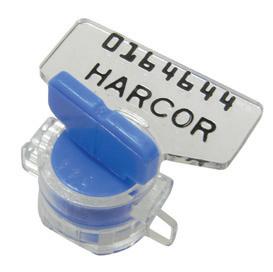
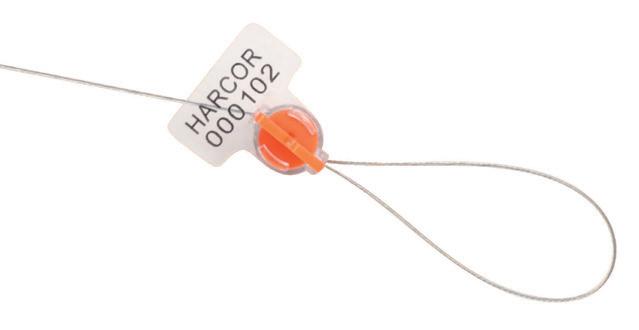


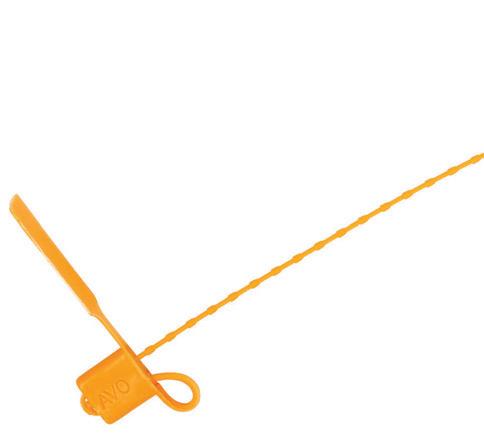

NEWS
harcor.com.au Master Security Licence No. 407319937 For More Information Visit Expose Unauthorised Access Trackable Serial Numbering Email sales@harcor.com.au
SINCE 1969 UTILITY • AUGUST 2 019 WWW.UTILITYMAGAZINE.COM.AU
FRTO METER SECURITY SEALS
RELIED UPON
11
SA WATER CLAIMS VICTORY AT AUSTRALIAN IoT AWARDS
SA Water’s smart wastewater network has celebrated success at the Australian Internet of Things (IoT) Awards for the second consecutive year, with the corporation’s smart technology claiming Best Industrial IoT Project for 2019.
Winning two accolades at the 2018 awards ceremony, the success further recognises the step change in customer experience achieved by the utility after rolling out its smart water and wastewater network across South Australia.
SA Water’s Senior Manager Asset Management, Peter Seltskas, said SA Water was honoured to receive the awards and the stamp of approval they bring for the corporation’s pioneering network of IoT technology.
“This is terrific recognition for our team who have worked tirelessly to trial this exciting new technology in our extensive wastewater network and deliver better outcomes for both our customers and the environment,” Mr Seltskas said.
“We’ve identified and proactively repaired a significant number of leaks in Adelaide’s water delivery network since implementing our smart water network trial in the CBD around two years ago, and it’s exciting that we are already seeing rewards in adapting this exciting IoT technology into our sewers too.”
SA Water’s smart wastewater network uses flow and level sensors to remotely monitor the movement of sewage in the trial area’s wastewater network.
Since installing more than 80 level sensors at Stonyfell in Adelaide’s eastern suburbs, five blockages have been detected and cleared, preventing overflow incidents most likely to have occurred during peak periods and preventing any potential impact to the nearby environment.
“By assessing the results at our world-class Operations Control Centre, we can then identify any abnormalities in the network and ensure we continue to deliver dependable sanitation services for our customers,” Mr Seltskas said.
“This award is a strong demonstration of our evolving approach in how we manage assets, and in particular, using precise data and new technologies to better meet our customer’s needs and expectations


Innovative Water Solutions
WATER TECHNOLOGIES
Through its innovative solutions, Veolia Water Technologies enables industry, local authorities and citizens to optimize their use of resources for more efficient, environmentally-friendly and socially responsible outcomes.
We understand the importance of increasing the value of water and we do so by supplying high quality water, treating and reusing wastewater, producing and/or recovering energy, extracting raw materials and capitalizing on valuable byproducts. www.veoliawatertechnologies.com.au
12 UTILITY • AUGUST 2019 WWW.UTILITYMAGAZINE.COM.AU
© Veolia Photo Library
NEWS

while gaining a better understanding of the infrastructure itself.
“We are embracing innovation and new technologies in improving services for customers, and we look forward to further expanding our smart networks across SA into the future.”
SA Water is also piloting other smart wastewater network technology in Gawler, north of Adelaide, where odour detection sensors and weather stations are helping improve the management of odour from the local sewer pipes.
The award is the latest in a string of accolades for SA Water’s smart network projects, including two prizes at the 2018 IoT Awards, and similar accolades at London’s Institute of Asset Management Awards and Tokyo’s International Water Association’s Project Innovation Awards.

NEWS 13 UTILITY • AUGUST 2 019 WWW.UTILITYMAGAZINE.COM.AU
BERRYBANK WIND FARM PROJECT FIRES UP
Work is now underway on Victoria’s $276 million Berrybank Wind Farm, which will feature 43 turbines and generate enough energy to power around 138,000 homes.
Minister for Energy, Environment and Climate Change, Lily D’Ambrosio, joined Victorian Premier, Daniel Andrews, and Member for Buninyong, Michaela Settle, on 21 June to mark the start of major construction on the project.
“This is an exciting next step in driving down energy prices, reducing carbon emissions and creating jobs as we work towards our renewable energy target of 50 per cent by 2030,” Ms D’Ambrosio said.
The extensive project will be built by Global Power Generation (Naturgy Energy Group) and will boost renewable energy supply, as Victoria moves towards the government’s renewable energy target of 50 per cent by 2030.

The 180MW wind farm will provide a major boost to the local economy, delivering 213 construction jobs and 24 apprenticeships, with wind turbine assembly set to recommence in Australia for the first time in ten years.
The brand-new Vestas Renewable Energy Hub on the former Ford site in Geelong will build the turbines for this project, which will be underpinned by 64 per cent local content under the government’s Victorian Industry Participation Policy.
To support ongoing turbine maintenance, wind turbine technician training will also be delivered in Ballarat by Federation University.
Berrybank Wind Farm was made possible through the government’s Victorian Renewable Energy Target (VRET) reverse auction, which will see more than 900MW of new clean energy developed – almost 45 per cent more generation capacity than anticipated – helping to drive down energy prices for Victorian families.
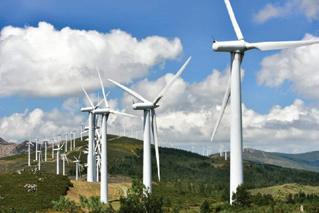
Together, these projects under the reverse auction will generate over $1.1 billion in economic investment and create more than 900 jobs, including 270 apprenticeships and traineeships in regional Victoria.
It is expected that achieving the VRET 2025 target of 40 per cent alone will drive around $7.2 billion of investment and create more than 10,000 jobs, and boost the amount of energy generated by renewable sources.
The Berrybank Wind Farm is expected to commence operations in late 2020.

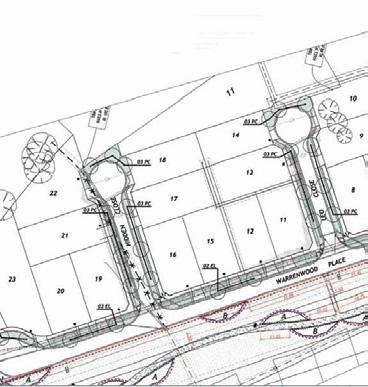




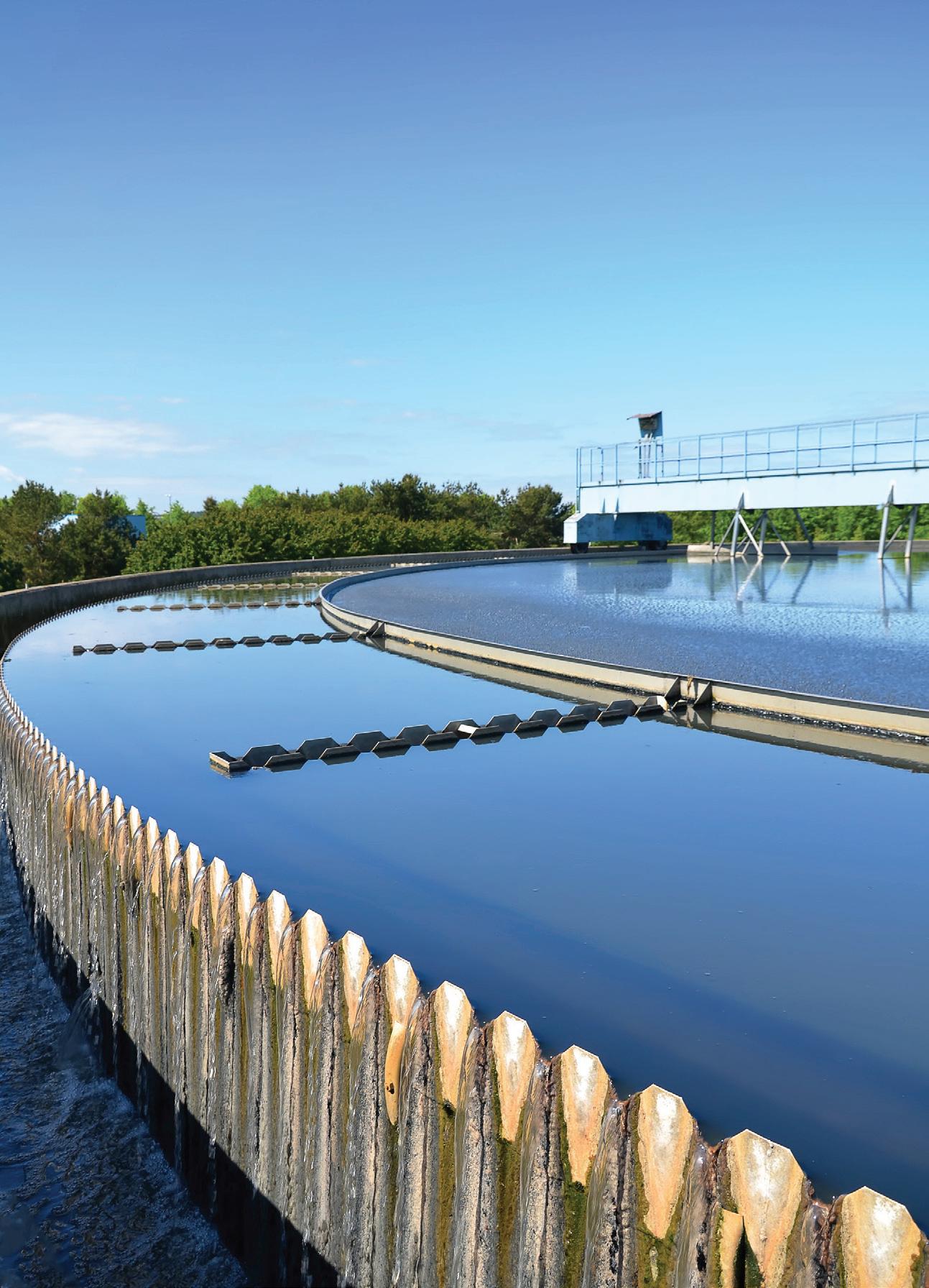
14 NEWS UTILITY • AUGUST 2019 WWW.UTILITYMAGAZINE.COM.AU tenders@lancogroup.com.au | www.lancogroup.com.au | 1300 1 LANCO (1300 152 626) Civil and Infrastructure Engineering | Project Management
Access intelligent data securely
Constantly sourcing the latest advancement in technology to enhance systems, NHP releases the Aparian DNP3 router with Secure Authentication v5 which enables the user to connect DNP3 devices to a Logix platform in a highly secure environment.
The DNP3 Router provides intelligent data routing between EtherNet/IP and DNP3 (serial, Ethernet UDP, or Ethernet TCP) with built-in secure communications. The module also provides a range of statistics and traffic analyser to help fault find any problems.

Ensure secure, reliable and readily available data with the Aparian DNP3 Router from NHP.
To find out more, visit nhp.com.au/more/dnp3

NHP ELECTRICAL ENGINEERING PRODUCTS
1300 NHP NHP | nhp.com.au |

UTILITY 114739 0619
EXPLOSION ROCKS MORTLAKE POWER STATION
An explosion at the gas-fired Mortlake Power Station in Victoria has caused significant damage to a generator, taking it out of operation.
The explosion was caused by an electrical fault and damaged one of its two generating units at around 6am on Monday 8 July. No one was injured in the blast.
Origin Energy, the operators of the plant, confirmed the accident has halved the station’s capacity.
An Origin spokeswoman told the Herald Sun that the electrical fault activated the generator’s fire detection system, and said the Country Fire Authority (CFA) was on site for more than two hours.
CFA Commander, Paul Marshall, told 3AW that his initial discussions with Origin staff suggested it may take six months to repair the generator.
Mr Marshall said the explosion was “rather large”, and would “obviously take a while to rectify”.
“The energy that was produced from the explosion has brought a fair amount of damage inside that building,” he said.




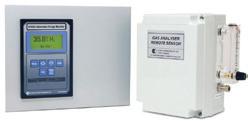


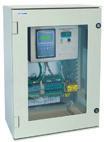
However, there was no following fire after the initial blast.
“The bulk of the machinery itself is still intact, but there has been a large outward pressure which has bent a lot of metal casings up, and has done significant damage on the inside of the turbine.”
Mr Marshall said it was lucky that the explosion occurred at the time it did.
“Certainly, if there had been any people in the area, there probably would have been injuries,” he said.
Origin Energy made an official statement on the explosion on Tuesday 9 July saying that following the blast, the Country Fire Authority attended the site and returned operational control to Origin within three hours, with no harm to people nor any adverse impact on the local community.
The power station now continues to operate with the remaining generator available to supply the grid.
Origin has announced that, following an initial assessment of the impacted unit, it expects to bring that unit back online by 20 December 2019.
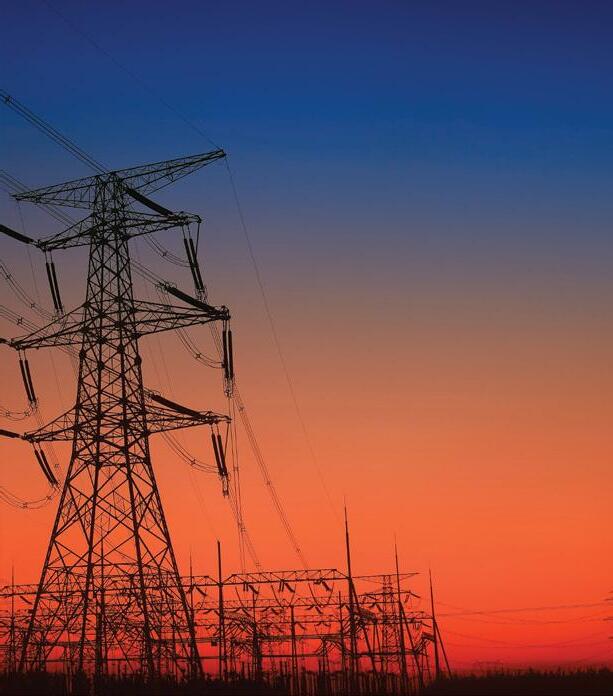



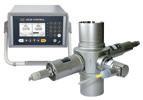
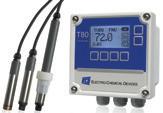





16 NEWS UTILITY • AUGUST 2019 WWW.UTILITYMAGAZINE.COM.AU NSW Ph: 02 8197 2825 WA Ph: 08 9201 0948 QLD Ph: 07 3333 2825 SA Ph: 03 9017 8225 Head Office: Unit 20, 51 Kalman Drv Boronia VIC 3155 Ph: 03 9017 8225 Fax: 03 9729 9604 www.ams-ic.com.au sales@ams-ic.com.au AMS Instrumentation & Calibration Pty Ltd Analytical Process Division Oxygen Analysers, Thermal Conductivity Analysers, NDIR Analysers, Multigas Analysers, OEM Analysers U.V Absorption Conductivity pH / ORP Colour Industrial Water Analysers and Liquid Analytical Products (pH, Conductivity, ORP, Dissolved Oxygen, etc) Oxygen Analysers, Relative Humidity Sensors and Meters, Dewpoint Measurement
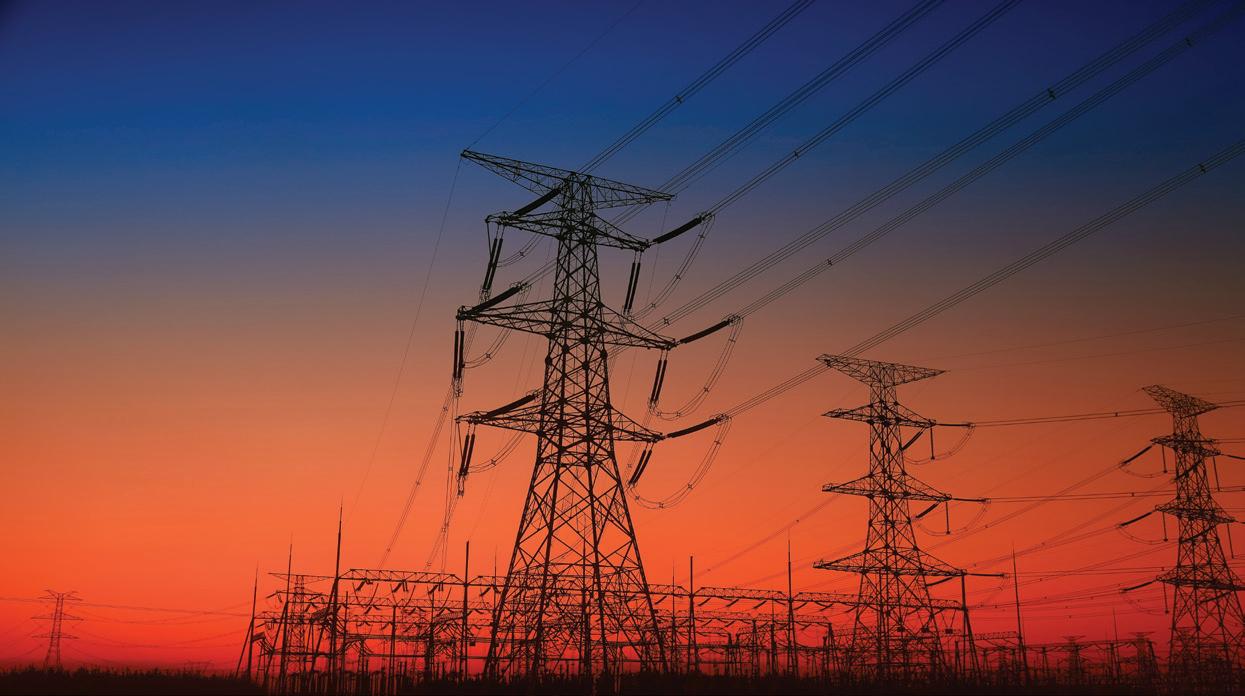
Executive General Manager, Energy Supply and Operations, Greg Jarvis, said that Origin will work with the market operator and its suppliers with the aim of making the damaged unit available ahead of the summer peak to reduce the impact on customers. Mortlake is a gas peaking power station and the impacted unit represents less than three per cent of Victoria’s total installed generation capacity


●
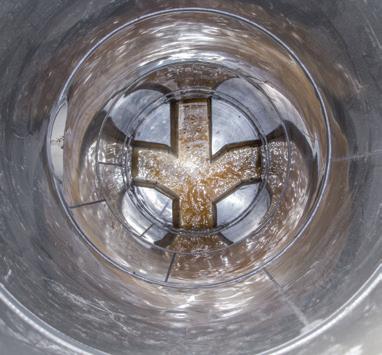
●

●

www.mcrobertcontracting.com.au
NEWS 17 UTILITY • AUGUST 2 019 WWW.UTILITYMAGAZINE.COM.AU
0666
08 9411
office.admin@mcrobert.com.au
3D LASER SCANNING AND ASSET INSPECTION
MANHOLE REFURBISHMENT
SEWER PUMP STATION REFURBISHMENT
CONSTRUCTION OF THE ATLAS GAS PIPELINE COMMENCES
Queensland’s Atlas Gas Pipeline is on the way with energy infrastructure company, Jemena, commencing construction on the project on 8 July 2019.
Located approximately 20km south-west of Wandoan in Queensland, the Atlas Gas Pipeline Project will see Jemena and its partners construct a 60km, 8 inch steel-coated, buried gas pipeline and compressor station, which will connect gas from Senex Energy’s Atlas gas field to the east-coast gas market via the Wallumbilla Gas Hub.
The Atlas acreage is Queensland’s first domestic-only gas supply with all gas ear-marked for the domestic market.
Jemena’s Executive General Manager of Gas Markets, Antoon Boey, said construction and commissioning of the Atlas project is expected to be complete before the end of 2019.
“We are currently in the early stages of construction, with around 90 people
on site conducting clear and grade and stringing activities, and we expect this work to ramp up quickly over the coming weeks,” Mr Boey said.
“The Atlas pipeline and processing facility have been designed to enable further expansion once additional gas reserves become available from the Atlas production area.”
Jemena recently awarded Spiecapag Australia a $20 million contract to construct the Atlas Gas Pipeline, while Australian energy and infrastructure services group, Valmec, has been appointed to construct the Atlas Compressor Station.
In total, Jemena will invest around $140 million to construct the Atlas Gas Pipeline Project which is expected to create around 150 to 200 jobs in Queensland.
Mr Boey said Jemena was working hard and in partnership with gas exploration companies to bring new gas to Australian homes and businesses.
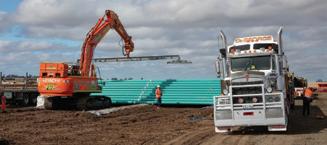
“We are acutely aware that Australia faces a gas supply crisis and Jemena is investing heavily in new gas transmission infrastructure to bring new gas supplies into the market. Moving gas from where it is produced to the markets where it is needed at the lowest possible cost and doing so safely and reliably is of utmost importance to Jemena,” Mr Boey said.
“As we transition to a low-carbon future, gas will play an increasingly important role in complementing intermittent renewable technologies such as wind and solar generation that, currently, are unable to provide firming power. It will also continue to play an essential role for industries which rely on gas as a primary input into their production processes.”
Need Help Solving Your Water Challenge?
Simmonds & Bristow are an integrated water management consultancy, supporting clients throughout Australia and our near neighbours with services related to water infrastructure, water efficiency, water quality and water quantity. We provide our clients with access to our highly experienced water industry professionals encompassing:
• Plant Operations
• Scientists
• Engineers
• Trainers
Be assured with S&B on your side, you can trust us to provide strong, sensible, practical, financially sound advice and conclusions.




18 NEWS UTILITY • AUGUST 2019 WWW.UTILITYMAGAZINE.COM.AU
sales@simmondsbristow.com.au | www.simmondsbristow.com.au RTO 1735 ABN 33 010 252 418 S&B Utility August 2019. Contact us today on 1800 620 690 Email: info@simmondsbristow
AEMO INSIGHTS PAPER HIGHLIGHTS THE IMPORTANCE OF PUMPED HYDRO

The Australian Energy Market Operator (AEMO) has released an Insights paper that provides new perspectives and deeper analysis on the important role pumped hydro energy storage and strategic transmission developments can play in lowering costs to consumers and increasing the resilience of the National Electricity Market.
The paper is a supplement to the 2018 Integrated System Plan (ISP) and identifies transmission investments needed to connect pumped hydro storage options with customers in NSW, Victoria and Tasmania.
Energy Networks Australia Acting Chief Executive Officer, Tamatha Smith, said that around the world, the logical response to growing levels of renewable generation was to create a more connected system.
“Transmission is our electricity superhighway and more strategically placed transmission means more power can reach more customers with greater reliability,” Ms Smith said.
“Coordinated investments in transmission and interconnections between states will ensure electricity from new generation can be shared across the National Electricity Market.
“This will support better reliability and system security as coal-fired power stations retire and put downward pressure on wholesale prices, which means lower bills for customers.”
Snowy Hydro 2.0 in NSW and the Battery of the Nation Project in Tasmania offer significant potential for
storage and electricity generation, but will require new transmission links to unlock their full potential.
“The priority for network businesses is to keep costs for customers as low as possible while ensuring new generation can be integrated into the electricity system efficiently,” Ms Smith said.
“Transmission costs are a very small component of power bills and a more connected system is a more competitive system, which will put downward pressure on power prices.
“As highlighted by AEMO, it will be important the projects identified in the ISP and Insights paper are progressed in a timely manner. It also is important that we have regulatory and policy certainty to support the investment required.”
Hydro Tasmania’s Chief Executive Officer, Steve Davy, said the Insights paper reaffirms that the future National Electricity Market will need the clean, reliable and affordable energy that Tasmania can provide.
He highlighted that AEMO’s study outlines that early preemptive development of strategic interconnection such as Marinus Link would cost effectively increase the resilience of the power system if coal-fired generation were to close earlier than expected. In this scenario, 4.1GW of storage capacity will need to be installed by 2030.
“Tasmania has what the rest of the country needs — Battery of the Nation represents one of the most reliable and
cost-competitive solutions for meeting Australia’s future energy needs,” Mr Davy said.
“Tasmania has significant storage capacity just waiting to be developed and our long duration pumped hydro is one of the most cost-competitive storage options available.
“One of the major advantages of our pumped hydro is that it can be developed in stages, which will ensure ongoing reliability and energy security as the market develops.”
The Australian Energy Council’s Chief Executive, Sarah McNamara, said that proposals in AEMO’s Insights paper will now need to be carefully considered for their costs and benefits through the usual independent processes overseen by the Australian Energy Regulator.
“AEMO’s paper seeks to forecast and address the issues emerging with the growth of renewables supported by federal and state government targets, increased scope for large-scale storage systems to connect to the grid and the aging of existing generation plant,” Ms McNamara said.
“Each transmission and network investment will unavoidably affect market investments, so they need to be individually assessed.
“This is critical to ensure not just the appropriate timing, but also the cost-effectiveness for customers who will pay for the new links, as well as providing a predictable framework for generation investors.”
NEWS 19 UTILITY • AUGUST 2 019 WWW.UTILITYMAGAZINE.COM.AU
AUSTRALIA’S LEADING UTILITY ASSET MANAGEMENT PROFESSIONALS TO GATHER IN SYDNEY
From 20–21 August at Swissôtel in Sydney, Australia’s leading experts across the utility and infrastructure sectors will assemble to take part in the nation’s fastest-growing asset management event and discuss the latest challenges and opportunities in the space.
The nature of the utility and infrastructure sectors is constantly shifting. Changing industry standards, Australia’s growing population and the effects of climate change are placing new pressures on asset managers; yet at the same time, new technologies are revolutionising the way we maintain and optimise our critical assets.
Amidst such transformation, it’s now more important than ever that asset managers have access to the latest information and the newest approaches.
Now in its third year, the Asset Management for Critical Infrastructure Conference and Exhibition is the place to be for updates on projects, processes and technologies to better manage Australia’s critical assets.
Over two days in August, the event will feature individual presentations, industry panels, networking sessions and targeted topic streams, providing attendees with practical applications to improve the way assets are managed.
Created by Monkey Media, the team behind Utility magazine, as well as other industry events including Digital Utilities and Smart Cities, the event will provide all the latest industry news and sector issues in a live format, with senior managers from power and water utilities, and infrastructure asset owners around Australia attending.
The speaker lineup includes representatives from utilities including: Sydney Water, Icon Water, Western Power, Powerlink, Jemena, ElectraNet, Infrastructure Australia, KPMG Australia, the ARTC, VicTrack, the Institute of Quality Asset Management and more.
MEET OUR SPEAKERS
Romilly Madew AO, CEO, Infrastructure Australia
Having led the Green Building Council of Australia for 13 years, Romilly is recognised around the world as a leader and advocate for change in the property and construction sector, earning an Order of Australia for her service. As the new CEO of Australia’s peak infrastructure authority, Romilly brings a broader understanding of the nation’s critical infrastructure.
Romilly’s keynote presentation will examine the ways asset managers can mitigate risk and develop comprehensive, long-term resilience strategies in the face of new challenges.
Dr Penny Burns, Chair, Talking Infrastructure Association
Penny is an infrastructure economist and asset management strategist who invented the modern idea of asset management in Australia. Her extensive industry experience includes roles as a foundation board member
of the Asset Management Council, two decades as Editor and Publisher of AMQ International’s Strategic Asset Management, as well as direct ministerial and parliamentary review and advice.
Her presentation, Exploring the role of the future asset management strategist, will explore how asset managers can develop the right skills and ask the right questions to manage assets in the 21st century.
Carlos Gamez, Strategic Asset Performance Manager, Western Power
Carlos is a well-recognised electrical engineer and has worked across design engineering, product development, manufacturing, technology, software development and field engineering.
In 2007, Carlos moved to Perth to start up the Transformer Division at General Electric, before accepting the position of Principal Consultant with Assetivity in 2011, where he worked on projects within the Asset Management frameworks which eventually shaped the ISO 55000 set of standards.
In 2014, Carlos joined the MM Group to grow the TxMonitor business unit. He then moved to Western Power in 2016 as Team Leader of Operational Asset Performance and then transferred into the role of Technical Lead of one of the Corporate Strategic Initiatives.
20 NEWS
UTILITY • AUGUST 2019 WWW.UTILITYMAGAZINE.COM.AU
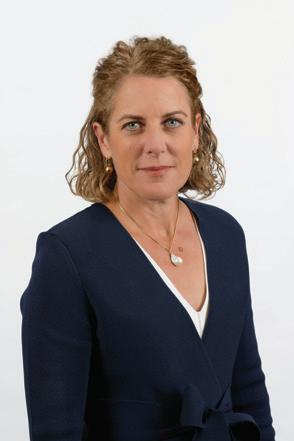

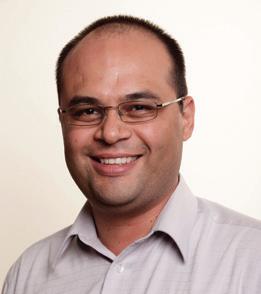
A NEW AND IMPROVED PROGRAM
Each year, we refine the conference program based on feedback from past delegates and Utility readers who tell us what topics they want explored in depth. In 2019, the event will feature four dedicated streams exploring the biggest issues facing asset managers. These streams are:
CASE STUDIES AND THE IMPLEMENTATION OF ISO 55000
This year, we’re introducing a brand new stream presenting case studies and practical advice on the ISO 55000 standards. Panellists include:
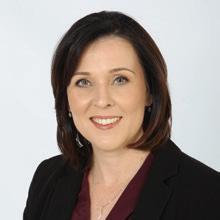
Tammy
Falconer,
Head of Asset Knowledge, Sydney Water
Having delivered solutions to millions of customers throughout her career, Tammy has a deep knowledge of how to drive change in both stateowned corporations and public sector organisations in order to meet everclimbing asset management standards.
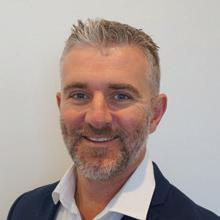
Matt Henson, Asset Management Systems Manager, Jemena
With an exclusively utilities-based career, Matt will bring crucial firsthand
experience from Jemena’s journey towards certification in ISO 55001 and ISO 27001
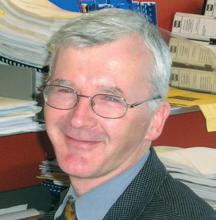
Tom Carpenter, CEO of the Institute of Quality Asset Management (IQ-AM) and Director, Asset Management Council
As a founding member of the ISO committee that developed the ISO 55000/1/2 standards, Tom’s insights will be invaluable to the panel, offering the perspective of those creating and reviewing regulatory compliance frameworks.
INSPECTION AND CONDITION MONITORING
In another new dedicated stream, panellists will discuss the technologies and approaches revolutionising inspection and condition monitoring processes. Speakers include:

Katherine
Katherine has a list of major achievements in asset planning and development of water infrastructure, including overseeing a major upgrade
to Icon Water’s condition assessment program.
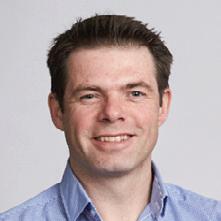
Matthew Primmer, Planning and Asset Development Manager, Port of Melbourne
With responsibilities across a broad range of infrastructure assets, Matthew will focus on asset management systems and strategic planning frameworks for port facilities.
MANAGING RENEWABLE AND ENERGY ASSETS
This dedicated stream is a mustattend for professionals in the energy sector, examining asset management at the intersection of the physical infrastructure, digital utilities and networks. Panellists include:

Lutfiye Manli, Senior Asset Management Strategy Advisor, Powerlink Queensland
With a PhD in Engineering Asset Management and over ten years’ experience in managing energy assets, Lutfiye has a comprehensive understanding of new ideas, approaches and changes in the sector.
21
Larkings, Team Leader – Asset Strategy and Investment, Icon Water
NEWS
ROMILLY MADEW
DR PENNY BURNS
UTILITY • AUGUST 2019 WWW.UTILITYMAGAZINE.COM.AU
CARLOS GAMEZ
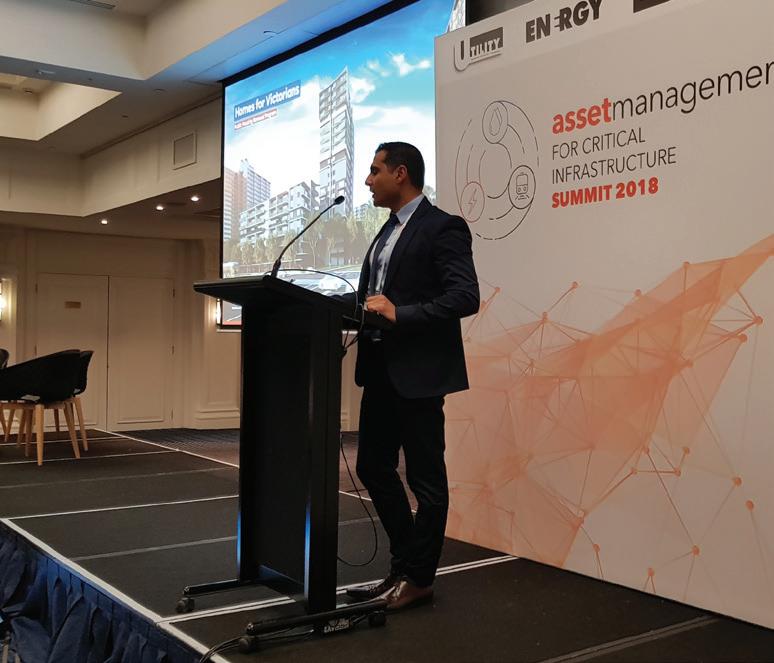

Rohan Fernandez, Manager – Strategic Asset Management, ElectraNet
Having accrued extensive experience working on optimising asset management practices within the technology domain, with a particular focus on cyber security, Rohan is well-placed to speak about enhancing our thinking in the energy space.

Sarah Hannah, Head of Asset Systems (Interim), Group Operations, AGL
Sarah is not your typical asset manager. She is responsible for the asset management systems across Australia’s largest portfolio of power generators. Whilst Sarah comes from a chemical and process engineering background, she brings a human touch to the industry. Sarah lives the value that people are our most important asset and bringing them along on the asset management journey is not an option, it’s essential.
The dedicated stream on asset management in the rail sector will also return in 2019 with a focus on the newest developments in the sector.
Speakers in this stream include Brian Green, General Manager – Asset Management, The Australian Rail Track Corporation and Dr Collette Burke, Chief Engineer of Victoria and Director at VicTrack.
Steve Doran, Director, Infrastream, will be the MC for the conference, bringing his vast asset management experience to connect the presentation and really cement the topics in delegates minds. Dr Andrew O’Connor, Partner – Engineering and Asset Management, KPMG Australia is also a special guest this year and will moderate two of the panel streams. Other speakers also include Tommy Viljoen, Leading Partner, Cyber Security Strategy and Governance at Deloitte Australia, who will explore how organisations can manage critical infrastructure cyber attack risk, and Dr Michael Moffatt, Principal Technology Leader, National Leader Infrastructure Management, Australian Road Research Board (ARRB).
THE BIGGEST ISSUES IN ASSET MANAGEMENT
In addition to the four targeted streams, we will also take a closer look at new asset management technologies and digital solutions, as well as methodological approaches and strategies behind those technologies. Topics that will be covered include:
• Data collection and analytics
• Creating digital asset strategies
• Protecting critical assets from cyber attacks
• Internet of Things
• Strategic asset management plans
• Planning best practice
• New assets vs maintaining existing assets
• Skills of the future and future asset manager capabilities
• And much more
22
NEWS UTILITY • AUGUST 2019 WWW.UTILITYMAGAZINE.COM.AU
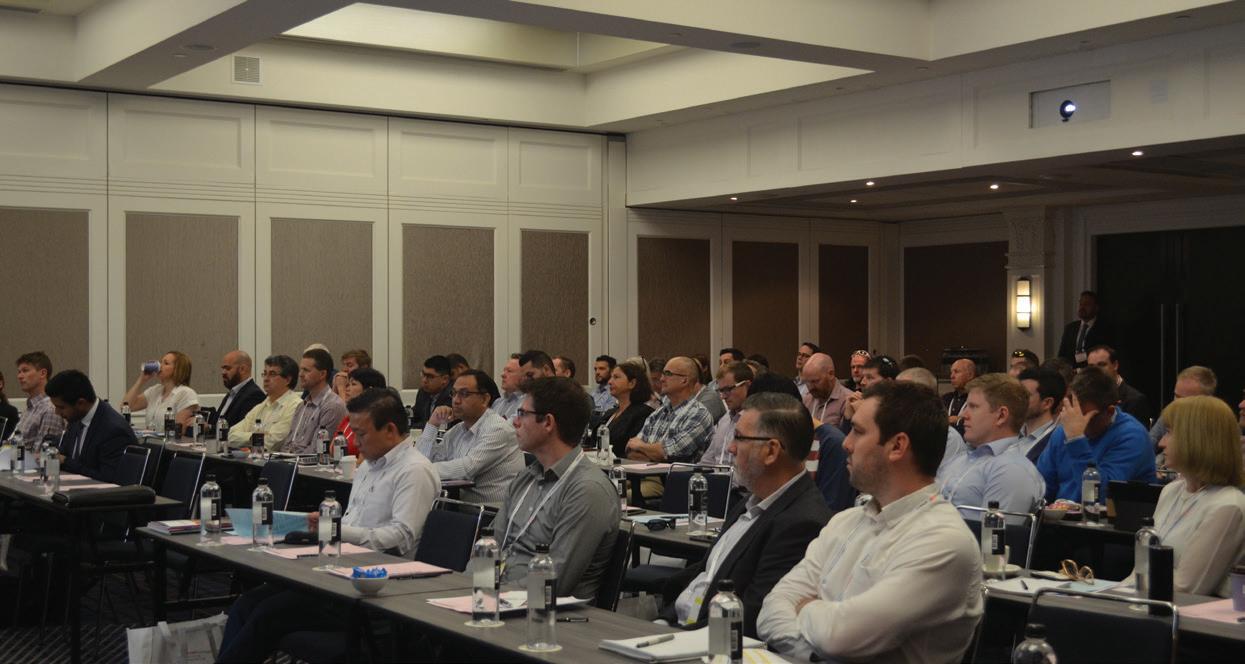
A CONFERENCE FOR INDUSTRY PROFESSIONALS
The event brings together senior leaders and C-suite level decision-makers from Australian utilities, infrastructure asset owners, industry associations, consultancies and government.
Last year’s event saw delegates from Sydney Water, Ausgrid, V/Line, Queensland Urban Utilities, Powerlink, Transport for NSW, Jemena, Port Authority NSW, Ergon, Energy Queensland, Pacific National, Essential Energy, Sunwater, City West Water, Origin Energy, SA Water, Port of Melbourne, KPMG, Infrastructure Australia, nbn co, TransGrid, WaterNSW, among others.
LEARN FROM OTHER SECTORS
In order to truly optimise your current practices and operations, it’s often essential to see what others both within and beyond the utility sector are doing.
That’s why Asset Management for Critical Infrastructure is the only asset management event in Australia that sees different sectors — from water to power, rail, roads and transport — come together to give delegates the opportunity to hear about each other’s successes and learn from their mistakes.
Curated networking sessions will allow you to not only speak with other people in your field, but also hear how other industries are dealing with similar asset management problems. With a comprehensive and multi-sector approach to conferencing, the event is sure to equip delegates with new perspectives and ideas to take back to the office.
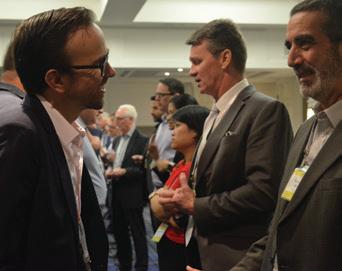
The 2019 Asset Management for Critical Infrastructure Conference will run from 20–21 August at Swissôtel in Sydney. Register at assetmanagementevent.com.au
If you’re interested in sponsoring or exhibiting at the event, you can download the prospectus on the website or email events@monkeymedia.com.au.
23 NEWS
UTILITY • AUGUST 2019 WWW.UTILITYMAGAZINE.COM.AU
Making water services
ACCESSIB
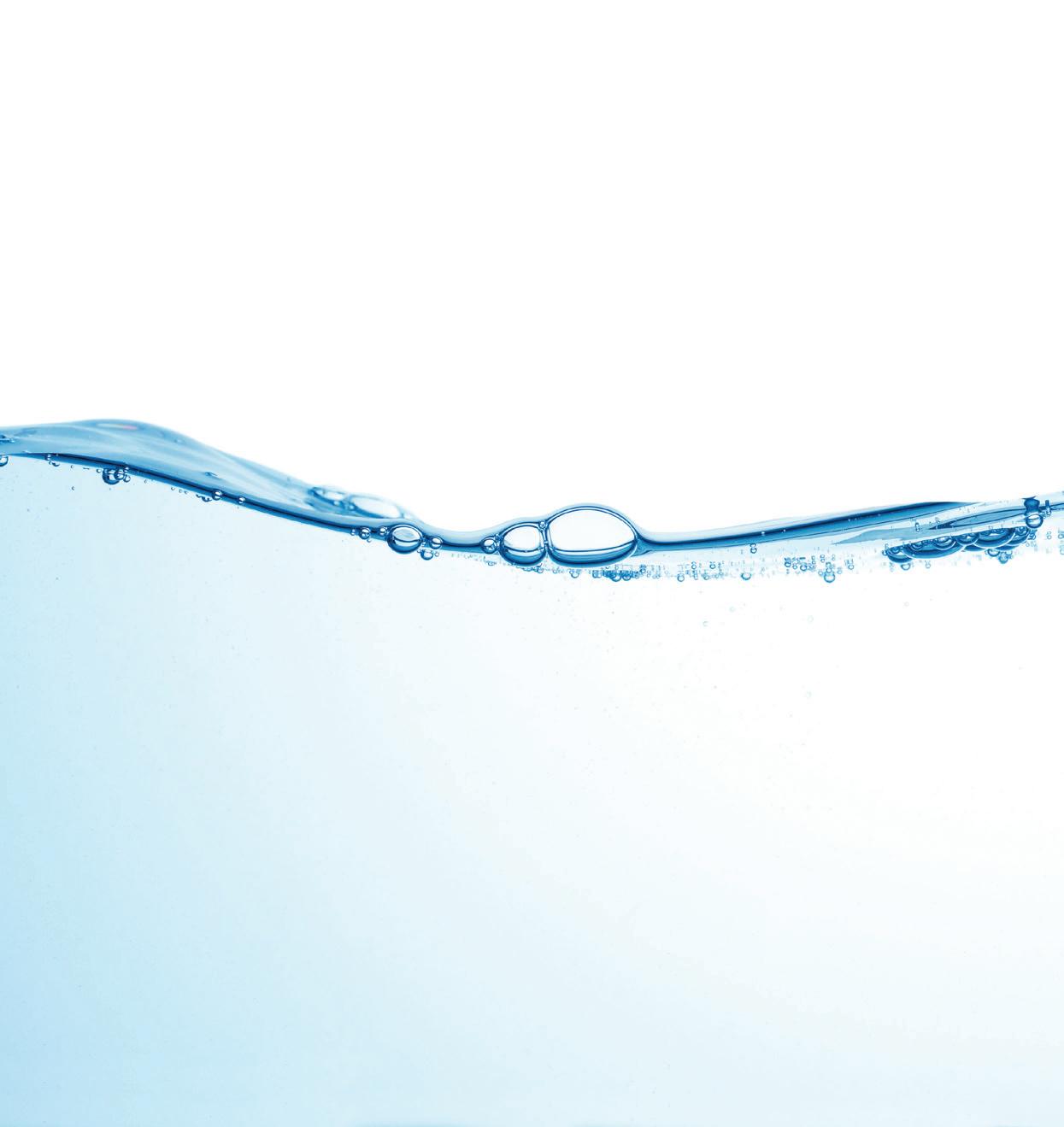
Essential water services will be more easily accessible to thousands of South Australians living with a disability or medical condition as part of an Australian industry-leading program being implemented by SA Water.
SA Water’s Wider World initiative uses universal design principles to deliver improved water services to benefit all of its 1.7 million customers, including simplified water bills, meter reading help, and eventually, bill support for customers with high needs.
According to data from the Australian Bureau of Statistics, around 21 per cent of South Australians live with a disability, with a further ten per cent providing informal assistance and 3.4 per cent acting as primary caregivers.
“I think it’s fair to say that it was probably a little bit of a blind spot for us as an organisation in terms of the service offering that we have for all of our customers,” SA Water’s General Manager Customer Delivery, Kerry Rowlands, said.
“Having met with our high-needs customers at a South Australian Council of Social Services (SACOSS) event in 2018, we realised that there were opportunities for both SA Water and the wider water industry to provide more inclusive services for customers living with daily challenges.
“One of these customers was Pamela, whose daughter Airlie had acquired a brain injury over 30 years ago. Pamela really eloquently described the challenges she had in looking after her daughter, and how important water was as part of that care.
“Trying to understand this kind of water use and infection control, how showers take so much longer because of strict hygiene requirements, was a real eye-opener. Airlie can have eight different carers in any one day, and they’re all washing their hands, they’re all using the toilet.
“If you’ve never walked a mile in someone else’s shoes, you often just don’t know what their life is like and therefore can’t appreciate the issues they face – and we needed to do that.”
UNDERTAKING THE INITIAL RESEARCH
SA Water has consulted with a number of organisations and community groups to better understand how it can make its services more accessible.
“Over the last 12 months, we have met with the Department of Human Services, SACOSS, and facilitated one-on-one meetings with our customers living with disabilities and their carers to help gain a full understanding of the challenges and experiences they face, and focus on areas where we could make changes over the coming years to help make their lives a little easier,” Ms Rowlands said.
“We carried out some targeted research with about a dozen people across the state and followed that up with a survey of around 50 members of our customer base living with a disability. An overwhelming number of responses highlighted a difficulty in reading their meter or high water usage as their biggest problems when it came to water.
“We also reached out to our own employee base and had 50 responses within the first 24 hours. These were employees that either lived with a disability, have a family member living with a disability or are carers.
“It was like they’d finally been asked and they were just so keen to share their views with us. We had people offering to come and have one-on-one conversations or more in-depth discussions with us.
“Through this, we created four distinct customer persona groups – customers with high needs, communication challenges, high information needs, or those needing help with tasks – which helped us map solutions and ways to enhance our services for customers.”
The wide-ranging nature of disability meant that it took SA Water several months to sort through the different information and make sense of it all.
UTILITY • AUGUST 2019 WWW.UTILITYMAGAZINE.COM.AU EMBRACING DIVERSITY 24
LE TO ALL
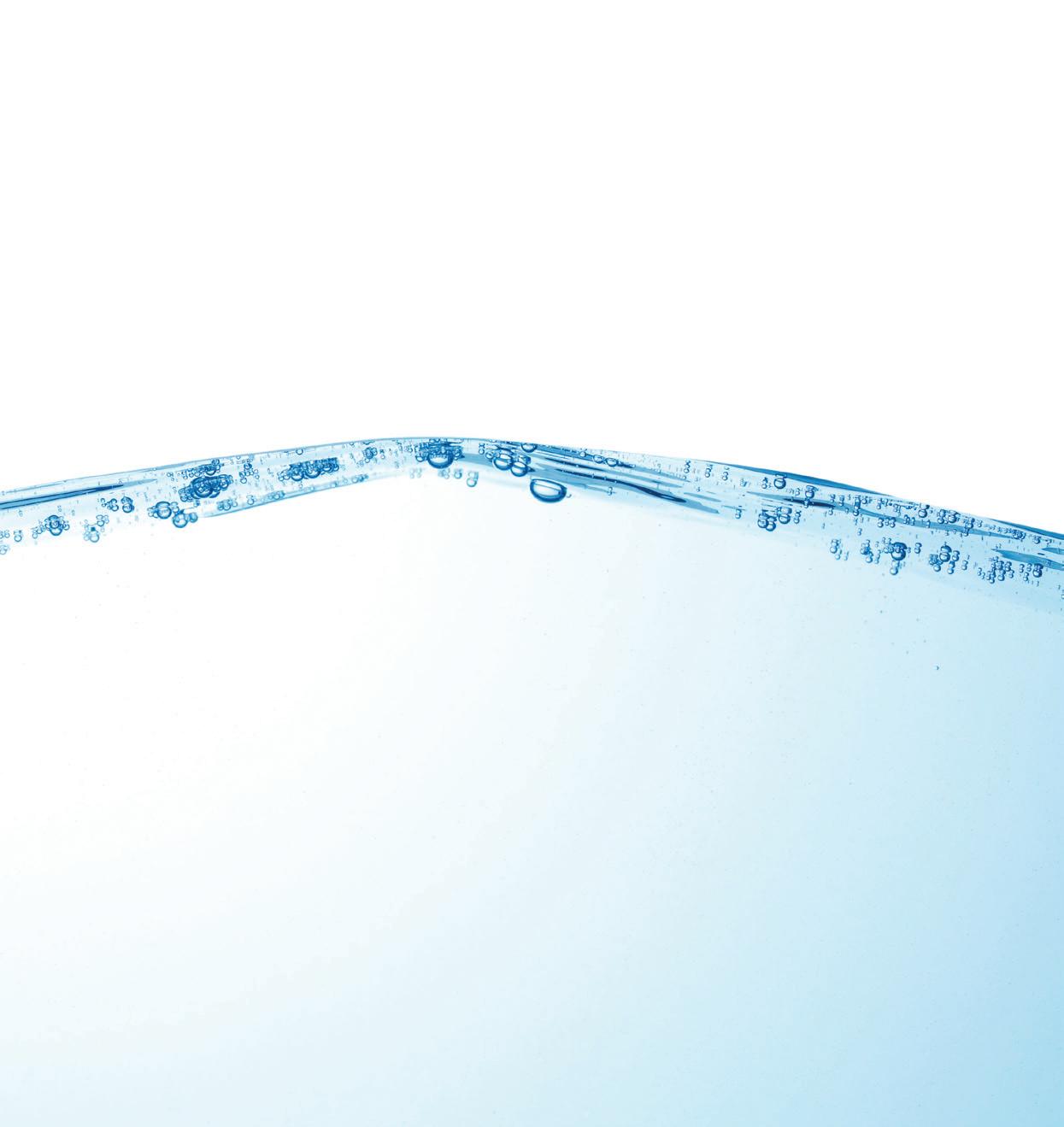
“All of a sudden we had all this really, really useful information, which was almost overwhelming because there was so much of it. There’s so many different types of disability, and that in itself is a barrier to progress because people don’t understand,” Ms Rowlands said.
“I think that’s one of the reasons that something like this has never progressed very far within a utility, because disability is very complicated. How do you cater for somebody with this kind of disability, and then this disability, and this disability?
“The breakthrough moment was when we decided to follow the World Health Organisation model and not focus on disability. If you focus on the person and their needs, and what that combination requires, everything else is much easier. That’s when that universal design component actually becomes really powerful.”
IDENTIFYING DIFFERENT CUSTOMER NEEDS
The program has identified up to 15 potential initiatives or changes, with some already being implemented and others requiring investment over coming years, ranging from a language aide program for customers using Auslan and other alternate languages, as well as investigating ways to reduce the anxiety that many people with a disability face when answering the door.
Further changes include reducing the use of forms in customer interactions, which present a barrier for people with visual or cognitive disabilities, and offering more responses through email, which over 30 per cent of customers with communication challenges rely on instead of phone contact.
“Customers are truly at the heart of everything we do, and we want to make sure that anyone with any form of disability or accessibility issue is able to access our services, and that in turn, we are providing services as best we can that meet their needs,” Ms Rowlands said.
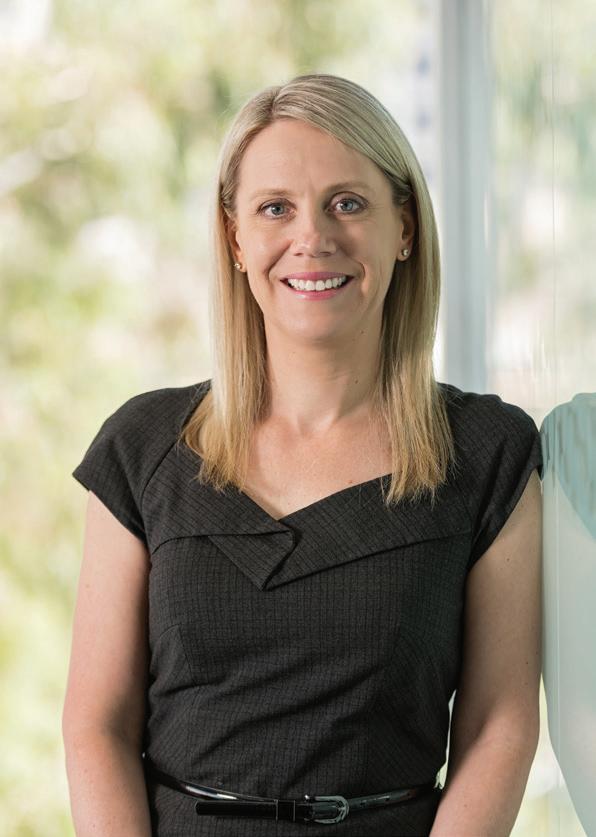
UTILITY • AUGUST 2019 WWW.UTILITYMAGAZINE.COM.AU EMBRACING DIVERSITY 25
SA WATER'S GENERAL MANAGER CUSTOMER DELIVERY KERRY ROWLANDS. IMAGE BY SA WATER.

Chief Executive Officer of the South Australian Council of Social Services, Ross Womersley, said it is important that essential services fully understand the range of needs their customers are likely to have.
“This is a terrific example of what can happen when a retail business takes the time to begin to understand their customers and especially those customers who might have slightly different needs to the majority,” Mr Womersley said.
“This initiative from SA Water grew directly from our conference last year where we had a specific focus on the needs of people who live with disability, and we’re delighted that SA Water has gone on to try and deepen their relationships with and understanding of some of their customers who live with disability.”
Dave Woodmore was awarded best paper at OzWater 2019 for this project.

EMBRACING DIVERSITY 26
Making water services accessible to all
UTILITY • AUGUST 2019 WWW.UTILITYMAGAZINE.COM.AU
PAMELA AND AIRLIE KIRKHAM, WHO ENGAGED WITH SA WATER AS PART OF THE WIDER WORLD INITIATIVE. IMAGE BY SA WATER.
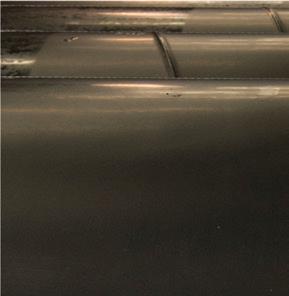
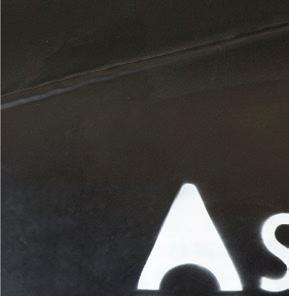



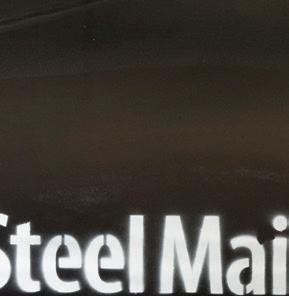





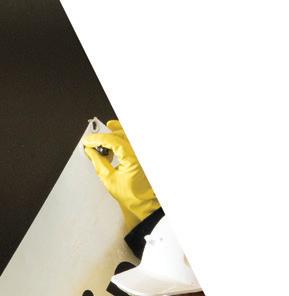
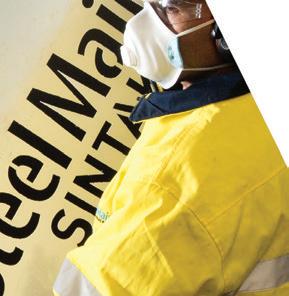


SIMPLICITY FLEXIBILITY SECURITY


Steel Mains Sintakote® Steel Pipeline System is the premier pipeline material for water infrastructure projects.
Simplicity in laying Sintakote pipe assists pipeline designers and constructors to minimise on-site challenges encountered during pipeline construction. Longer pipe lengths than other materials, superior corrosion protection, and ease of jointing Sintajoint Rubber Ring Joint pipe have meant that Sintakote steel pipe is being adopted more and more by the pipeline industry. Our patented Sintalock welded restrained rubber ring jointing system means that internal welding of pipelines is no longer required, providing faster laying rates and a safer work environment.
Flexibility in design and construction that our Sintakote pipe jointing system provides is unique to the market offering you opportunities to reduce construction costs. You can use our Sintajoint Rubber Ring joint system, or our welded joint systems if a fully restrained pipeline is your requirement, or a combination of both.
Security offered with local manufacture & delivery, and design & installation training support means that Steel Mains can reduce all your pipeline supply risks. Local manufacture and product StandardsMark™ provide you with that extra security of supply, with all aspects of manufacturing meeting Australian quality standards.
Sintakote steel pipe reduces your risks in your long terms asset. Steel Mains, providing a system that meets Simplicity, Flexibility and Security.
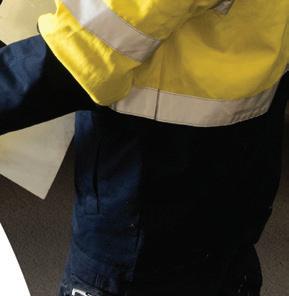

e
THE CHANGING FACE OF CONSTRUCTION: JENNY DING

The latest research suggests innovation and diversity go hand in hand. For Zinfra, bringing together different skills, languages and generations to create a diverse employee base is a huge advantage because it allows the company to engage more effectively with the communities it serves. As a Project Engineer, Jenny Ding is passionate about delivering sustainable project outcomes that improve people’s lives.
UTILITY • AUGUST 2019 WWW.UTILITYMAGAZINE.COM.AU Utility Partner Solutions EMBRACING DIVERSITY
28

Before Ms Ding immigrated to Australia from China four years ago, she had worked as an Electrical Engineer for eight years. After two years of working for Zinfra as a Project Coordinator, she started her current role as a Project Engineer under the project establishment team, working mainly in the areas of power, gas and water to set up project management plans, registers and costs.
While her role affords her the opportunity to work on many exciting projects, those that stand out the most are the ones where she feels she can make a difference to people and their environment.
One project that holds particular significance for Ms Ding is the Brunswick Terminal Station rebuild project.
“The project was in the residential area of Brunswick. People there were not very receptive to us, because they saw that we were doing construction work and were worried about how it would impact their lives,” Ms Ding said.
When the project was successfully delivered, Ms Ding said that the residents’ perspective shifted.
“From the outside, you wouldn’t even think it’s a station because we demolished the AIS (air-insulated switchgear) and built a new terminal station with GIS (gas-insulated switchgear).
“It now looks like a park and the new facade has improved the residential surrounds.
“I feel really happy with what we have done there, just to make people’s lives better. We can provide more reliable power to the local area and you can tell people really appreciate that we’ve done the hard work.”
A CHAMPION OF DIVERSITY
While Ms Ding acknowledged that there are some significant challenges facing the energy industry, she also recognises that these are not without opportunities.
With cities rapidly developing, Ms Ding said that governments are investing a huge amount in infrastructure.
”There will be more opportunities for experienced project managers and subject matter experts,” Ms Ding said.
“Moving forward, I would like to contribute more to the power industry by being a project manager and a subject matter expert.”
One of the ways Ms Ding has been able to prepare for and act on opportunities is through mentoring from experienced colleagues. Ms Ding previously worked closely with a former senior project manager at Zinfra, who mentored her in regards to project management, such as how to deliver a project successfully, on time and on budget. “I’ve learnt a lot from my mentors and colleagues”, Ms Ding said.
In turn, she also hopes to be an example of an ambitious and successful female employee in a male dominated industry, and encourage women to be diligent, self-driven and present.
“This means that every day you do your best, and don’t be afraid to ask questions, because people are always willing to offer support and help,” she said.
While it is still more common to see men on worksites than women, Ms Ding has been excited to see an increasing number of women joining the industry, and believes that attitudes towards women in the power sector are starting to shift.
“Previously, it’s been a bit of a masculine atmosphere, but with women joining you can tell that they pay more attention to their attitude and I sense improved productivity as well.”
She sees diversity within the power sector as a matter of great importance, and while she has witnessed diversity in nationality, culture and gender amongst various teams and clients within the power sector, her example of the benefits of diversity is a personal one.
Two years ago, Ms Ding got the chance to go back to China on a business trip with one of Zinfra’s general managers. With valuable experience in both countries’ power sectors, Ms Ding said she became a conduit between the two companies and countries, and was able to assist in the negotiation of a project.
“Given my background, I could support the two companies and reduce the risks for both parties. I was also able to help the two parties know each other better and understand what they were talking about,” she said.
ENSURING A HEALTHY WORK-LIFE BALANCE
While she’s certainly passionate about her career, Ms Ding also balances her work life with a keen personal interest in yoga, which she believes has flow on benefits for her mental processes.
“I’ve been practicing yoga for a couple of years. I think sometimes you get a bit stressed with work, so yoga practice is really good. Through meditation and practice, I feel really relaxed and relieved, which improves my work productivity as well.”
Ms Ding has also been propelled by a desire to learn and grow, whether through work or study. When she immigrated to Australia, she applied for a PhD position at RMIT and was granted the national scholarship.
She took the position at Zinfra while pursuing this study; however, she felt such support from the team and the company that she decided to focus on her career and put her studies on hold.
“Every day they taught me the culture here, the slang. Because of their support and help, I could settle here in just a short time.
“After that, my manager asked me if I’d like to join Zinfra as a full-time employee. I decided I really did want to work for Zinfra because it’s a great company.”
Four years on, Ms Ding is part of a dynamic and creative team, working towards sustainable solutions and positive outcomes for communities. She has also become a mentor for graduate engineers, sharing her insights and passion with up-and-coming professionals.
“I never regret the decisions I have made,” Ms Ding said.
UTILITY • AUGUST 2019 WWW.UTILITYMAGAZINE.COM.AU Utility Partner Solutions EMBRACING DIVERSITY
29
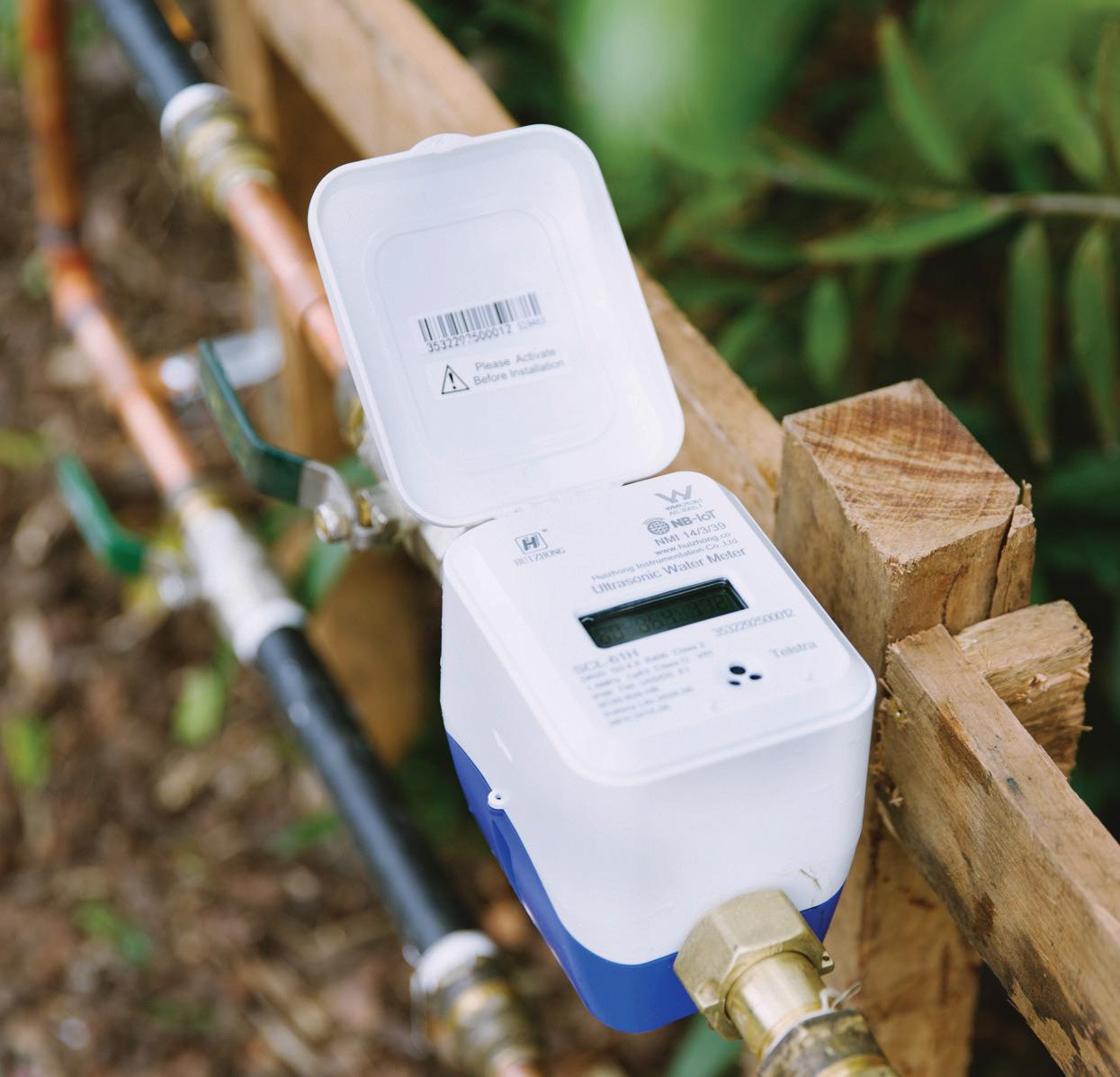
THE FUTURE OF WATER METERS
Yarra Valley Water is upgrading water meters with new technology for about 1,000 properties in the Vermont South area in Melbourne, to better understand the value of digital water metering technology for its customers.
UTILITY • AUGUST 2019 WWW.UTILITYMAGAZINE.COM.AU WATER OPERATIONS AND TREATMENT 30


Water meter upgrades will occur over a month from August 2019, and will permanently replace existing water meters. The trial will run until earlymid 2020, during which time Yarra Valley Water will be monitoring the results to understand the benefits of a wider digital water meter upgrade program.
It is the first time that Yarra Valley Water has used digital water meters, although the utility began a remote meter reading trial in 2013. Data loggers were added to existing mechanical meters in Craigieburn, a satellite suburb in Melbourne’s north, providing Yarra Valley Water with near real-time information on water consumption in the area. The trial is still ongoing and has offered some valuable insights into potential hidden leaks.
Pat McCafferty, Managing Director of Yarra Valley Water, said that the main benefit for customers is giving them the opportunity to better understand their water use, which in turn helps them take action on their usage and possibly reduce their bills.
“I think control is certainly what’s most valued – people having a sense of control over their water use, and knowing when and how they’re using the most water is something of really high value,” Mr McCafferty said.
“In a country like Australia where climate change, drought and reduced water supply are significant challenges, the ability for people to track their water use, to have the information that enables them to better understand what small changes they can make to save water, is huge.
“The digital meters enable a more digital customer experience – customers can use their mobile phones to monitor their account and identify potential savings in near real time. That’s the shift that’s starting to occur, it’s something people expect and get from most other service providers so they want to know when they’re going to get it for their water.
“Avoiding bill shock is also very important to us. We’ve got plenty of examples of people who have had a hidden leak, and if the meter reading doesn’t take place for eight weeks, they’ve received bills in the thousands. We obviously have programs where we help people with those bills, but both us and the customers would rather it didn’t happen in the first place.”
A TOOL FOR LEAK DETECTION
Mr McCafferty said that the trial will not only enable significant breakthroughs in customer service, but will also help provide Yarra Valley Water with a full picture of how the network is performing.
“One of the old-fashioned things about our industry is that generally we need someone to tell us if something’s wrong. For example, a phone call to say there’s a burst water main or a leaking hydrant in the street, or there’s a sewage blockage or sewage spill into a waterway.
“Water is sometimes very low involvement because people just go about their day-to-day business, but they interact with the water and sewage systems so many times a day from the moment they wake up to the moment they go to bed. It’s really only when something goes wrong that there’s that elevated consciousness of the value of the product.
“By having sensor technology that’s more cost effective and linking that up with the telecommunication networks, we have a much more visible proactive approach to our service than we’ve ever had before. I think it’s going to be fascinating for us in terms of how much data we’ll have, but we’ll have to be conscious about how we best use that data.
“My hope is that rather than a major burst having to occur in order for someone to ring us, and for us to get a crew out there, we’ll be able to get enough insight from the data coming back to us via the sensors and meters to say, ‘Looks like there might be an emerging issue with a water main in X street. Let’s get out there and have a closer look’.”
UTILITY • AUGUST 2019 WWW.UTILITYMAGAZINE.COM.AU WATER OPERATIONS AND TREATMENT 31
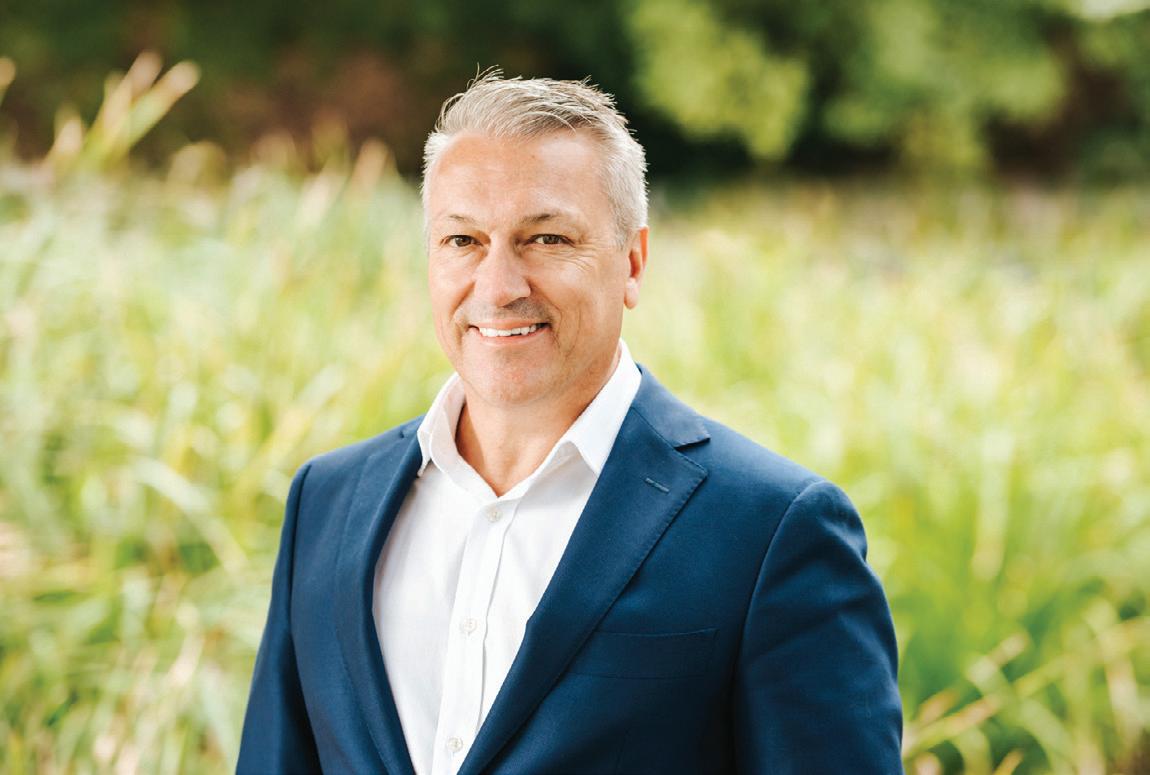
CONSULTING WITH CUSTOMERS
Yarra Valley Water will be following up with the digital metering trial participants to get feedback on how they found the installation process, how they used the information and whether they found it valuable, and if there are any opportunities to further improve the customer experience.
“We’ll be doing customer research all the way. Our expectations are that digital water meters are something that contributes to increased perceptions of value and higher customer satisfaction because of the benefits our customers receive. What we want to do with these trials is demonstrate that, but you need to track these things to prove the point,” Mr McCafferty said.
“Most of the concerns that we’ve come across stem from someone’s experience with an energy sector, their main question being ‘Do I have to pay more?’ We’re doing these trials to get the business case to the point where we know it won’t impact on customer bills, because we don’t want to impose digital metering at a cost to customers that people don’t value.
“Radio frequencies and their safety were also highlighted as a concern, but through the trials we can show people what a typical digital meter looks like and the frequency that it operates at, which is below the frequency of your average household item such as a wi-fi router – we can demonstrate the data and science behind it.”

A COLLABORATIVE EFFORT
Three metropolitan Melbourne water utilities — Yarra Valley Water, City West Water and South East Water — are working together to explore whether upgrading Melbourne’s existing meter fleet to digital water meters will provide value to customers, the community and utilities.
By combining the experience and technical capabilities of the three utilities, together with expert advice and checks, the Digital Metering Joint Program will be able to thoroughly assess if digital water meters are viable and how and when an upgrade to the meter fleet could occur.
The Vermont South digital metering trial is part of this program, and Mr McCafferty said that it is very useful to be able to compare notes.
“We want to make sure that when Melbourne does transition to digital water meters, that it’s a consistent experience across the city. We can leverage the power of working together by doing some things slightly differently to learn what works, and then adopt best of breed combinations.
“We’ve collaborated on understanding what customers value and what their expectations are around digital metering. We want to make sure that we’re listening to that, that we’re tailoring what we do to ensure that the customer experience of moving to digital water meters is a really positive one.”
UTILITY • AUGUST 2019 WWW.UTILITYMAGAZINE.COM.AU WATER OPERATIONS AND TREATMENT 32 The future of water meters
PAT MCCAFFERTY
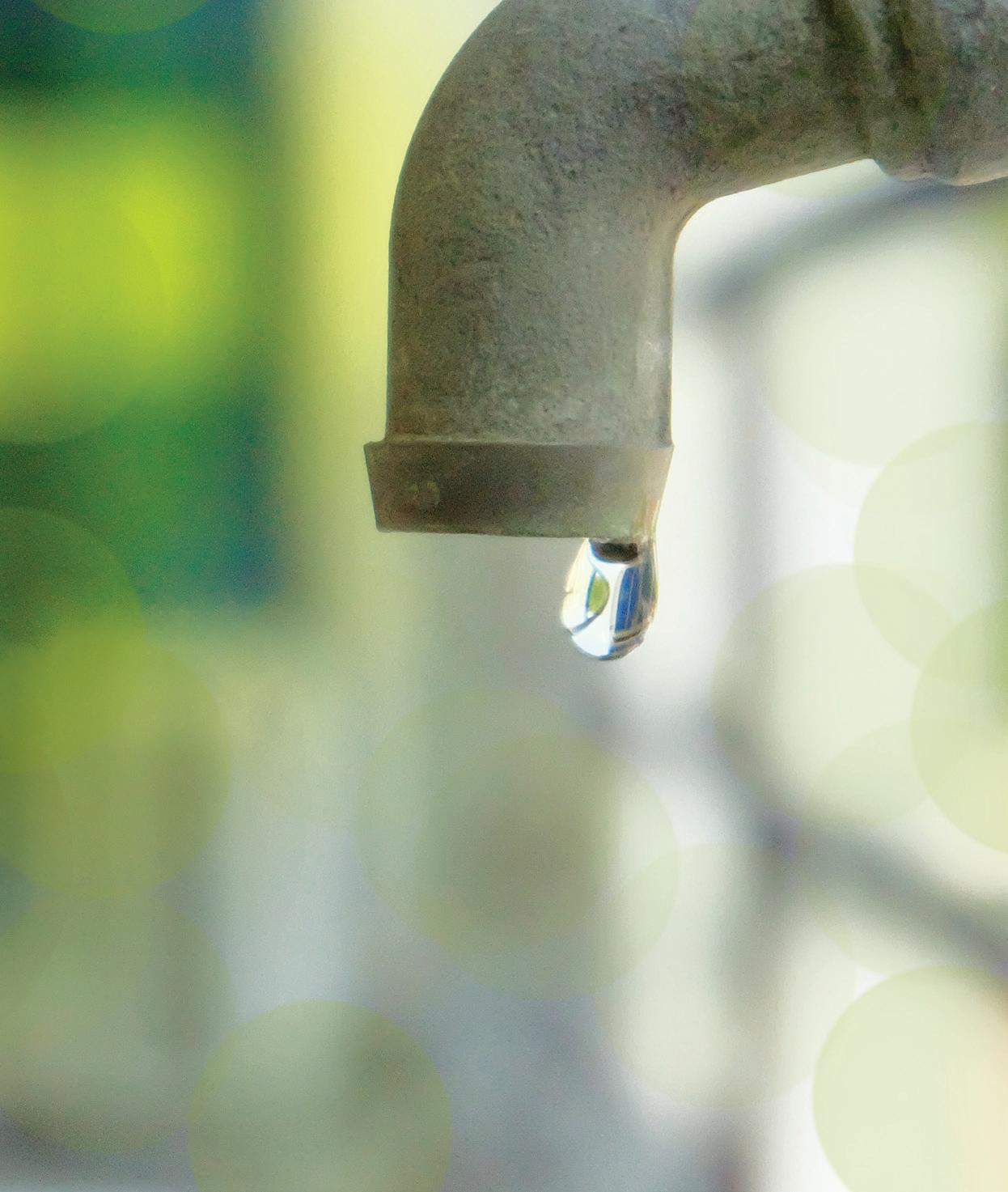
Ultimately, if Yarra Valley Water was to replace all of its existing meters the case for digital water meters needs to stack-up financially, and support is required from customers, the Victorian Government and the Essential Services Commission.
Mr McCafferty explained that he doesn’t want to be implementing new technology just for the sake of it.
“Upgrading over 700,000 meters would be a significant undertaking and I wouldn’t downplay the importance of really effective engagement and communications around that,” Mr McCafferty said.
“Ultimately, the digital water meter is just one piece of a much broader suite of infrastructure that’s required to make it all work. Both the meter and the network need to integrate with our back-end systems, like our asset management and GIS systems. That’s a fair bit of technical work to make sure everything is working effectively and integrated.
“We’ll probably have to co-exist in parallel worlds while we transition from our older way of doing things, using legacy systems and manual processes, to more streamlined digital processes.
“It really is about focusing on what our customers need, rather than a technology solution looking for a problem – at the end of the day, we exist to serve our customers. We always had a commitment that we’re not going to do this because of technology, that it’s not going to be a technology driven project. The technology has to meet needs, solve customer problems and create more value.”
WATER OPERATIONS AND TREATMENT
UTILITY • AUGUST 2019 WWW.UTILITYMAGAZINE.COM.AU 33
The future of water meters
DETECTING TOXINS IN DRINKING WATER SUPPLY
The phenomena of “harmful algae blooms (HAB)”, when cyanobacteria in a river rapidly produce cyanotoxins due to warm weather conditions, can be devastating to local wildlife, ecosystems and people. Detecting HAB efficiently and reliably is the first step in ensuring a clean and safe water supply. Thermo Fisher Scientific is leading the way in determining cylindrospermopsin and anatoxin-a in drinking water with the new Thermo ScientificTM TSQ QuantisTM triple quadrupole mass spectrometry platform — offering greater accuracy, sensitivity and reliability.
Atype of bacteria known as cyanobacteria, blue-green algae can sometimes produce cyanotoxins and endanger human, animal and fish health and is a major hazard to water supplies. Blue-green algae is found almost everywhere, but particularly in lakes and rivers where, under certain conditions, they reproduce exponentially to form harmful algal blooms (HABs).
These HABs can produce harmful toxins, such as anatoxin-a (also known as Very Fast Death Factor), which can poison animals and humans. Cyanotoxins can also accumulate in other animals such as fish and shellfish, and cause poisonings such as shellfish poisoning.
The threat posed by anatoxin-a and other cyanotoxins is increasing as both fertilizer runoff — which leads to overly nutrient enriched lakes and rivers, often depleting oxygen in the water — and higher global temperatures contribute to a greater frequency and prevalence of blue-green algal blooms. These toxins pose a threat when found in drinking water supply and need to be monitored closely.
While a variety of methods and appliances for the detection of toxins already exist, scientists have called for more research to improve reliability and efficacy. Thermo Fisher products are leading the way in the water testing arena, exemplified by the new Thermo ScientificTM TSQ QuantisTM triple quadrupole Liquid Chromatography MS platform.
The TSQ Quantis MS seamlessly integrates with industryleading quantitation software, HPLCs and UHPLCs, as well as sample preparation solutions; it also offers enhanced efficiency during targeted quantitation workflows for a wide array of molecular species. Other benefits include:
• Superb sensitivity that generates data for all molecular species, even in complex matrices
• Outstanding robustness that enables increased confidence in data while prolonging instrument uptime
• Reliability and reproducibility improve data quality for every run and every sample
• Close integration with application-specific software ensures increased productivity across all application markets
• Simplicity and ease-of-use allow users of all expertise levels to acquire high-quality data with improved confidence in results
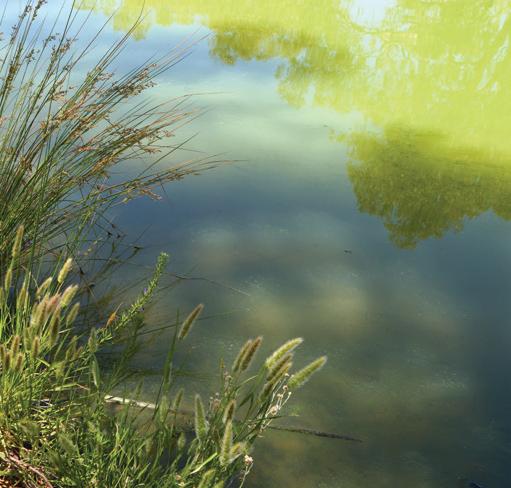
THE EVIDENCE
Thermo Fisher put its new machine to the test, using the US Environmental Protection Agency’s Method 545: Determination of cylindrospermopsin and anatoxin-a in drinking water by liquid chromatography electrospray ionization tandem mass spectrometry (LC/ESI-MS/MS)
The study results proved the value of the TSQ Quantis triple quadrupole MS. It is highly sensitive, with adequate sensitivity obtained with 5 μL, 10 μL and 25 μL injection volumes for drinking water matrices. This represents a dramatic reduction in the injection volume than what the EPA is currently recommending and results in less matrix injected, thereby reducing maintenance of the LC-MS system.
In addition, the study demonstrated the high level of accuracy, reproducibility and reliability of the TSQ Quantis triple quadrupole MS in the quantitation of cylindrospermopsin and anatoxin-a in drinking water.
The challenges related to the reliable detection of bacteria in drinking water supplies have always been significant for water corporations, scientists and instrument makers. The new Thermo ScientificTM triple quadrupole LC-MS/MS is one example of how Thermo Fisher is making huge strides in this area, providing regulated and unregulated detection methods.

UTILITY • AUGUST 2019 WWW.UTILITYMAGAZINE.COM.AU WATER OPERATIONS AND TREATMENT 34 Utility Partner Solutions


Confident Q uantitation

Reach a new level of confidence with high-quality data and faster results
The new Thermo Scientific™ TSQ Fortis™ Triple Quadrupole Mass Spectrometer helps increase productivity, with reliability and robustness, for labs focused on performing targeted quantitation. This system makes it easier to meet today’s demands by confidently answering more complex questions per sample, while achieving reproducible results.
Any compound, any matrix, any user.
Find confidence at thermofisher.com/fortis
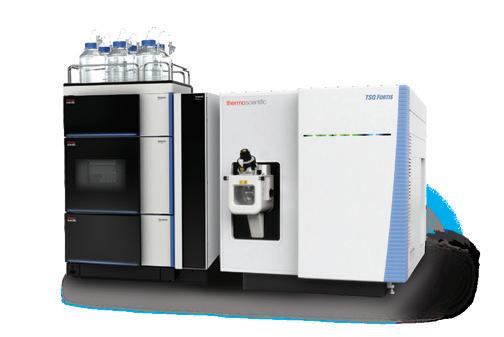
For Research Use Only. Not for use in diagnostic procedures. © 2018 Thermo Fisher Scientific Inc. All rights reserved. All trademarks are the property of Thermo Fisher Scientific and its subsidiaries unless otherwise specified. 1559026204
Thermo Scientific™ Vanquish™ Flex UHPLC system and TSQ Fortis mass spectrometer

STILL SOLDERING ON? YOU MIGHT BE MISSING A TRICK
Hydraulic and plumbing specialists using copper piping the world over have always relied on soldering for all types of installations. But for more than 20 years, German plumbing engineering company Viega has revolutionised pipe systems press connection technology as a faster and safer alternative.
Established almost 120 years ago in Germany, Viega is leading the way internationally when it comes to press connection technology. In the mid-1990s and in the year 2000, it revolutionised the market twice in quick succession: first with the introduction of the Propress system, then with the Smart Connect-Feature. And the company hasn’t stopped there.
Now used in millions of applications around the world, not only in sanitation, heating and gas applications, but also in industrial facilities such as compressed air, cooling waters and process media, press connection technology is recognised as the modern-day alternative to traditional soldering here in Australia. Less time, less money, less risk and less hassle. And here’s why.
Quick and cost-effective
With Viega’s Propress technology, work can be completed up to 75 per cent more quickly than using conventional soldering procedures. Ultimately, only three steps are
required: cut the pipe, press and finish. Laborious preparation and finishing work such as drying pipes and removing traces of fire and solder is no longer required.
Safety first
As a cold applied solution, press fitting connection offers a safer and cleaner alternative to hot works and allows a secure connection even where space around the pipe is limited.
Reliable
Viega’s double pressing technique – one before the seam and one after –guarantees long-lasting stability in the pipe system. And the Smart ConnectFeature technology included in products across the Viega range also ensures maximum leak detection. Unpressed connections are guaranteed to be noticed when filling the installation.
Quick
Unlike soldering, there’s no oxygen or gas cylinder, no burner and no soldering accessories to transport and maintain. Viega Pressguns are light, quick, safe and require minimal maintenance.
EXTREME CONDITIONS CALL FOR ROBUST PIPING SYSTEMS
Versatile
And thanks to the flexible articulated press jaws, they can easily be used in even hard-to-reach installations without causing a fire hazard.
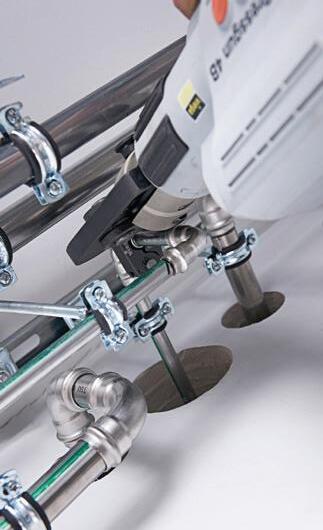
On the rocky Antarctic plateau adjacent to the Larsemann Hills, at temperatures down to minus 40°C, India has been operating a science research station since 2012. Named "Bharati", after the Hindu Goddess of Wisdom and Knowledge, it serves as headquarters for climate change and oceanographic research.
To enable Bharati’s researchers to continue their vital work in extreme conditions during the Antarctic winter, it required especially robust drinking water and heating solutions. Drinking water hygiene is particularly vital at the remote location. Contamination by Legionella or similar harmful microbes would be disastrous not only for the researchers – the very future of the mission would be placed at risk.
That is why the planners chose Viega’s Sanpress Inox system with pipes made of premium quality EN1.4521 stainless steel. Viega Easytop circulation regulating valves ensure that the hot water is kept at a constant 60°C. The facility’s thermal disinfection system provides further protection against Legionella, while Easytop extraction valves enable regular monitoring of drinking water quality.
Kerosene is used to generate heat and power, because it remains liquid down to minus 54°C. So to aerate the tank, Indian engineers installed the Viega Sanpress Inox G piping system because of its permanent resistance to the media being pumped. Sanpress Inox G is usually used for gas and heating oil pipes. It was launched in Australia in 2013.
WATER OPERATIONS AND TREATMENT 36 UTILITY • AUGUST 2019 WWW.UTILITYMAGAZINE.COM.AU
Utility Partner Solutions

A PROJECT AT THE END OF THE WORLD.
And a piping system that supplies all of the essentials right from the start.
With something as fundamental to the construction of an Arctic research station as the vital supply of warmth and clean drinking water, you don’t experiment, but trust uncompromising quality and absolute reliability. Viega met these high demands using Sanpress Inox for drinking water and Prestabo for heating installation, and also delivered the know how to go with them. Viega. Connected in quality.
Bharati Research Station, Antarctica
© Architects: IMS Ingenieurgesellschaft / bof architekten / m+p consulting; Photographer: Rakesh Rao/NCAOR
viega.com.au
WIOA OPERATORS OF THE YEAR



ADAM











Every year, the Water Industry Operators Association celebrates the best of the industry with its Operator of the Year awards. We spoke with 2018/2019 winners from around the country, all of whom have demonstrated excellent performance, initiative and all-round attention to detail in their roles as operators of water or wastewater treatment facilities.
PANOZZO, NORTH EAST WATER VICTORIAN OPERATOR OF THE YEAR










A typical work day for me usually involves quite a bit of driving to get to the many sites we have! I could be working on the optimisation of a water treatment plant (WTP) which has chemical dosing issues or dirty raw water in the catchment, stripping and rebuilding dosing pumps, calibrating water quality instruments or working alongside other treatment technicians, operators or contractors on plant upgrades and modifications.
Some of the recent innovations I’ve seen at North East Water include the use of drones to conduct inspections of water storages, negating the need to climb ladders and work at heights. More generally in the water industry, I’ve noticed the use of less invasive excavation methods (e.g. hydro vacs vs excavators) to locate underground assets and the increasing use of technology in online instrumentation, such as radio-frequency identification scanning and Bluetooth compatible units. The sheer amount of different equipment and options available to the water industry and operators now is also impressive.
My current role is as a Treatment Technician within our Systems Optimisation group, which involves process optimisation, troubleshooting and/or modification of our treatment processes as well as installation, maintenance and calibration of equipment such as inline water quality analysers and chemical dosing systems. I also provide operators with back-up and assistance in their day-to-day operations.




The main challenge I face in my role is climate variability impacting on our source water and treatment processes more frequently due to fires, floods and droughts. We must ensure that we have robust processes, procedures and infrastructure to deal with this increasing variability. Another challenge is ensuring our processes continue to meet the Australian Drinking Water Guidelines into the future as the guidelines become tighter.
I love working in the operations side of the water industry because I get to work outdoors in fantastic country, on a number of different issues/projects simultaneously, with operators from around our region. I also enjoy the variety of problems, issues and challenges that come my way.






WATER OPERATIONS AND TREATMENT 38
UTILITY • AUGUST 2019 WWW.UTILITYMAGAZINE.COM.AU








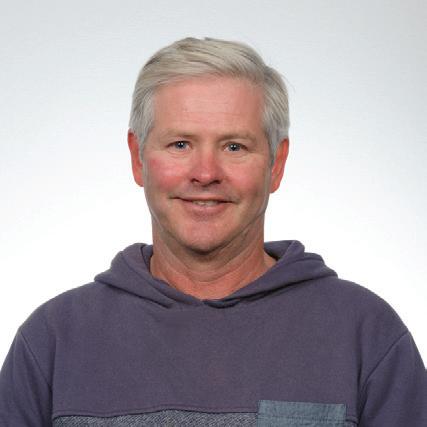

My typical workday involves SCADA control, monitoring and trend analysis, coordination of tasks to water process staff, liaising with contractors, internal trades staff and Council customers, strategic planning, and project works and commissioning.



DANNY ROBERTS, PORT MACQUARIE HASTINGS
COUNCIL - NSW OPERATOR OF THE YEAR

I’m currently a Water Treatment Supervisor, coordinating a team of six WTP Operators and two trainees. In addition to managing four Membrane Water Treatment Plants, one Recycled Water Treatment Plant, four re-chlorination sites and one fluoridation site, I coordinate NSW Health compliance sample runs, manage projects and upgrades, and develop Safe Work Method Statements (SWMS) and Standard Operating Procedures (SOP).


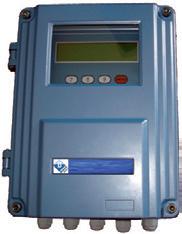
Some recent innovations I have seen in the operations side of the water business involve the emergence of digital technologies, such as the modernisation of SCADA and remote control of WTPs, and the use of app-based data management systems. I have also seen advances in membrane and reverse osmosis technologies, the introduction of closed loop flow and residual trim control in disinfection systems and trials of ice pigging and NODES cleaning systems in the water delivery network. There have also been improvements in the planning and process for new water mains disinfection.
The main challenge I face as an operator in the water industry is keeping up with changes in technology; support from industry associations, specialist suppliers and Council’s technical staff helps me do this. Other challenges include managing water quality and managing my team and their workloads, which is achieved with support from the relevant management teams.
I love working in the operations side of the water industry because it is diverse and requires a wide range of skills, and provides essential services to the community. I enjoy working with my team to find innovative ways to improve systems and solve daily challenges, as well as the opportunity to get out and about in the beautiful area I live in.
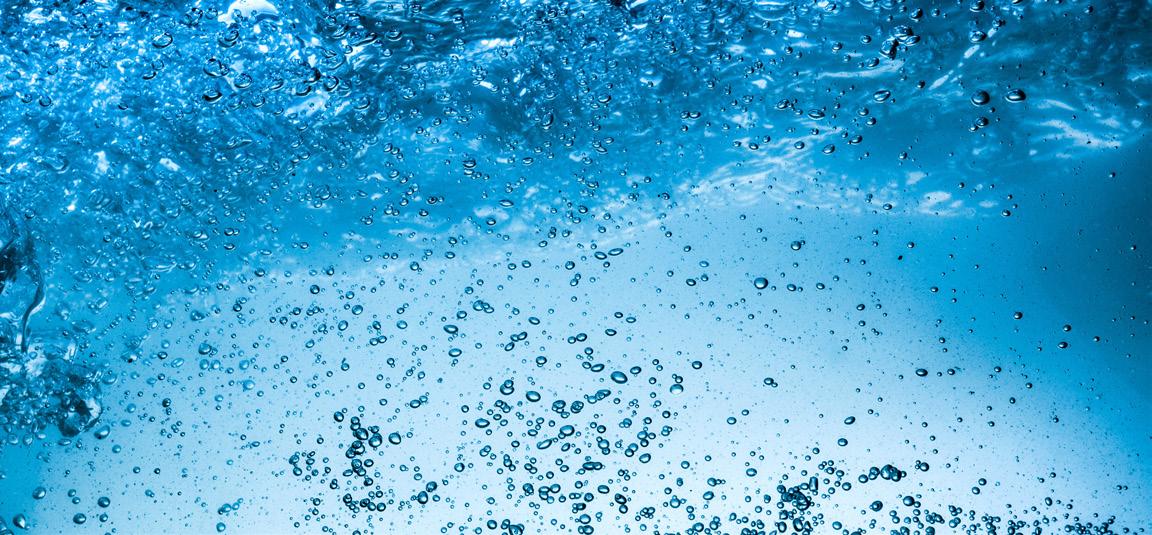

Magnetic flow meters
Ultrasonic meters
Transit time / doppler
Open channel
Custom spool systems

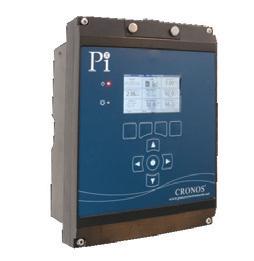
• Turbidity FLOW METERS
• Biofilm Analyser
• Residual Chlorine
• Dissolved Ozone
• Dissolved Oxygen
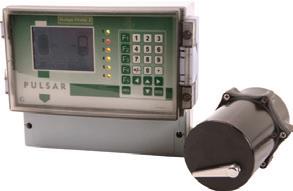
•
• Suspended Solids
• PH/ORP
• Conductivity
• Fluoride
•
•
•
•
sales@bintech.com.au
www.bintech.com.au


363 163
1300
LEVEL METERS ANALYTICAL CONTROLLERS CRONOS ECOMONY
Transmitters and
Ultrasonic
Controllers
Switches
Point Level
Magnetic Level Gauges
Level Systems
Sludge
Systems NEW TURBIDITY MONITOR
Wireless
BINTECH SYSTEMS WATER SOLUTIONS
WATER OPERATIONS AND TREATMENT UTILITY • AUGUST 2019 WWW.UTILITYMAGAZINE.COM.AU 39
WIOA operators of the year

BRAD ALCORN, SA WATER SOUTH AUSTRALIAN OPERATOR OF THE YEAR








In a nutshell, my role involves monitoring the water and wastewater networks in the outback town of Leigh Creek in far north SA, including fielding customer enquiries and assessing water meter and water main leaks and repairs. I’m also extremely fortunate that I get to work alongside my son Joel, who helps service the water and wastewater network in Leigh Creek.



A typical day involves starting with manual checks of the wastewater lagoons to ensure the aerators and flow levels are operating as normal for our customers, before doing any required network operations tasks or repairs to maintain the reliability of the network. I also help maintain a small number of smart water meters installed in Copley and Lyndhurst, which help us to best manage the water network in the two small townships.
experience was solely in Leigh Creek. It has taken a while to learn and understand the ins and outs of the intricate network which changed to SA Water management in 2018, but I have embraced the challenge and enjoyed maintaining the network for more than 70 additional customers in the two townships.

I love working in the operations side of the water industry because I really enjoy getting to ply my trade every day, knowing that the work we are doing is delivering essential services to the local region and is important to the health and wellbeing of the wider community. As an added bonus, getting to spend my career alongside my son as the twoperson team in Leigh Creek and seeing him develop over the years is also very rewarding.






The largest challenge I have faced so far with SA Water has been learning how to manage the water networks for our customers in Copley and Lyndhurst, given my previous

I’m extremely proud to be recognised for this award and the work we do for our customers in Leigh Creek and the surrounding regions. I wasn’t expecting to pick up the award, so being able to be recognised for my work has been a real feather in my cap, and I look forward to furthering my professional career in the industry.

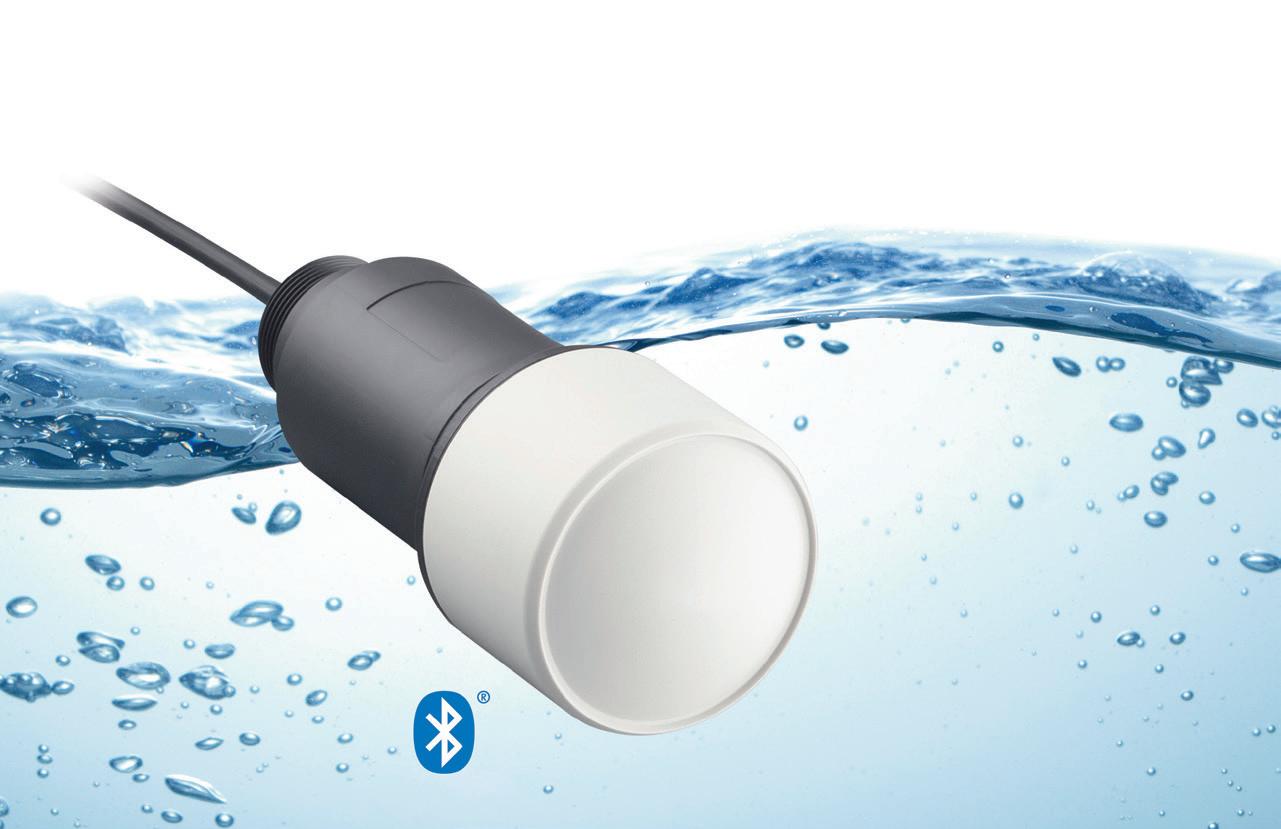









WWW.UTILITYMAGAZINE.COM.AU WATER OPERATIONS AND TREATMENT 40

Reliable level measurement in water treatment facilities, pump stations and rain overflow basins. Open channel flow measurement and water level monitoring.
VEGAPULS WL S 61
▪ Measuring range up to 8 m
▪ Can be used outdoors without restriction
▪ Flood-proof IP 68 housing
▪ Operation via Bluetooth with Smartphone, tablet or PC
Further information: www.vega.com/wls61
Phone 1800 817 135
Low-cost level measurement. Radar sensor for water management.
EFFECTIVE ARSENIC REMOVAL WITH DMI-65
Arsenic is a naturally occurring element found in the earth’s crust. As water flows through certain rock formations, the arsenic can dissolve and be carried into underground aquifers, streams or rivers that may be drinking water sources. Arsenic is a health hazard and drinking water with high levels of arsenic can cause skin damage, circulatory problems and an increased risk of cancer.
DMI-65, a catalytic filtration media with ferric chloride and sodium hypochlorite dosing, successfully reduces arsenic from groundwater sources to less than 0.001 mg/L, making the water suitable for human consumption.
DMI-65 also removes iron and manganese, the build up of which results in very high maintenance overheads, loss of production and potentially system failure. DMI-65 efficiently removes dissolved iron to almost undetectable levels of only 0.005mg/L and manganese to 0.001mg/L, as well as particulate, effectively removing this risk.
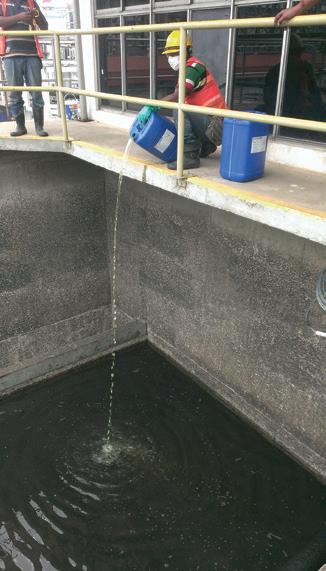
The infused technology of DMI-65 promotes the highest oxidation rate of any catalytic filtration media. This permits a significantly higher water flow rate to achieve the same level of iron and manganese removal. DMI-65 can operate at linear filtration velocities up to twice that of conventional media with a corresponding reduction in capital equipment costs.
DMI-65 also has higher iron and manganese load capacity which can extend the duration of filter runs and the time between backwashing, thereby reducing downtime, operating expense and wastage.
The media operates with a continuous injection of sodium hypochlorite at low residual levels (0.1 to 0.3mg/L) which eliminates the need for potassium permanganate.
HIGH-QUALITY WATER AT A REDUCED COST
The total cost of the iron and manganese removal water filtration system is significantly less than alternative solutions. The effectiveness, but relative simplicity, of DMI-65 based systems reduces the upfront capital expenditure on plant complexity, as well as the ongoing operational expenditure in chemicals, power and backwash wastewater recovery.
DMI-65 has a stable and satisfactory performance at pH 5.8 to 8.6 and a maximum operating temperature of 113°F (45°C), which reduces the need for investment to alter the operating environment.
DMI-65 is not consumed in the treatment process, giving it an expected operational life of up to ten years, providing considerable advantages over other processes or media. Over the five to ten year period, through many backwashing operations of the bed to remove retained solids, an attrition loss of the media occurs by contact between particles and mechanical abrasion.
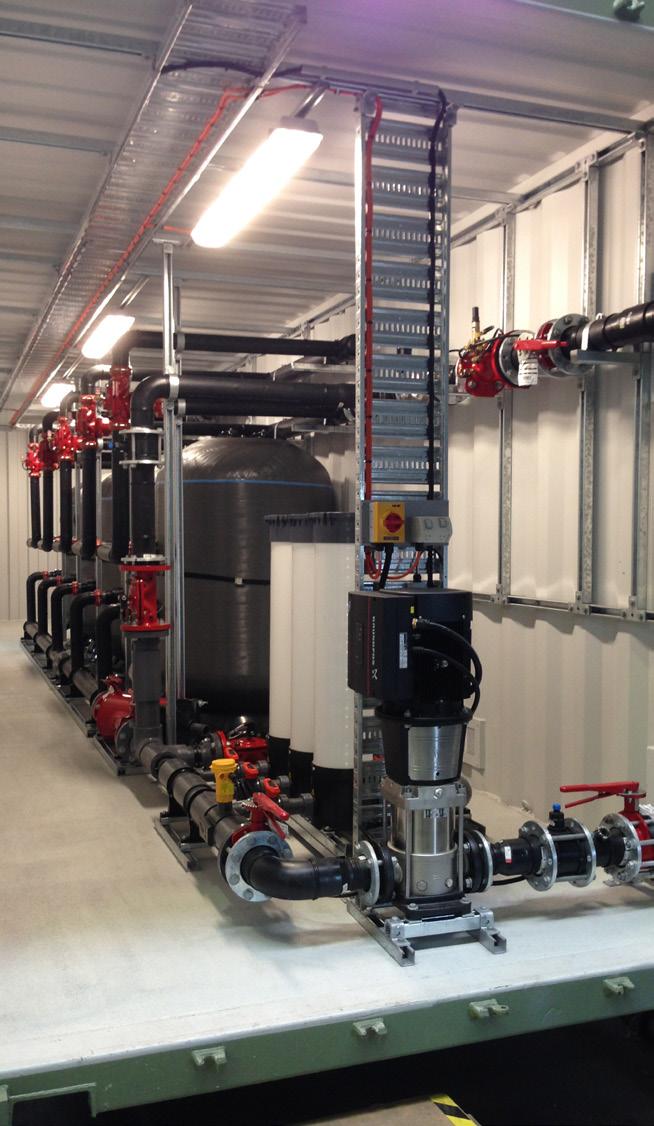
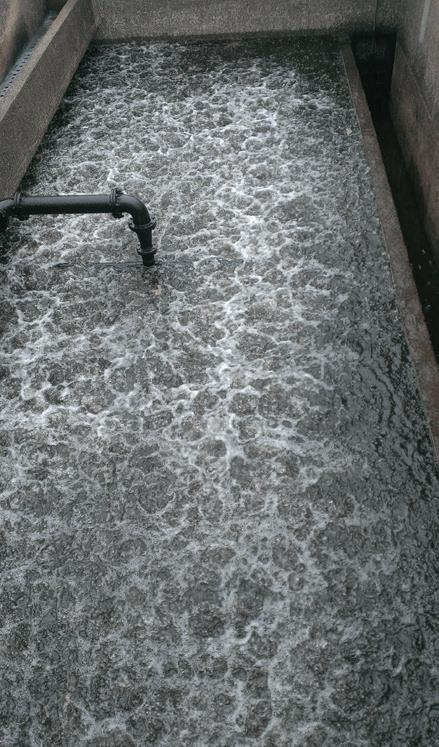


WATER OPERATIONS AND TREATMENT 42 Utility Partner Solutions
UTILITY • AUGUST 2019 WWW.UTILITYMAGAZINE.COM.AU

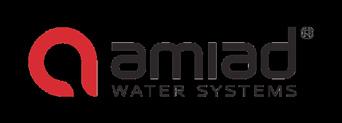 Russell Fisher Process Engineer, Amiad
Russell Fisher Process Engineer, Amiad
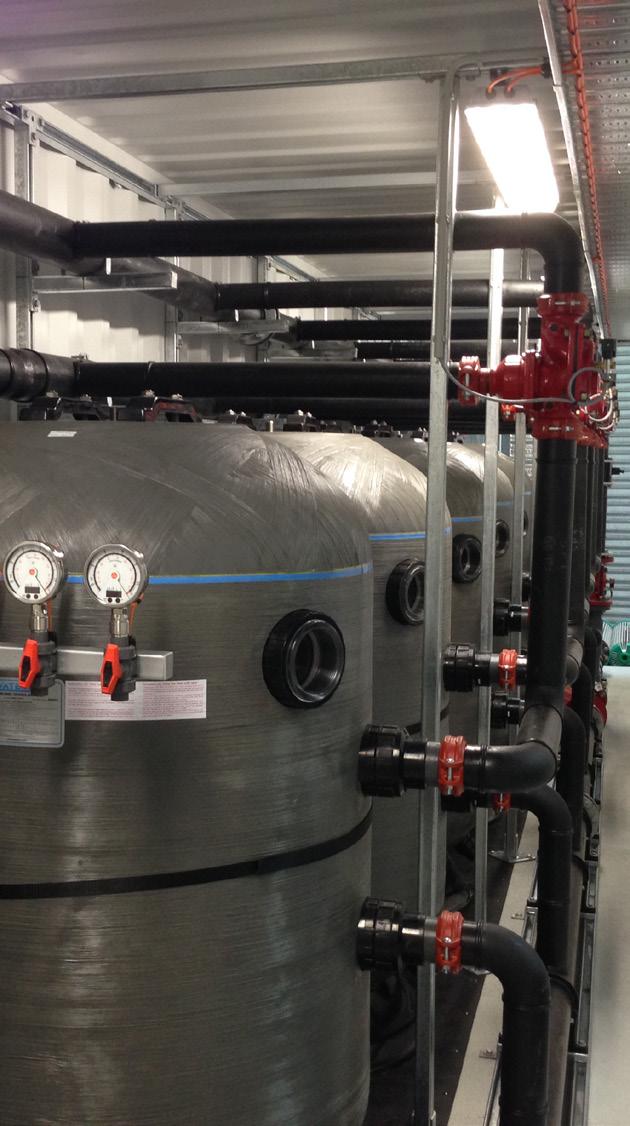
The Arsenic Filtration Plant, designed and constructed by Amiad utilizing DMI65® Media successfully reduces Arsenic to 0.001 mg/L, making it suitable for consumption by the community of Chillagoe, Queensland. “ “


Wastewater handling contributes significantly to greenhouse gas (GHG) emissions. Many Australian water utilities have set the aspirational target of achieving GHG neutral operations. Such efforts should be applauded and incentivised by government policies, but unfortunately the current guidelines for GHG reporting do not give clear incentives for water utilities to reduce their direct (Scope 1) emissions.

Overhauling
THE GREENHOUSE GAS EMISSIONS
ACCOUNTING GUIDELINES FOR WASTEWATER HANDLING
by Professor Zhiguo Yuan AM, Director, Advanced Water Management Centre, The University of Queensland and Dr David De Haas, GHD
UTILITY • AUGUST 2019 WWW.UTILITYMAGAZINE.COM.AU
WATER OPERATIONS AND TREATMENT 44
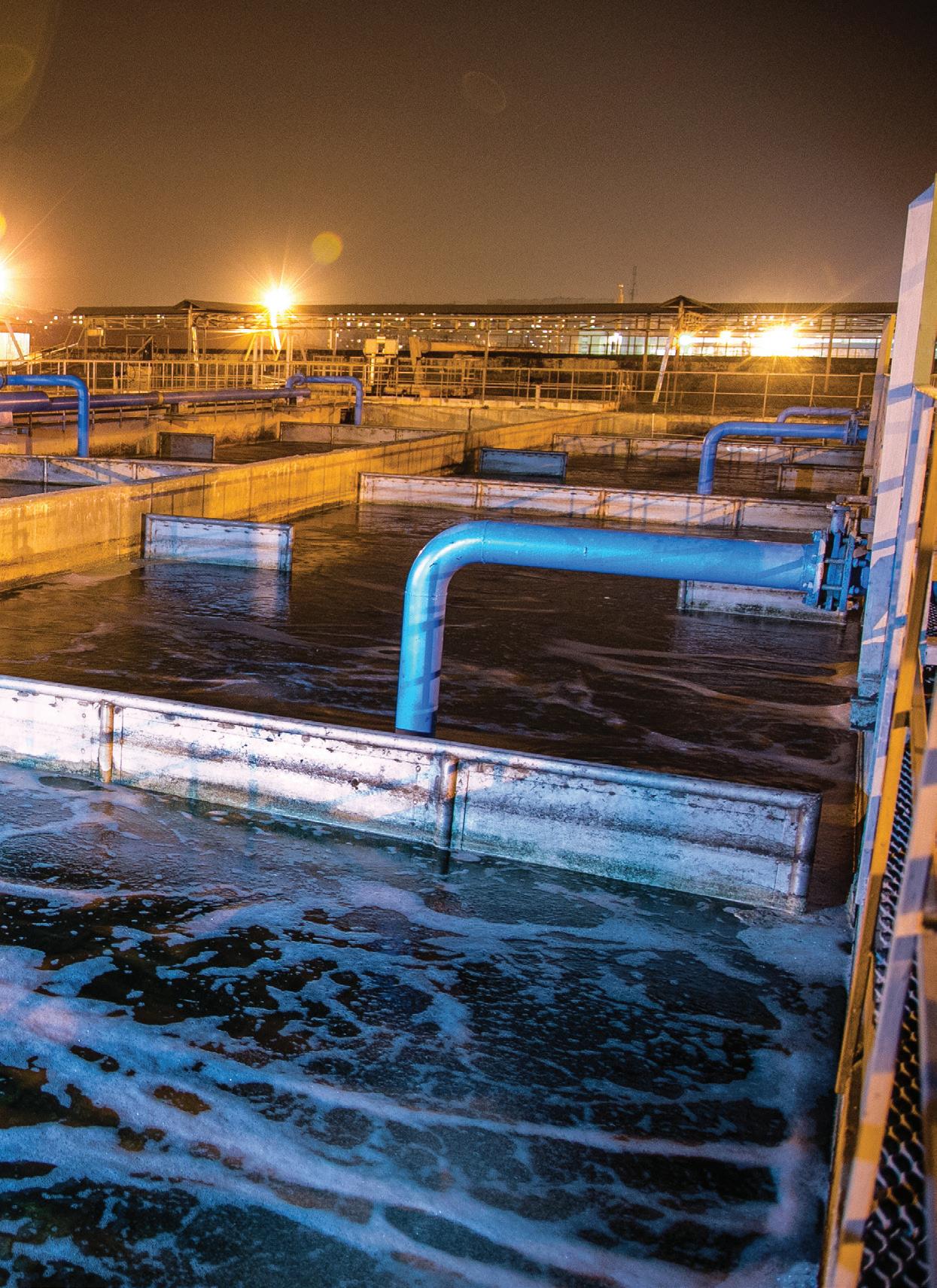
Nitrous oxide and methane are potent greenhouse gases. Both are Scope 1 emissions associated with wastewater collection and treatment systems. As such, these gases typically make up an important part of a water utility’s total GHG emissions, but the actual emissions might not be accurately reported under existing reporting protocols.
In Australia, according to the National Greenhouse Gas Emission Reporting (NGER) technical guidelines, Scope 1 emissions from wastewater handling are calculated according to a series of formulae, which include a number of fixed emissions factors. For ease of reporting, we assume, these factors are part of a simplified approach in the methodology, but independent of the actual emissions.
Unfortunately, as a consequence, there is little or no reward for reduced direct emissions, despite it being achievable through process innovation and optimisation. In our view, overhaul of the technical guidelines is urgently required.
GHG EMISSIONS FROM WASTEWATER HANDLING
Broadly, in GHG reporting protocols worldwide, three so-called ‘scopes’ are defined. Scope 1 includes all direct emissions from a facility, such as combustion of fossil fuels, use of chemicals or formation of gases. Scope 2 covers the indirect emissions for a facility associated with electricity use from a state or territory electricity grid. Scope 3 covers a range of activities associated with a facility that also generates indirect emissions, but for which reporting is voluntary. Scope 3 reporting is voluntary because the same emissions are expected to be reported as either Scopes 1 or 2 elsewhere in the economy.
Wastewater systems contribute to GHG emissions not only through their significant consumption of grid electricity (Scope 2) in most cases, but also through direct emissions of nitrous oxide (N2O) and methane (CH4). These are often called ‘fugitive’ gases because they escape from the collection and treatment systems.
CH4 emission: Wastewater contains organics, which can be biologically converted to CH4 in the absence of oxygen (i.e. under anaerobic conditions). In some parts of wastewater collection and treatment systems, anaerobic conditions prevail, leading to the formation of CH4 and its subsequent emission into the atmosphere.
N2O emission: Wastewater contains nitrogen, which needs to be removed to avoid nutrient enrichment of receiving waters. Biological nitrogen removal has been implemented at most large wastewater treatment plants in Australia. N2O is either an intermediate reaction or a by-product of the key biological reactions involved. Therefore, N2O is formed in, and could be emitted from, wastewater treatment plants.
The indirect (Scope 2) emissions are expected to decrease substantially in the coming decade, due to both the increased recovery of energy from wastewater (e.g. in the form of biogas from anaerobic digestion) and improved efficiency of electrical energy use for wastewater treatment.
Furthermore, the current trend is towards increasing renewable energy supply, with resultant lower Scope 2 emission factors. Therefore it is foreseeable that Scope 1 emissions might in future dominate the GHG profile of many wastewater treatment plants. Indeed, for some treatment plant in Australia, this may already be true.
NGER ACCOUNTING GUIDELINES FOR DIRECT EMISSIONS
Under NGER technical guidelines, a mass balance approach is used to calculate the removal of organic material or nitrogen, as the sources of methane or nitrous oxide. Various emission factors are then applied to estimate CH4 and N2O emissions.
For theoretical methane (CH4) generation calculations, the emission factor applied is chosen from a limited list of options, broadly according to whether the treatment processes are predominantly aerobic or anaerobic. Actual treatment technologies are not considered in any level of detail.
Similarly, for nitrous oxide (N2O), no account is taken of the treatment process or technology applied. A single fixed emission factor is applied to nitrogen removal by the treatment process, regardless of process type or configuration. Actual nitrous oxide emission measurements are not taken into consideration.
Potential Scope 1 (notably methane) emissions from sewer collection systems are not included, under NGER guidelines.
According to the Federal Government’s quarterly update (Sept-2018) of the National Greenhouse Gas Inventory1 (NGGI), based on the NGER methodology, the waste sector (including wastewater handling) contributed 12.1 megatonnes CO2 per annum or 2.3 per cent of the national total for the 2018 financial year. Of this, domestic and commercial wastewater handling contributed 3.5 megatonnes CO2 per annum (or around 0.7 per cent of the national total).
Under NGER guidelines for wastewater treatment plants, the Scope 1 emissions can range from 20 to 60 per cent of the total emissions reported, with the remaining balance being Scope 2 emissions associated with grid electricity use. Very roughly, in the absence of more accurate information, an approximate split of one-third Scope 1 and twothirds Scope 2 emissions might be assumed for a typical wastewater treatment plant. To reduce GHG emissions from wastewater handling, it is important to reduce both the direct (Scope 1) and indirect (Scope 2) emissions.
UTILITY • AUGUST 2019 WWW.UTILITYMAGAZINE.COM.AU
WATER OPERATIONS AND TREATMENT 45
Overhauling the greenhouse gas emissions accounting guidelines for wastewater handling

THE REALITY
Understanding of greenhouse gas emissions related to wastewater handling has improved a lot in the last ten years, thanks to the efforts of researchers and the water industry, including significant contributions from Australia.
Direct field measurements have shown that N2O emissions from wastewater treatment processes vary substantially, from close to zero to over six per cent of the total nitrogen load to the treatment plant. Compared with the emission factor in the NGER (2016) guidelines, which is one per cent of total nitrogen removed, the actual N2O emissions might range from being negligible to values that are several times greater than the guideline value (Figure 1).
These studies also showed that N2O mitigation through process innovation and optimisation is achievable, often at little or no cost. Perversely, however, water utilities might receive no credit for reduced direct emissions due to the fixed emission factors applied in the calculations under the current NGER methodology.
Similarly, direct field measurements have shown that CH4 emissions from sewers are far from being negligible, contrary to the implicit assumption of no reportable emissions under the NGER methodology. CH4 emissions from sewers could potentially contribute up to 20-30 per cent of the total GHG emissions from wastewater handling.
PROPOSED SOLUTIONS
Full-scale monitoring of N2O emissions from wastewater treatment plants have shown large variations, caused by different process designs, different operational conditions, as well as variations in wastewater flow and composition. This means N2O emissions from each plant should be quantified individually.
The quantification can be done through either direct measurements or mathematical modelling, and a combination of the two approaches.
As demonstrated in numerous studies reported in literature, N2O concentrations in the off-gas can be accurately measured using on-line N2O analysers. The concentration data, along with the gas flow rate data, measured or derived from compressed air consumption, allows the N2O emission fluxes to be calculated.
Alternative to gas-phase measurement, N2O emissions may also be estimated based on measurement of dissolved N2O residual concentration. A gas-liquid mass transfer model is needed in this case to convert the liquid-phase N2O data into N2O flux data.
Both of the above approaches require significant field measurements. A simpler and more pragmatic approach is to estimate N2O emissions using dynamic, biochemical models,
which are able to predict, with good levels of confidence, dynamic N2O emissions during biological nitrogen conversions, based on plant design, operational conditions and wastewater flow and composition. The models can be tested and calibrated using direct N2O measurements.
It is not practical to measure CH4 emissions across an entire sewer network. However, mathematical models are available to predict CH4 emissions from sewers. In particular, steady-state equations have been proposed recently to predict CH4 emissions in both rising main and gravity sewers. These equations have already been applied to estimating CH4 emissions from large networks, in a relatively straightforward way.

COMPARISON OF NITROUS OXIDE (N2O) NGER EMISSION FACTOR AND ACTUAL N2O EMISSION FACTORS MEASURED FOR DIFFERENT PLANT CONFIGURATIONS (LITERATURE DATA).
SUMMARY
Actual methane and nitrous oxide emissions associated with wastewater handling vary significantly, depending on the type of system and a range of operating factors. Emissions can make up a substantial portion of Scope 1 GHG emissions reported as part of the total for water utilities that serve urban areas. The existing GHG reporting (NGER) system in Australia does not make provision for measurements or estimates of actual Scope 1 nitrous oxide and methane emissions from wastewater handling. Without a change in the NGER guidelines, it will be essentially impossible for water utilities in Australia to claim credit for actual Scope 1 GHG emissions reductions of these gases, as part of a quest to achieve carbon reduction targets.
1 http://www.environment.gov.au/system/files/resources/4391288e-fc2b-477d-9f0b-99a01363e534/files/nggi-quarterly-update-sept-2018.pdf
UTILITY • AUGUST 2019 WWW.UTILITYMAGAZINE.COM.AU
OPERATIONS AND TREATMENT 46
WATER

HOW SOUTH EAST WATER’S SMART SEWERS ARE KEEPING BEACHES CLEAN WITH ADVANCED BLOKAID®
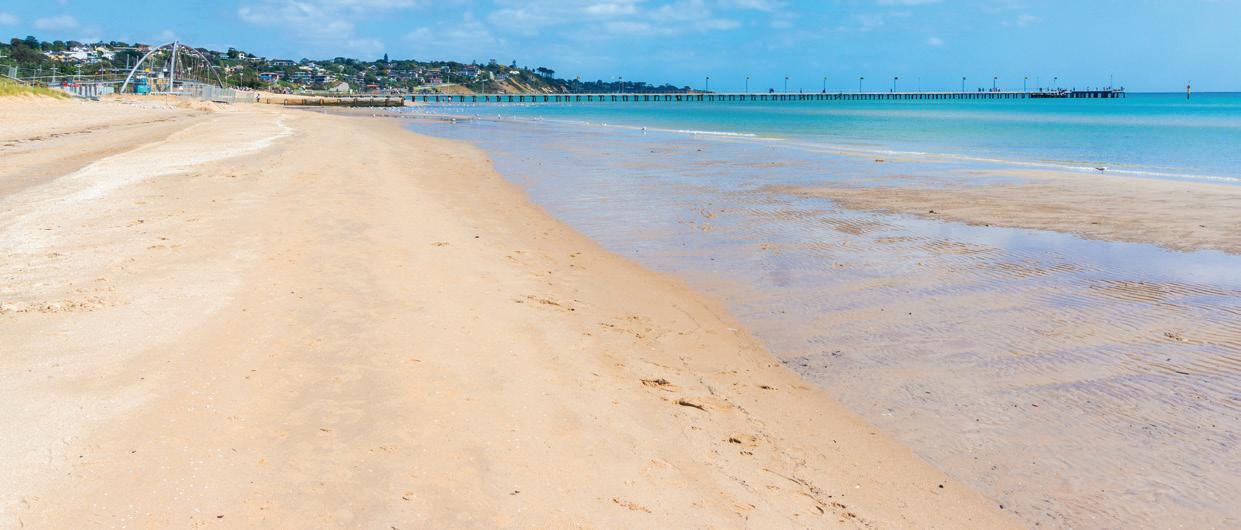
South East Water is using Advanced BlokAid® in its sewers to monitor sewer levels, derive flow rates and detect the presence hydrogen sulfide (H2S) gases. This Internet of Things (IoT) device, is helping the organisation detect and fix blockages before they potentially cause a spill to the environment.
South East Water manages more than 10,000km of sewer pipeline and almost 200,000 maintenance structures across its network in Melbourne’s south east.
The water organisation’s service region includes more than 270km of pristine coastline and beautiful beaches. That’s why it’s important for the utility to protect its environment and maintain the liveability of its region.
South East Water‘s Beach Guard project, implemented on the Mornington Peninsula, helps to protect beaches from potential wastewater pollution, to make sure the community can continue to enjoy the Peninsula’s sandy shores.
The key to Beach Guard’s success is Advanced BlokAid® Developed by South East Water and manufactured locally in Melbourne, Advanced BlokAid® is an advanced IoT-enabled device installed at the top of high-risk manholes to identify sewer blockages before they become a spill.
The device is easily installed in sewer manholes to monitor sewer levels, derive flow rates and detect H2S gases – all in near real time.
Recent independent lab testing of Advanced BlokAid® found the solution runs at an accuracy of +/- 5 mm for flow level in a DN150 pipe with 40mm flow depth up to a range of 3m.
The project is part of South East Water’s transition to becoming more predictive about potential problems, enabling it to fix problems before they become an issue for customers.
South East Water’s Managing Director, Terri Benson, said, “As part of our journey to becoming a digital utility, we’re making the shift from reacting to problems to being able to predict problems before they impact our customers or the environment. Solutions like Advanced BlokAid® are playing a big role in that shift.
“Thanks to Advanced BlokAid now reporting on the number of spills avoided, which is a first for our organisation.”
The Beach Guard project started as a trial in 2018, with a particular focus on the Mornington Peninsula after finding that the region contributed to around 20 per cent of all sewer blockages in South East Water’s network.

South East Water was able to detect a partial blockage in its network just a few weeks after the first deployment of the Advanced BlokAid® devices. The operations team were alerted to and able to clear the partial blockage before it became a larger issue or caused a sewage spill to a popular nearby beach.
South East Water’s General Manager Customer Service Delivery, Terry Schubach, said, “Since deploying the Advanced BlokAid® devices to the Mornington Peninsula, we’ve been able to detect and subsequently clear a number of blockages which could have resulted in spills to the environment.
“Cleaning up from the average dry-weather spill can cost our organisation around $20,000 or more, depending on complexity. So having this solution available to us provides improved visibility of our network where it is deployed, which in turn provides a better experience to our customers, protects our environment and helps us to save on costs.”
The data collected by the Advanced BlokAid® devices also helps inform South East Water’s proactive sewer cleaning and maintenance program, as its operators now have increased visibility on which sewers are due for maintenance. This proactive maintenance regime helps to reduce spills and long-term maintenance costs.
Other utilities across Australia and New Zealand are now realising the benefits of Advanced BlokAid®. The solution is available through Iota, the commercialisation arm of South East Water.
Learn more about Advanced BlokAid® and how other utilities are now using the solution to protect their sewers.


UTILITY • AUGUST 2019 WWW.UTILITYMAGAZINE.COM.AU WATER OPERATIONS AND TREATMENT 47
info@iota.net.au iota Services
http://Iota.net.au
Continuously monitor network health Avoid spills
from reactive to predictive asset management
Move
MAKING WATER SAFER BOTH SIDES OF THE TASMAN
For over 25 years, FILTEC has committed to making water safer: safer for drinking; safer for manufacturing; safer to put back into our environment.
With a growing recognition of water purity, public safety and the obligation to care for what we return into our environment, industrial and municipal customers in both New Zealand and Australia are working more closely with water treatment, re-use and conservation specialists like FILTEC.
FILTEC — a New Zealand headquartered design, construction, service and water treatment optimisation company — has been operating in Victoria for four years and recently acquired Practical Filtration Solutions (PFS), a Melbourne based water treatment design, installation and servicing specialist of a variety of water filtration systems.
The two companies, operating as FILTEC International, have already delivered a number of key projects in the industrial and municipal water treatment sectors, leveraging FILTEC’s design and fabrication capability with PFS’ local presence and experience.
These include a zero discharge, high salinity, wastewater recycle project for a Victorian feedstock company, a containerised reverse osmosis drinking water treatment plant for a Queensland country town and a containerised mine water treatment plant for a Queensland coal company.
FILTEC has previously designed and built municipal water treatment plants for Victorian regional water authorities including Wannon Water, Central Highlands Water and North East Water. They are currently providing ultra-violet light based wastewater disinfection systems for Coliban Water and TasWater, utilising a long-term technology partnership with Trojan Technologies.
FILTEC International is also partnering with Veolia Environmental to deliver an iconic PFAS/PFOS removal and water recycling solution to multiple CFA training sites around Victoria.
If you need water that is safer for drinking, safer for manufacturing and safer to put back into our environment, please don’t hesitate to contact FILTEC International or visit us at WIOA Bendigo in September, stand 115 and 134.



UTILITY • AUGUST 2019 WWW.UTILITYMAGAZINE.COM.AU
WATER OPERATIONS AND TREATMENT 48 +61 3 9543 5096 sales@filtecinternational.com.au www.filtecinternational.com.au Filtec is committed to making water safer Safer for drinking, safer for manufacturing, safer to put back into our environment. WIOA See us at Stand 115 & 134
Utility Partner Solutions NORTH EAST WATER’S WANGARATTA WATER TREATMENT PLANT.
Reality just got better
Increase efficiency and decrease costs with EcoStruxure Augmented Operator Advisor: Augmented reality for instant diagnosis and contactless maintenance

EcoStruxure Augmented Operator Advisor puts real-time information at your fingertips, whenever and wherever it is needed. The custom application improves operational efficiency with augmented reality — enabling operators to superimpose the current data and virtual objects onto a cabinet, machine, or plant.
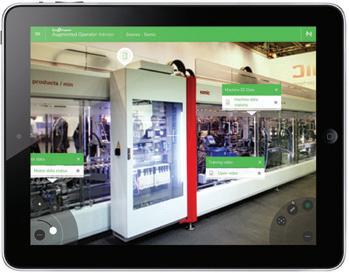
se.com/au
SYDNEY WATER ANNOUNCES NEW CHIEF EXECUTIVE OFFICER
On 31 May 2019, Sydney Water announced the appointment of a new Chief Executive Officer. Roch Cheroux — former Chief Executive of SA Water — will start with Sydney Water on 2 September 2019.
“I’m pleased to announce that Sydney Water’s new CEO will be Roch Cheroux. Roch was identified after an extensive executive search process both in Australia and overseas,” Sydney Water Chairman, Bruce Morgan, said.
“Roch is a key influencer in the water industry with significant experience in shaping and leading public and private corporations across the Asia-Pacific region and Europe.”
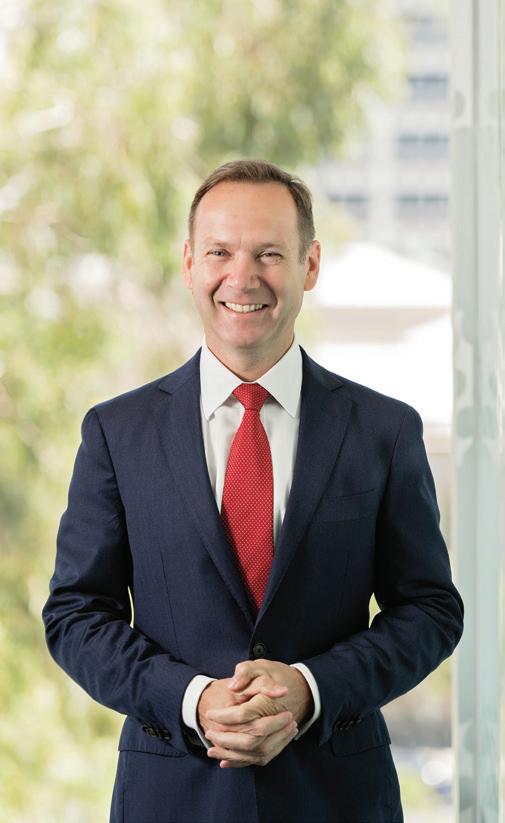
Mr Cheroux’s previous experience also includes Chief Executive Officer of SUEZ for the South East Asia region and SUEZ-Degrémont Australia and New Zealand, Managing Director of United Utilities Asia and Pacific (TRILITY), and Chief Executive and Chairman of Tallinn Water in Estonia.
Mr Cheroux is a Director of the Water Services Association of Australia (WSAA) and leads the national committee on Utility Excellence.
“We look forward to working with Roch on continuing to lead Sydney Water’s customer-centric journey and provide essential services to keep Greater Sydney liveable, productive and thriving for a sustainable future,” Mr Morgan said.
Mr Morgan acknowledged and thanked departing Managing Director, Kevin Young, who will leave the organisation on 31 July.
“Kevin has devoted the last eight years to building an organisation that prides itself on putting customers at the heart and looking after it’s people through safety and wellbeing,” Mr Morgan said.
“Under his leadership, Sydney Water has taken customer satisfaction and reputation to all-time highs and have achieved significant gains in culture, safety, diversity and digital transformation.
“Kevin has taken on the challenges of drought and growth, and has laid a solid foundation to prepare the organisation for future opportunities.
“He is widely recognised for the enormous impact he has had on the Australian water industry. He leaves the organisation fit for the future and I wish him all the best.”
MOVING STATES
Mr Cheroux finishes as Chief Executive of SA Water on 16 August.
South Australia Minister for Environment and Water, David Speirs, thanked Mr Cheroux for his contributions to SA Water and acknowledged the significant programs initiated under his leadership.
“I want to thank Roch for his services over the past three years during which his team has commenced important projects such as the rollout of the network of smart water sensors and the pursuit of a zero-cost energy future,” Mr Speirs said.
“Roch was also literally at the front of the SA Water ‘Ressie Runners’ team leading the crowd along the new tracks within Myponga Reservoir Reserve, supporting the sustainable activation of new community recreation spaces.
“His business and technical knowledge are not lost to the broader Australian water industry, and I wish Roch all the best in his new role.”
SA Water Chair, Andrew Fletcher AO, also wished Roch the very best for the next part of his career.
“Roch is a significant leader who has guided SA Water in achieving a great number of things, in particular the shift in culture to a positive, constructive place to work, and a focus on innovative solutions which have practical application and great outcomes for our customers,” Mr Fletcher said.
UTILITY • AUGUST 2019 WWW.UTILITYMAGAZINE.COM.AU WATER OPERATIONS AND TREATMENT 50
DEFINING SUSTAINABILITY IN ASSET MANAGEMENT
by Daniel Weaver, Executive General Manager – Operations, Interflow
When most people think of sustainability, environmental protection comes to mind. The modern definition of sustainability is far more wide-ranging however, and one frequently overlooked element of sustainability is asset management, which seeks to balance the delivery of services or outcomes and the creation of assets with the risks and costs associated with their ongoing use. An emerging trend within this field is quantifying environmental and social costs and factoring them into the life cycle cost analyses (LCCAs). By integrating those concepts with LCCAs, asset management can be a key vehicle for delivering against a water authority’s sustainability objectives.
In 1998, UNESCO defined a sustainable water system as one that is designed and managed to contribute fully to objectives of society, now and in the future, while maintaining ecological, environmental and hydrological integrity.
While asset management is not explicitly addressed in this definition, those who work in the water industry know that these assets have a direct impact on both the extraction of water and the return of wastewater to the environment, and therefore whether a water system is sustainable.
With a strong role in public health and environmental management, and with an increasing need to do more with less, the water sector is, in many ways, obligated to take into account financial, social and environmental outputs.
One approach used to measure and communicate the sustainability credentials of a business is termed the triple bottom line (TBL). Mirroring the use of ‘the bottom line’, which refers to financial performance, the TBL is a framework or theory that recommends that companies adopt a broader focus than profits alone by also committing to social and environmental concerns.
A typical LCCA involves evaluating the costs incurred by an asset over its useful life, however since the goals of asset management also include meeting level of service standards and reducing risk, the solution with the lowest life cycle cost is not always the most optimal solution. In order to make LCCAs as robust as possible, environmental and social costs and benefits should be considered alongside economic, level of service and risk management goals, enabling organisations to make better decisions in the long term.
ACHIEVING VALUE AND EFFICIENCY ACROSS THE ENTIRE ASSET LIFE CYCLE
Irrespective of any other sustainability requirements, the capital-intensive nature of the water sector requires that water authorities manage their physical assets effectively,
 DANIEL WEAVER EXECUTIVE GENERAL MANAGER INTERFLOW
DANIEL WEAVER EXECUTIVE GENERAL MANAGER INTERFLOW
with the objective of maximising the value derived from an asset over the whole life cycle.
While strategic asset management often has the biggest scope for impacting sustainability objectives, because these activities are involved with long-term planning for the future and the design and acquisition of new systems and assets, it is the existing assets that actually deliver economic, social and environmental outcomes. In addition, there could be opportunities for making cumulative changes to asset operation, maintenance and risk management procedures that would have a significant impact on sustainability objectives.
Examples of sustainability across different levels of asset management include: balancing the value proposition of future options against management of current assets; appropriate use of short-term repairs to manage cost and risk; selection of replacement options with minimal disturbance and maximum benefit; achieving better service or asset life through appropriate levels of maintenance; minimising waste/use of materials; getting maintenance right the first time to minimise the number of repeat failures and improve reliability; driving out inefficiency and ensuring service provision is affordable.
The water industry is evolving with its adoption of sustainable asset management best practices such as ISO 55000 and TOTEX, but needs to continue to challenge itself by exploring new innovations and emerging trends both across Australia and the world.
Interflow helps ensure the long-term sustainability and efficiency of utility infrastructure by providing construction, maintenance and renewal services that prevent failures, minimise impacts to the community and environment, and extend the operational life of water networks.
UTILITY • AUGUST 2019 WWW.UTILITYMAGAZINE.COM.AU
ASSET MANAGEMENT 51 Utility Partner Solutions
THE DATA-DRIVEN MODEL WATER’S ASSET MANAGEMENT
Sydney Water has embarked on a journey to harness its massive amounts of asset data to improve its strategic decision making. Here, Tammy Falconer, Head of Asset Knowledge at Sydney Water, explores what the utility has been doing in the space and how others can use data to inform their own asset management strategies including in the exciting new world of IoT

Asset Managers are faced with overwhelming volumes of data about their assets and this will grow exponentially through IoT. The challenge for asset managers is to interpret the data in meaningful ways that can benefit the asset and the organisation’s bottom line.
In response to this, Sydney Water are taking a new approach to leverage data across the asset management value chain to improve the organisation’s decision-making.
Ahead of her presentation at the 2019 Asset Management for Critical
Infrastructure Conference, running from 20–21 August in Sydney, we spoke to Ms Falconer about their new approach and their development of a data-driven model to inform long-term capital investment strategies.
Using over 40 different datasets including demand, cost and asset information as inputs, the model tries 2.6 million combinations before reaching the optimal solution.
“The dashboard that Sydney Water developed empowers engineers and strategists to analyse multiple pathways over different regions,

UTILITY • AUGUST 2019 WWW.UTILITYMAGAZINE.COM.AU
ASSET MANAGEMENT 52
TAMMY FALCONER, HEAD OF ASSET KNOWLEDGE, SYDNEY WATER
MODEL INFORMING SYDNEY MANAGEMENT DECISIONS
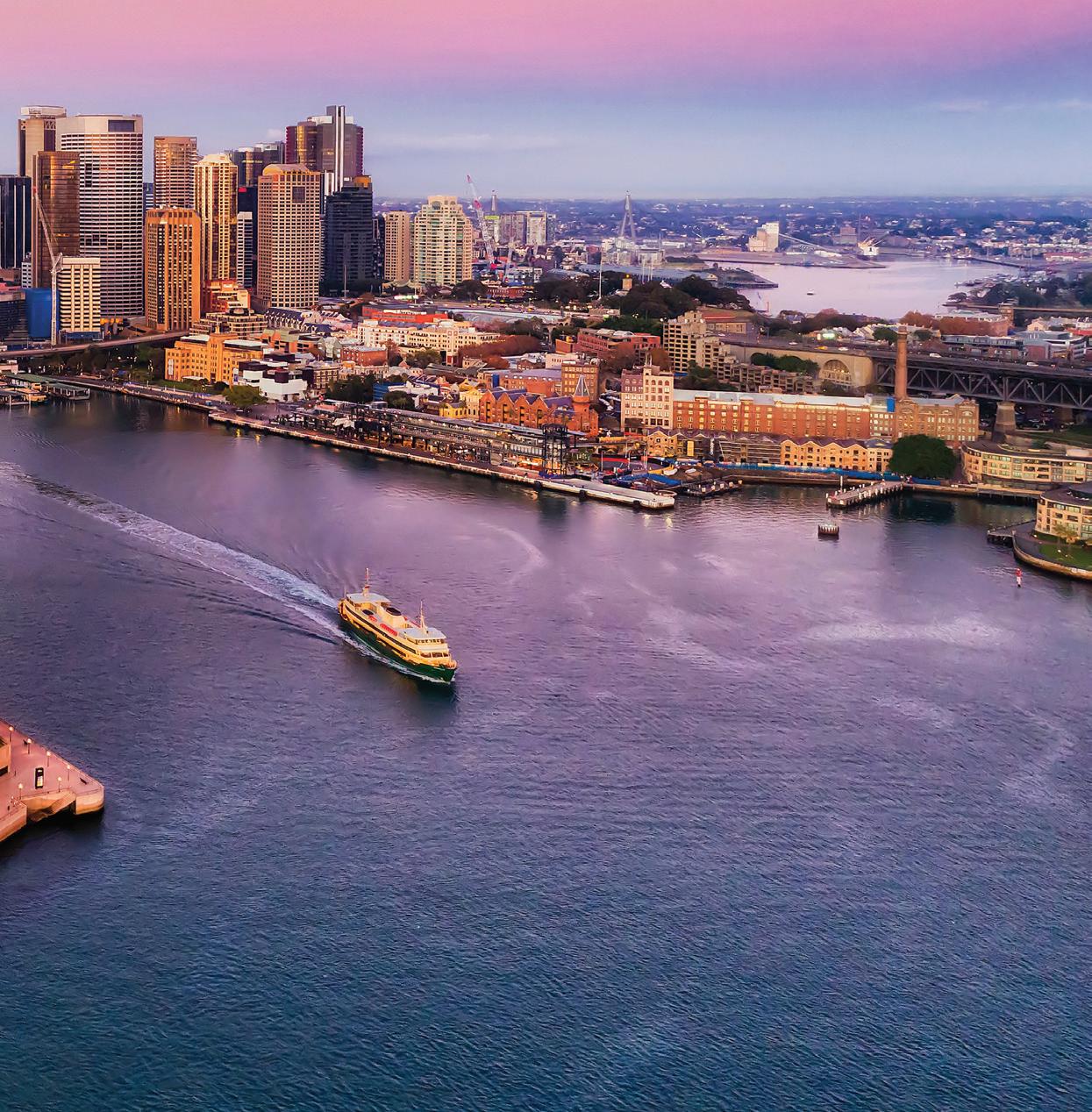
timeframes, investment drivers and products,” Ms Falconer said.
“In this way, it provides a comprehensive and robust input to investment planning to create prudent investment to meet the needs of our growing city.”
Sydney Water is also using data in its operations and maintenance, piloting various IoT technologies.
“One example is placing sensors in sewer manholes to enable us to detect potential overflows and address these before they impact our customers,” Ms Falconer said.
“In one case, a high impact overflow was averted, preventing impact to 4,700 properties.”
RETHINKING DATA AS AN ASSET
Ms Falconer said the solution to converting raw data into beneficial intelligence is based on a very simple premise; treat information as an asset like we do our physical assets.
By applying the same kinds of practices, asset managers can maximise the value of that information. Ms Falconer said you can plan for your information assets by answering several pre-emptive questions.
“What information do you need to drive your business; what standards does that information need to meet; and how will new information from IoT or other sources work with your existing information to help you make better decisions?”
In the same way that managers plan for the lifecycle of physical assets, they can also plan for managing asset information through its lifecycle.
“Is your data structured in a way that you can easily join it with other data? Are you receiving it in a way that makes it easy to consume? Are you able to track and manage the quality of data against the standards you set for it?”
Ms Falconer said managers must work with IoT vendors and their asset management, data and technology teams to answer these questions. IoT on its own will provide some benefits, but the real value comes when it augments the information that you already have.
FURTHER LEVERAGING I o T AND DATA ANALYTICS
Ms Falconer predicts that the organisations that will be most successful are those that see data as a strategic asset for their organisation
and can link their customer, product, asset, financial and risk information to drive better decisions in the short and long term.
“This data driven approach will enable them to build confidence with their customers, stakeholders and regulators, deliver new and better services, and optimise their asset base to achieve this,” Ms Falconer said.
There is no question IoT will assist organisations to make better real-time or near-time decisions, improve customer experience, organisational efficiency and drive down cost.
However, to maximise the value of IoT, Ms Falconer said organisations must use this information as a feedback loop, informing asset planning and acquisition, and operations and maintenance plans.
“The best value will be derived from using IoT and a myriad of other data sets to drive artificial intelligence, predictive and prescriptive analytics to help us humans make the best decisions for our customers.
“As utilities, we are all aiming to become more customer-centric, and data and analytics has a key role to play in achieving this.”
Hear more from Tammy Falconer about how you can better use data in your organisation’s asset management plans in her presentation at the 2019 Asset Management for Critical Infrastructure Conference, running from 20–21 August at Swissôtel, Sydney. Register at assetmanagementevent.com.au/buy-tickets.
UTILITY • AUGUST 2019 WWW.UTILITYMAGAZINE.COM.AU
ASSET MANAGEMENT 53
UNDERSTANDING AND PREVENTING WATER HAMMER
Water hammer — which is a pressure surge within a piping system — can cause significant damage to any system not designed to accommodate such stresses, including burst pipes, damaged valves and more. Having a clear understanding of what is causing the phenomenon in a particular installation is key to identifying the right solution.
Water hammer occurs when a fluid in motion is forced to stop or change direction suddenly. This often occurs when a valve closes suddenly at the end of a pipeline system, and a pressure wave grows in the pipe.
Because of this, pump starts and stops can cause water hammer, as a rapid change in flow and system pressure can cause the sudden closure of check valves, while changes in the direction of flow can induce water column separation.
Pressure tanks, surge chambers and similar accumulators can all mitigate the effects of water hammer, but prevention is often a better strategy.
Valve closure time significantly impacts the likelihood of damaging water hammer occurring, as the more slowly the valve is closed, the less significant the increase in pressure will be, thus reducing the incidence and intensity of water hammer.
Controlled valve closure can be achieved manually or by use of motorised valves.
Soft starters and variable speed drives (VSDs) can be used to control the speed of the pump during starting and stopping. This allows for a more gradual change in pump speed to prevent water column separation, flow reversal and sudden check valve closure.
Soft starters and VSDs can provide a range of advanced motor and system protection functions as well as monitoring and control options.
The effectiveness of electronic speed control in the reduction of water hammer is determined not only by the type of technology within the soft starter or VSD, but also by the pump and system curves.
With a ‘steep curve’ pump, a large change in pressure produces a small change in flow. Conversely, with a ‘flat curve’ pump a small change in pressure will result in a large change in flow.
To help abate water hammer in a system, a steep curve pump should be used wherever possible. The relationship between pressure and flow rate for such pumps makes precise control of the flow rate via control of pump speed much easier.
Soft starters run the system at full speed during operation, controlling the speed during pump starting and stopping only. Once the system reaches full speed, the soft starter is typically bypassed and operates with very high efficiency, thus reducing running costs. Soft starters also come at a lower cost than VSDs and do not necessitate the use of costly filters — they should be the preferred method of electronic speed control for the mitigation of water hammer.
The most advanced soft start (and stop) mode is direct acceleration and deceleration control, which is ideal for the elimination of water hammer because it enables selection between a variety of starting and stopping profiles, depending upon the unique characteristics of the pumping system. Furthermore, the ability to select and adjust a variety of control strategies makes it simple to tailor operation for optimal results no matter what the system characteristics.
For more information about how to mitigate and prevent the effect of water hammer, visit ipd.com.au.
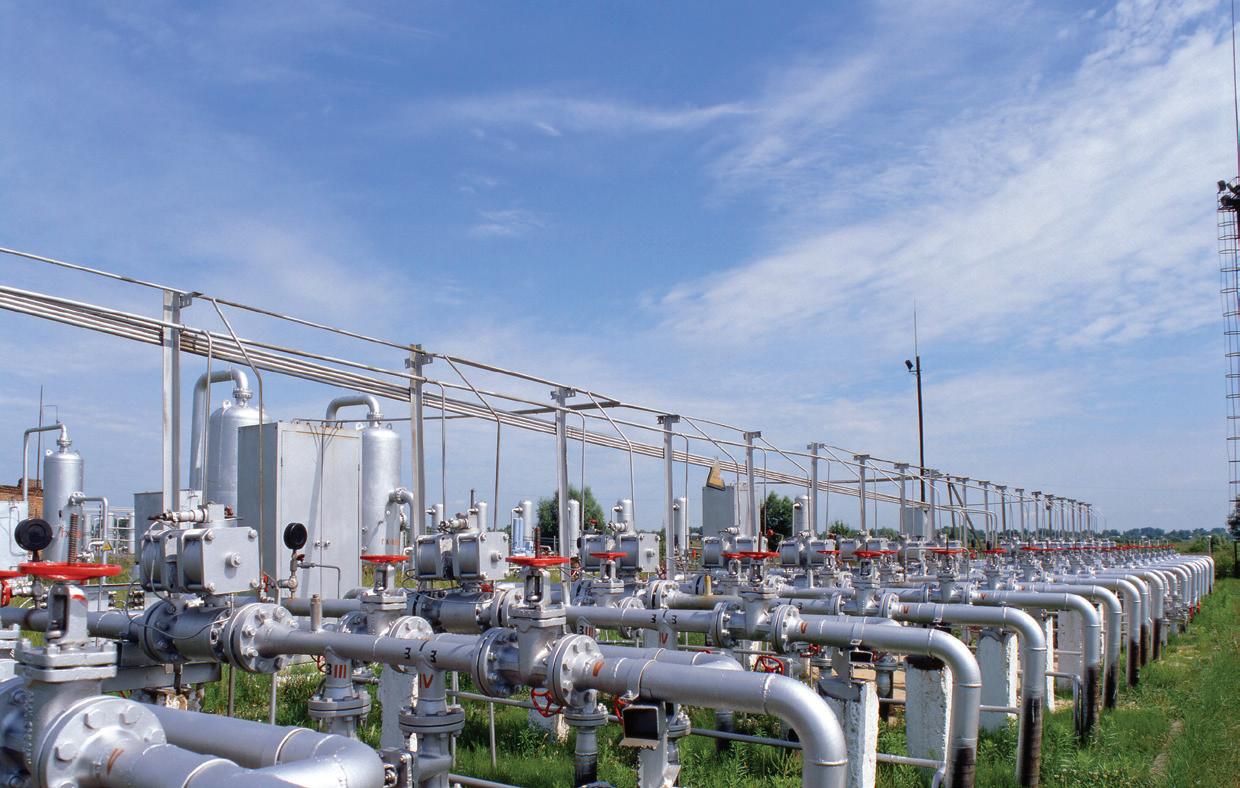
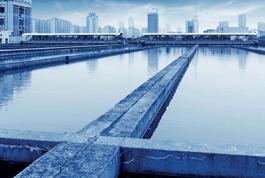
UTILITY • AUGUST 2019 WWW.UTILITYMAGAZINE.COM.AU ASSET MANAGEMENT 54
Utility Partner Solutions
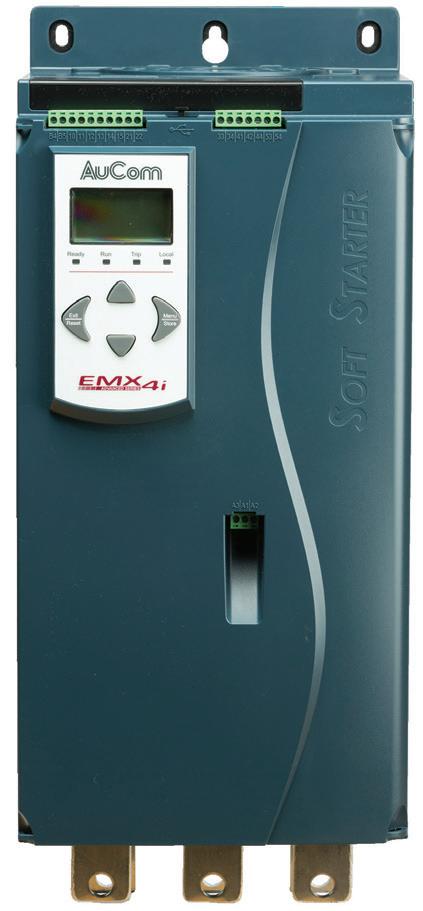

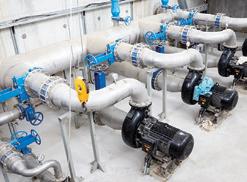
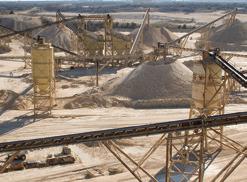

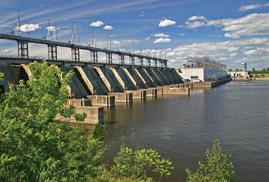
Soft Starters
Power Distribution | Power Monitoring | Industrial Control | Photovoltaic | Installation & Accessories | Test & Measurement | Services National Customer Support Centre 43 Newton Road | Wetherill Park | NSW 2164 Tel: 1300 556 601 | Fax: 1300 550 187 Email: customerservice@ipd.com.au | www.ipd.com.au End to End Service Capabilities Custom DB Manufacturing Facility National Customer Support Dedicated Training Facility
Fully featured motor control solutions
New EMX4i range 24 – 580A with internal bypass Features • XLR-8 control to prevent water hammer • Emergency run mode • Real time metering & monitoring • Automated pump clean function • Extended motor protection functionality • Clock & calendar scheduling
HOW WESTERN POWER
CREATED A DIGITAL ASSET MANAGEMENT STRATEGY

With the emergence of new renewable power generation technologies and storage solutions, it’s an exciting time to be in the energy industry. Ahead of his presentation at the Asset Management for Critical Infrastructure Conference, running 20–21 August in Sydney, we spoke with Carlos Gamez, Strategic Asset Performance Manager at Western Power, about current opportunities and challenges in energy asset management and the utility’s new Digital Asset Management Strategy.
UTILITY • AUGUST 2019 WWW.UTILITYMAGAZINE.COM.AU ASSET MANAGEMENT 56
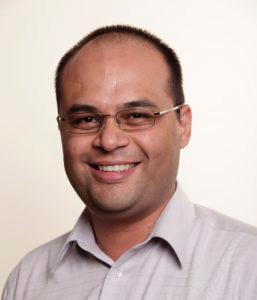

As an electro-mechanical engineer, Carlos knows that there is a strong onus on asset managers to ensure that processes and frameworks not only keep up with the newest developments, but capitalise on them to best meet the changing energy needs of customers.
He said that beyond the uptake of new technologies, the electrification of the transport industry is set to drive further changes in the sector more broadly.
For Mr Gamez, these conditions cumulatively create a new context which has not existed in the past hundred years of the electrical energy industry.
THE CHALLENGE: INTEGRATE NEW TECHNOLOGIES
Greeted with new technological developments, Mr Gamez describes a kind of duet for asset managers: they must understand the capabilities of new technologies, and know the capacity to integrate them into their business processes.
When discussing the challenges and opportunities presented to asset management professionals, Mr Gamez has observed the same patterns of debate in the industry.
“As is often the case with innovative solutions, the conversation in this space is filled with new terms, ideas at varying levels of maturity, and a multitude of offerings to solve similar problems,” he said.
“Sifting through all the available information in order to determine the most suitable solution for a particular problem can be a challenge.
“At the same time, the capacity of the organisation to adapt current business processes and systems needs to be considered when implementing these new technologies.”
One approach in this space that Mr Gamez believes is showing promising results is that of running trial or pilot projects.
“In these projects, a business challenge is chosen and a number of technologies are trialled in pursuit of an optimal solution for that challenge,” he said.
“These trials then inform the business case and the management of change that needs to be followed to scale these solutions.”
BUILDING A DIGITAL ASSET MANAGEMENT FRAMEWORK
In his work at Western Power, Mr Gamez guided one such trial toward successful outcomes.
Drawing on over 20 years’ experience across a vast range of engineering, management and process improvement areas, he oversaw the creation of a Digital Asset Management Strategy to prepare the organisation for future trends in the energy sector.
"As part of this, we’re exploring and implementing the use of technological innovations that enable us to manage assets in a way that drives increased value for our customers.”
Mr Gamez explained that one of the core aspects of digital asset management involves the use of traditional asset management concepts in the context of the new technological solutions available in the market.
In order to render the best value for their organisation and their customers, asset managers must ensure they apply sound engineering principles, with the support of new technologies.
“Our Digital Asset Management Framework is used to support actionable asset management decisions, starting with reliability-centred maintenance concepts and going through the capture of data, asset performance modelling and visualisation of outcomes,” he said.
Ultimately, Mr Gamez said that the work of asset managers creates clearer, more ordered and efficient strategies to embrace changes: all for the better for the 1.1 million Western Australians Western Power is there to serve.
“Asset management provides a framework of methodical thinking, processes and systems that will help us navigate this transition period and arrive at the future asset configuration that best serves our customers and our community,” he said.
ASSET MANAGEMENT UTILITY • AUGUST 2019 WWW.UTILITYMAGAZINE.COM.AU 57
CARLOS GAMEZ, STRATEGIC ASSET PERFORMANCE MANAGER AT WESTERN POWER
Full water savings for STORMWATER HARVESTING SCHEME
Maintaining numerous world-class sporting fields and extensive surrounding reserves requires significant amounts of water for irrigation, which can be costly, environmentally damaging and difficult to sustain in times of drought. Blacktown City Council overcame these issues with the innovative Angus Creek stormwater harvesting and reuse scheme.
The Blacktown International Sportspark in Sydney is an elite international sporting facility that hosts over 5,000 events and 750,000 visitors per year. Originally developed as a major playing and training venue for the 2000 Sydney Olympic Games, the sportspark has continued to grow and develop in the years since.
In order to maintain the park and its numerous sporting fields, substantial volumes of water are required for irrigation. Blacktown City Council needed a sustainable water source that would improve both drought resilience and the condition of local waterways, and also be financially viable and carbon neutral.
The Angus Creek stormwater harvesting and reuse scheme (the scheme) was developed to make use of the excess stormwater flows from nearby Angus Creek, as well as the runoff from hard surfaces throughout the sportspark. This water is then used to irrigate the sportspark and neighbouring reserves.
Using a combination of multi-functional design and self-financing governance models, the scheme is believed to be the first stormwater harvesting scheme of its type in New South Wales that captures full water savings.
ENSURING DROUGHT RESILIENCE
A key aspect of the scheme design was reducing the need for potable water — even under potential future water restrictions during drought periods — which was achieved by having three storage ponds form the scheme’s main water storage. These storage ponds serve a dual purpose: storing up to 8ML of stormwater while also acting as flood detention basins for the sportspark.
The storage ponds also incorporate floating wetlands, which provide stormwater treatment as the suspended solids are given time to settle while the water is moving through the ponds. The floating wetlands then treat the stormwater through the biological uptake of nutrients present in the water, making it suitably treated for irrigation purposes while mitigating any public health risk by reducing the establishment of algae.
By harvesting and treating stormwater, the scheme reduces the need to use potable water for low risk end uses, such as spray irrigation, by generating its own reliable,
fit-for-purpose water.
To combat the issue of blockages within the storage pond pump station, a mesh litter basket was implemented. It was found that small wildlife (mainly snails and gambusia) and some algae stands were finding their way into the pump station, causing blockages in the downstream screen filter. This also meant that the screen filter required higher frequency manual cleaning.
The 200 micron mesh in the wetland pit collects and stores the algae and animals, while providing a much greater surface area and infrequent maintenance compared to the screen filter.
MINIMISING THE ENVIRONMENTAL IMPACT
Improving the local waterways and surrounding environment was imperative to the scheme and was achieved through an innovative project design.
The 655-hectare catchment generates about 2,000ML of runoff each year. Extracting excess flows above 10L/s and reducing the amount of stormwater in the creek has decreased the overall pollutant loads downstream of the extraction point, while reducing creek bank erosion and stress on aquatic ecosystems that are sensitive to large and frequent flows.
The scheme also implemented a commonly used technology in drinking water treatment — the SCADA system. This technology collects and analyses real-time data about water quality and quantity, which is then used to control the pumping and treatment systems. The SCADA system uses multiple online water quality monitoring points, collecting and measuring turbidity, oxidation-reduction potential (ORP) and electric conductivity, which are used as critical control points that can turn off pump switches, preventing the system from harvesting water that is not suitable for irrigation.
One of the issues encountered during the wetland establishment phase was the large water bird population, as they were reaching the bottom of the wetland and removing plants. To combat this, water levels were increased. Although this slowed plant growth rates and prolonged the establishment period, it made it significantly more difficult for the water birds to remove the plants.
UTILITY • AUGUST 2019 WWW.UTILITYMAGAZINE.COM.AU STORMWATER
58

Additional measures were put in place to reduce the environmental impact of the scheme, which includes a 40kW solar system to offset the electricity used by the pumps and treatment measures — making the scheme carbon neutral. Macro-invertebrate analysis and water quality monitoring also provide valuable data for long-term environmental management.
SELF-FUNDED AND FINANCIALLY SUSTAINABLE
Perhaps the most impressive aspect of the scheme is that it is financially sustainable. The scheme is self-funded, with the harvested stormwater sold to water users at the same cost as potable water. The funding generated reduces the need for other sources of revenue to fund ongoing operation and maintenance costs and also allows for the employment of a Stormwater Harvesting Officer to oversee the project.
However, approvals to extract water and construct creek works are difficult and can challenge a project’s viability. There were many challenges in acquiring approval to divert water from the creek into the offtake dam, but the NSW Office of Water provided an exemption to Blacktown City Council from purchasing the 200 water unit shares that were initially required, which was enormously important in ensuring the project’s financial viability.
SUITABILITY FOR OTHER AREAS
While the scheme is transferable to other high-end open space and recreation facilities where irrigation demands are high, it would be particularly applicable to areas where an adjacent waterway can be drawn upon for water supply, and where the adjacent waterway is subject to urban excess flows or otherwise where large catchment flows can be captured for stormwater harvesting.
Governance regarding the creek extraction and construction works may be a limiting factor, as was nearly the case for this project. Another major factor that could limit other projects is the limit set for stormwater harvesting. The Angus Creek scheme can only harvest stormwater during rainfall events or when flow is above 10L/s, which was a requirement from the NSW Office of Water.
This requirement affected the design of the scheme, and resulted in the inclusion of additional components including, large pumps to maximise fast extraction, large water storages able to hold six to eight weeks’ worth of irrigation and treatment measures capable of handling higher turbidity loads associated with storm flows.



The scheme has caught the attention of many for its innovative and sustainable design, and was highly commended at the 2016 IPWEA Awards for Excellence in Environmental Enhancement Project of Initiative including Recovering, Recycling and Reusing. In 2018, the scheme won a Stormwater NSW Excellence in Infrastructure award and was highly commended by Stormwater Australia under the same category. More recently, the scheme received a certificate of commendation as part of the Greater Sydney Commission’s planning awards great sustainability initiative, awarded by Lucy Turnbull.
STORMWATER 59
UTILITY • AUGUST 2019 WWW.UTILITYMAGAZINE.COM.AU
FLOATING WETLANDS. IMAGE BY BLACKTOWN CITY COUNCIL
POND AND WETLAND DRONE IMAGE. IMAGE BY BLACKTOWN CITY COUNCIL
WETLAND. IMAGE BY BLACKTOWN CITY COUNCIL
CREATING A SAFER INDUSTRY
With the Victorian Government amending the Occupational Health and Safety Act 2004, to provide for the criminal offence of industrial manslaughter, it is imperative that organisations are making workplace health and safety a priority. Utilities such as Melbourne Water are looking at new and innovative strategies that encourage safe work practices — for employees and the rest of the industry.
An industrial manslaughter offence attaches criminal responsibility to negligent conduct causing death — of a worker, supplier, contractor, routine maintenance worker, site visitor or passer-by, customer, neighbour or member of the public — by an employer, director or officer of the employer. The penalties for such an offence are significant, with a maximum penalty of 20 years' imprisonment for person offenders and a $16 million fine for corporate offenders.
These changes to legislation highlight that it is more important than ever for organisations to ensure they are implementing, updating and maintaining safe work practices.
Melbourne Water is one organisation that exemplifies a commitment to occupational health and safety, and has been recognised at Victoria’s WorkSafe Awards for the past two years running.
In 2017, the water authority received the award for Best Solution to a Specific Workplace Health and Safety Issue for its work with bespoke virtual reality programs in identifying hazards early in asset design. The organisation was again recognised in 2018, placing as a finalist in two award categories, Best OHS Achievement and Best Solution to a Specific Workplace Health and Safety Issue
These accolades recognise Melbourne Water’s implementation of innovative and coordinated safety approaches to working with all construction partners. David Tregoweth, General Manager of Safety at Melbourne Water, said every person could make a contribution to health and safety.
A SAFETY CHECKLIST FOR EMPLOYERS

“We take the safety of our people very seriously, which is why we continue to look for ways to promote a collaborative approach to safety,” Mr Tregoweth said.
“For us, safety is about prevention. Being prevention-led can stop incidents and injuries from occurring in the first place, which is ultimately our real goal.”
Melbourne Water has a significant program of capital infrastructure works which support its delivery of water and sewerage services to Melbourne.
“Our operational teams and contractors oversee major infrastructure projects every day of the week so it’s critical that we are all on the same page when it comes to safety, no matter where the work is taking place,” Mr Tregoweth said.
In May 2018, Melbourne Water also joined forces with the Water Industry Operators of Australia (WIOA) to develop the Water Industry Safety Event (WISE). This initiative forms part of Melbourne Water’s generative safety strategy, which is focused on looking for ways to lead safety and create a vibrant health and safety community internally as well as externally.
The second annual WISE event will take place on 9 October at the Batman Royale in Coburg, Melbourne, and is a fantastic opportunity for water industry professionals to share experiences and learn from one another to improve the safety in the water industry.
Register at https://wioa.org.au/nevent/wise-2019/
Review OHS management systems: a comprehensive review of the efficacy of OHS management systems and the allocation of appropriate responsibility for the performance of those systems should be undertaken.
Review OHS leadership and culture: Employers need to ensure that any negligent conduct of an employee is not authorised or permitted, through its overall culture or organisational standards.
Due diligence for directors and officers: Those in positions of leadership need to be proactive and diligent in ensuring appropriate health and safety systems, procedures and processes are in place.
Review insurance and risk allocation: Employers needs to consider their insurance arrangements for their organisation and their officers. If an employer shares control of a workplace with other duty holders consideration has to be undertaken to risk allocation.

UTILITY • AUGUST 2019 WWW.UTILITYMAGAZINE.COM.AU 60 WATER INDUSTRY SAFETY



DRIVING A DIGITAL AN MD’S PERSPECTIVE
by Tony Kelly, former Managing Director of Yarra Valley Water
When I left Yarra Valley Water in 2014, I believed, and still do, that every utility will have real-time monitoring of their infrastructure networks that is fully integrated with data analytics and decision-making systems within ten years.
The days of utilities waiting for their customers to call and tell them there is a burst water main, a pressure or a water quality problem are rapidly coming to an end. Customers, regulators and the media now expect a water utility to know exactly what’s going on, in real-time. Soon it will be the utilities that are proactively calling their customers to assure them the problem is known, is being addressed and that the system will be back to normal within X minutes.
• More and more data will be created, but how do we turn all that data into useful actions and knowledge?
• How do I ensure the organisational culture allows us to exploit the potential offered by these technologies?
While there is a lot of debate about exactly what a digital utility looks like, everyone is likely to agree it must include real-time, automatic monitoring of the utility’s network allied with smart analytics.

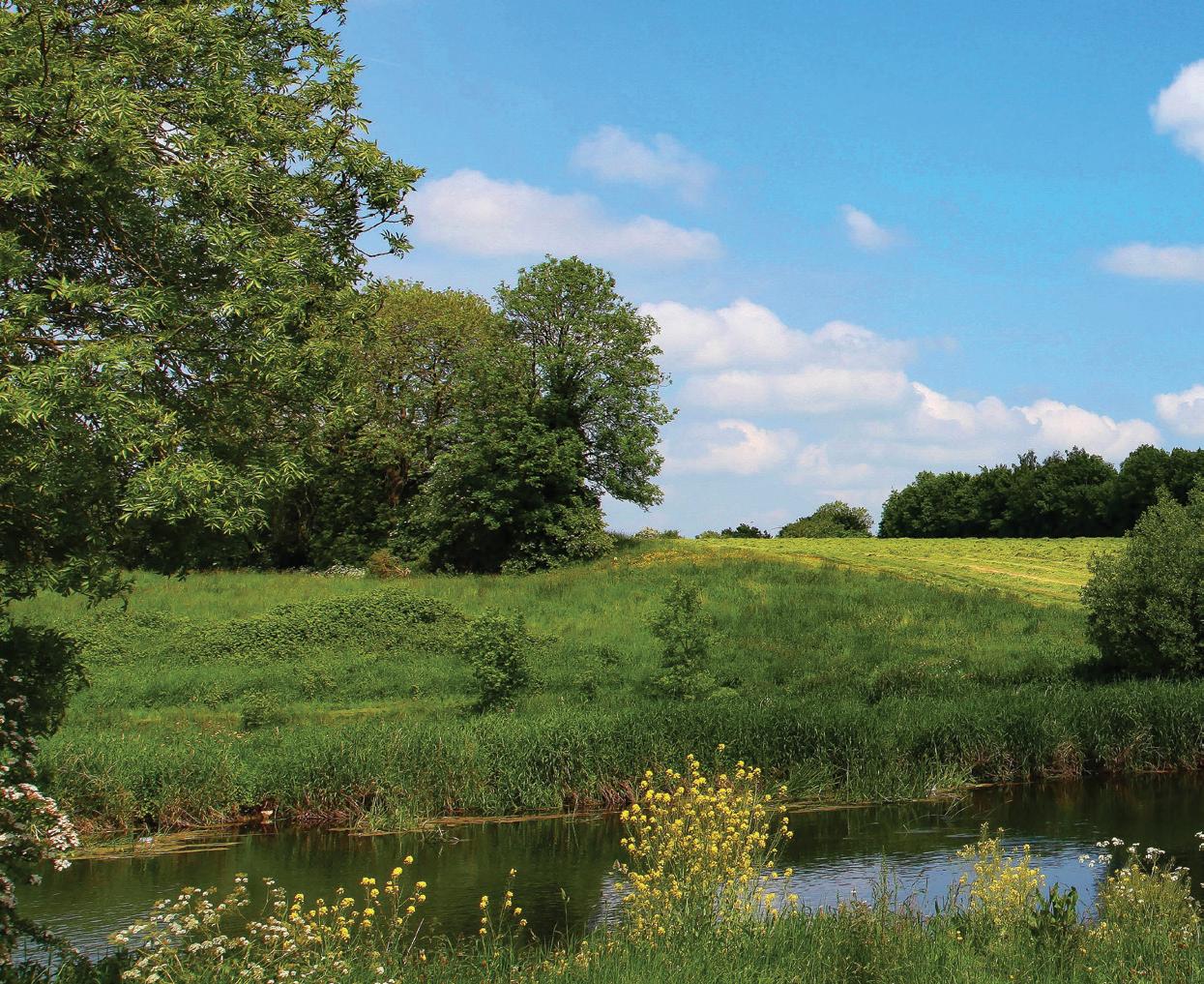
Also heading for the exit is the utility’s dependence on local knowledge. We all know the salt-of-the-earth operators who have worked on the network for thirty or even forty years and who know every valve on a first name basis. These guys have served the industry extremely well, but new technologies will dramatically amplify the amount of data coming into the utility and the manual methods used by these guys will not be able to keep up. Utilities need to build a whole new level of capability.
It is in this context that everyone at every water industry conference these days seems to be talking about evolving into a digital utility. There are many challenges surrounding this that the CEO of a utility needs to face:
• While the technologies are seductive, how do I build an effective business case?
• Which technologies do we buy? How do I future-proof our utility and not get locked into proprietary systems with short half-lives?
• How do I start this process in a way that ensures I do not compromise the bigger picture and provides the flexibility to gradually and sensibly build a workable integrated digital architecture?
• The cost of communications and network sensors is coming down and the business case is getting better by the year, but when do we jump in – now, or do we wait?
Cloud-based Central Event Management (CEM) systems based on data analytics and machine learning can be a sensible way to start. The service enables early detection of network events and incidents such as leaks, bursts, faulty assets, telemetry and data issues, changes in demand and operational failures. Aggregating different data types from several sources and learning from previous events, the CEM software continuously improves its predictions.
The first operative example of this is TaKaDu’s Central Event Management which is used by numerous Utilities in Australia (as well as in the US, Europe, and Latin America).
The system acts as the central management layer for all network events, integrating with any modern IT architecture, and other systems such as enterprise asset management, work order, GIS and CRM (call centres) and acoustic leak detection.
TaKaDu’s CEM bridges the organisational silos, providing a utility with the opportunity to improve its levels of customer service and reduce costs – the holy grail of any strategy. With greater visibility, the utility can prioritise jobs more effectively and respond more quickly, know immediately if there is a change in the configuration of the system or a rapid change in demand, and monitor pressure and the behaviour of pressure relief valves more effectively.
UTILITY • AUGUST 2019 WWW.UTILITYMAGAZINE.COM.AU I o T AND SCADA 62
TRANSFORMATION:
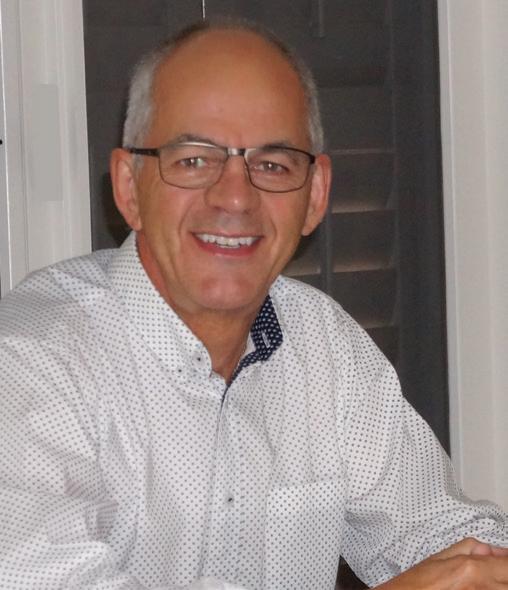
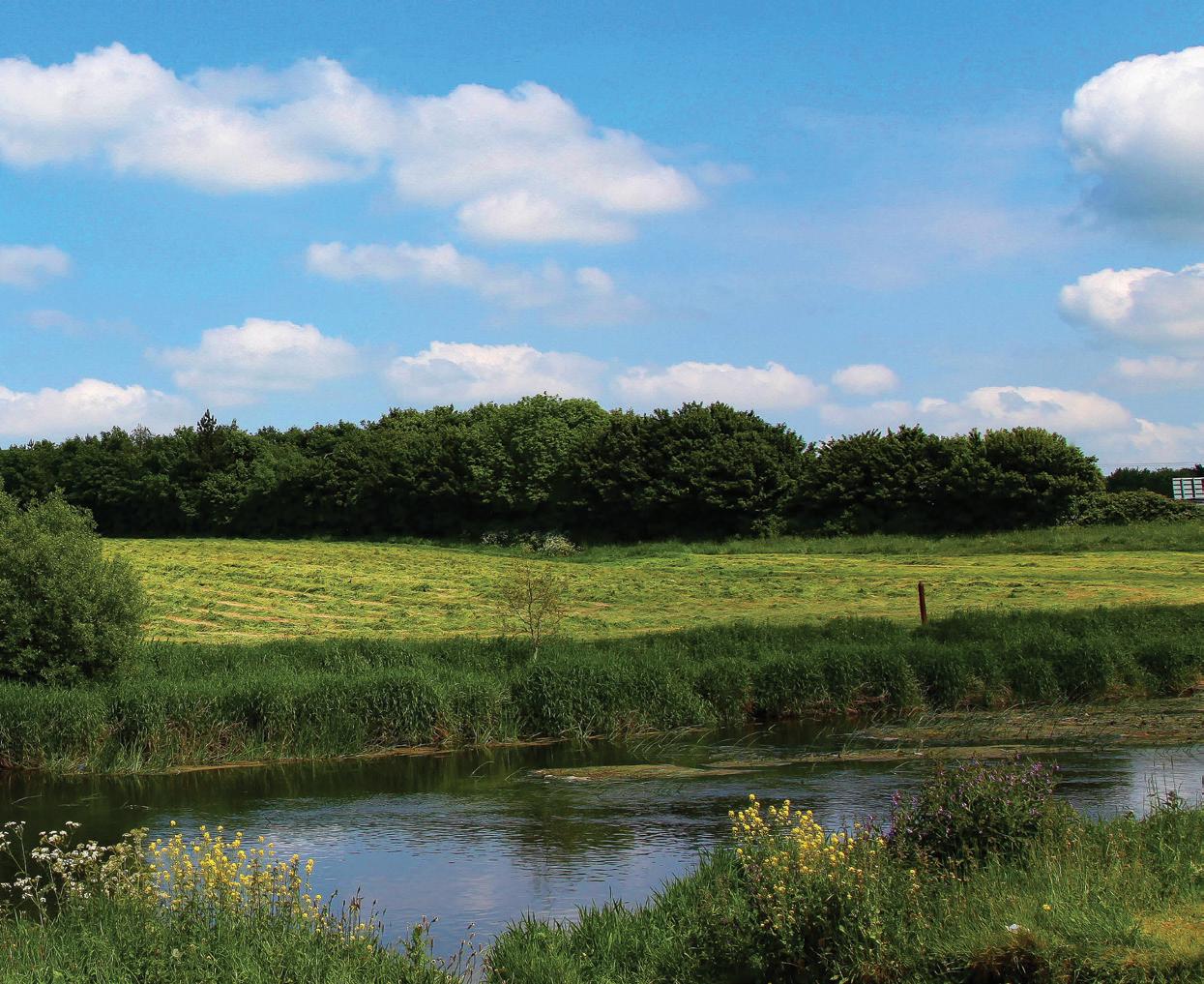
The utility can also detect when and where a leak has occurred, how much water has been lost and monitor the integrity of the pressure districts. With a better understanding of the relationship between supply and demand, the utility can optimise the capacity of its system over time. Combined with the newly available water quality sensors, it will be the first, rather than one of the last, to know if there is a drinking water quality problem.
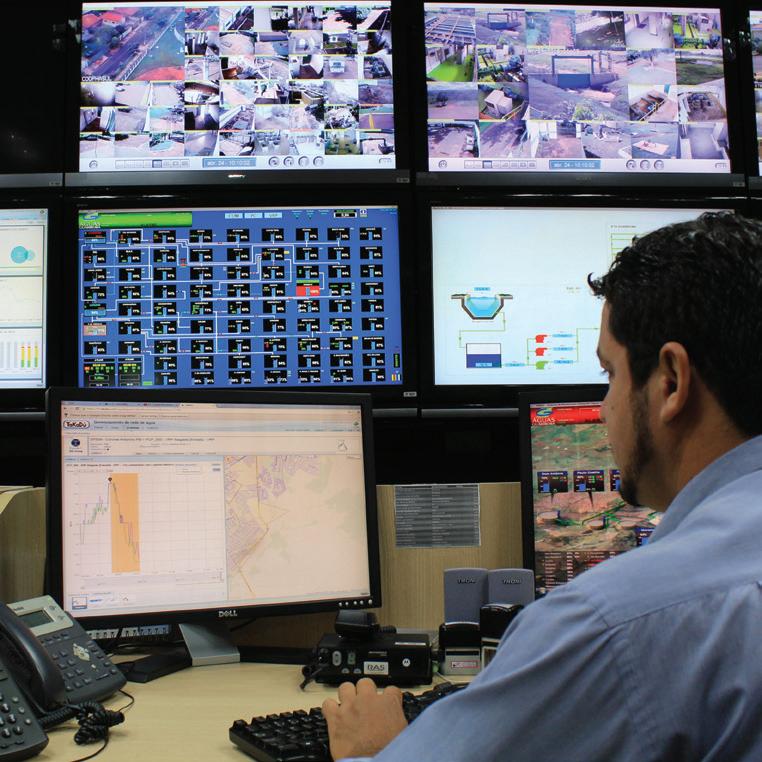
While many utilities are struggling to work out a pathway into the digital future, a data-driven CEM system provides a low-cost, no-regrets entry point that is easy to implement. The system provides an opportunity to venture into this minefield easily and efficiently without ‘betting the farm’ with a big bang.
Utilities don’t need to wait until they have all the data – they can start with what they have and add the necessary detail. The right system will help the utility identify the ‘bare’ spots in the data and pinpoint where the data needs to be enhanced.
And it doesn’t stop there – utilities have a larger role to play in making cities more efficient, more sustainable and more liveable. For example, utilities in the US are already partnering with popular SatNav systems to inform commuters of traffic disruptions caused by infrastructure failures. A CEM system prepares utilities for their role in supporting smart cities and enables them to respond much more effectively in the event of a major natural disaster.
In summary, CEM systems can improve a utility’s operational efficiency, foster collaboration across the organisation and improve levels of customer service. Looking ahead, data-driven CEM systems have the potential to make a quantum leap in the levels of customer service delivered by water utility networks. Can your utility afford not to have one?
Tony Kelly, a civil engineer, has spent over 40 years in the water industry. During this time he held a number of diverse executive roles covering all areas of engineering, billing, strategic planning and pricing. Tony was Managing Director of Yarra Valley Water from 2003-14 and since that time has been working with a number of organisations in an advisory capacity – including TaKaDu where he is a member of their Advisory Board.
UTILITY • AUGUST 2019 WWW.UTILITYMAGAZINE.COM.AU I o T AND SCADA 63
Smart water meters have proven their worth; NOW NARRABRI IS INVESTIGATING WASTEWATER ANALYTICS
Narrabri Shire Council, along with most of Australia, is caught in the grips of the worst drought the country has seen since the devastating millennium drought. Saving water is a top priority, and every drop is precious when providing a reliable drinking water supply.
Narrabri has been taking measures to reduce water loss by utilising Taggle System’s smart water network and analytics application MiWater to find and fix leaks before the water drains away.
In 2017, Narrabri installed smart water meters to monitor hourly consumption on every house, business and council property connected to town water. This technology has assisted the council in identifying leaks and taking proactive steps to maintain and improve the water network.
Narrabri’s water losses were significantly reduced, having previously experienced 40 per cent non-revenue water, the third highest in New South Wales. Narrabri has managed to decrease that figure by half to 20 per cent non-revenue water and expects to recover another ten per cent within two years’ time.
The installation of automatic meter reading devices has helped to generate more revenue, more accurate accounting of water and the ability to continuously monitor performance. Other outcomes included more accurate billing, fewer rebates, reduced infrastructure damage and lower maintenance costs.
Customer relations have also improved dramatically, even difficult customers become
very thankful when costly leaks are identified. The Taggle solution includes MyH2O, a customer portal which allows residents to monitor their own water consumption. This gives residents more insight into their behaviour and the ability to set high usage alerts to avoid wasted water from forgotten running taps.
MONITORING WASTEWATER IS ON THE HORIZON
After its success with smart water meters, Narrabri is now looking into monitoring its wastewater network.
Level sensors will provide real-time data to monitor the sewer network and provide alerts to any potential blockages. This will allow for maintenance teams to address problems before they impact customers and become potential Environment Protection Authority reportable events.
Narrabri will be one of three utilities trialling Taggle’s soonto-be-released MiSewer wastewater analytics application which will correlate data from multiple sensors to provide valuable insights.
Rain gauges are already in place to monitor the effect rain has on the sewer network, as well as on water use by residents. Since these were installed two years ago there has, unfortunately, been very little rain to monitor, which highlights the importance of conserving every drop.
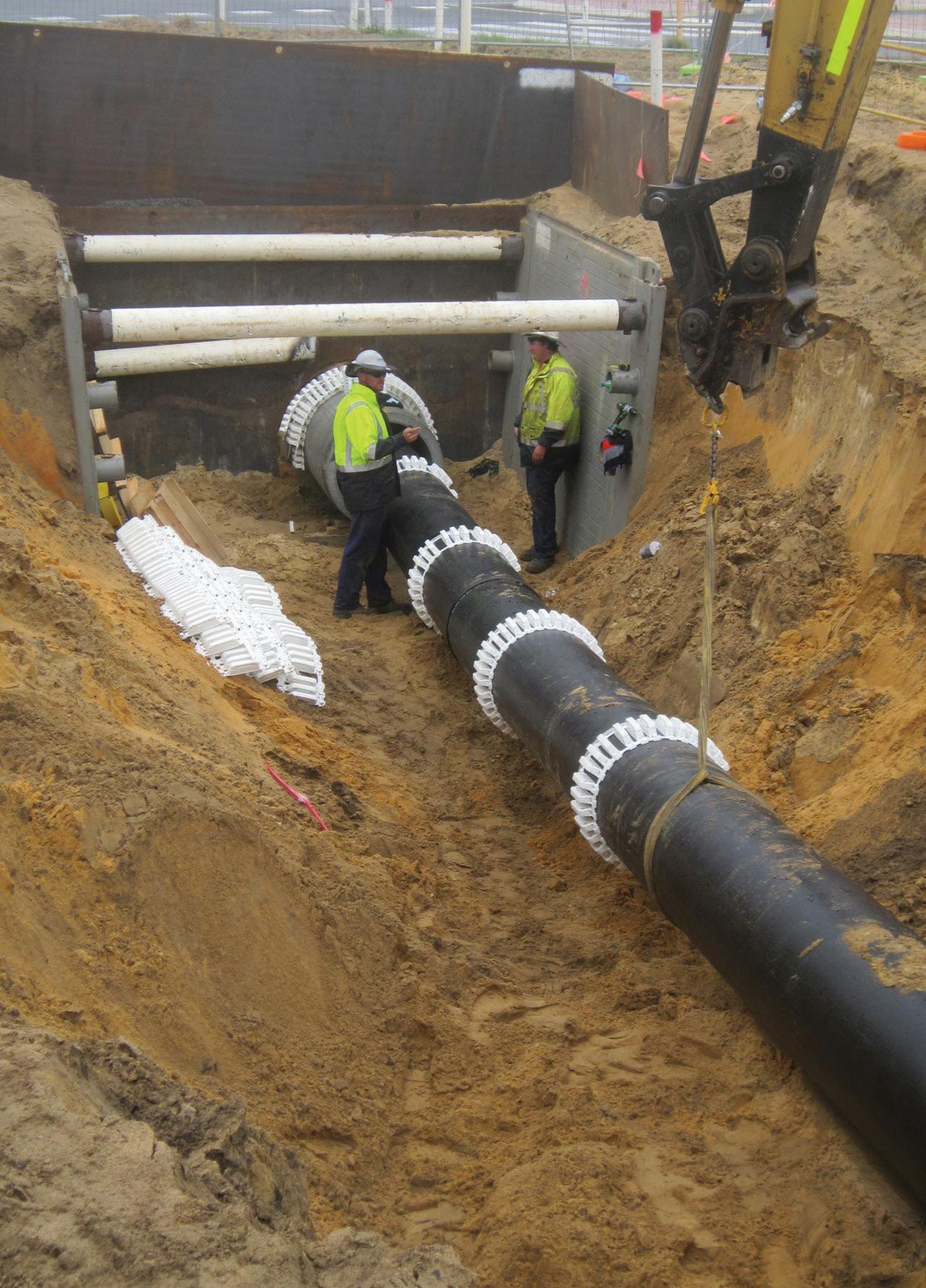
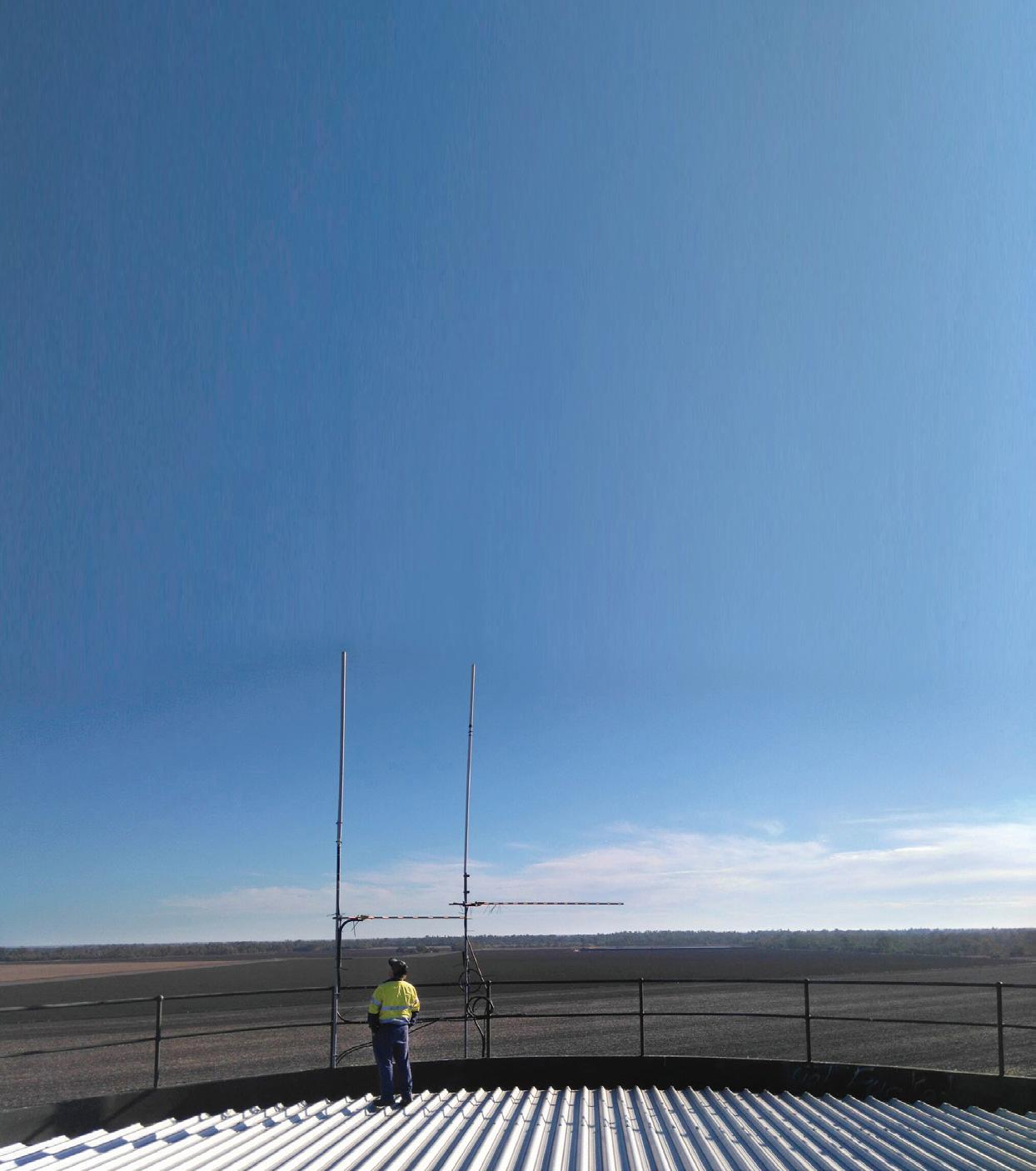
I o T AND SCADA 64 Utility Partner Solutions UTILITY • AUGUST 2019 WWW.UTILITYMAGAZINE.COM.AU

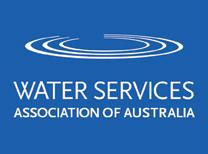
P (08) 9725 4678 sales@kwikzip.com Contact us today to order Also available for order through Reece Civil stores. Is your pipe spacer compliant? KWIK-ZIP’S HDX SERIES CASING SPACERS COMPLY WITH WSAA PRODUCT SPEC #324 – CASING SPACERS; REFER WSAA PRODUCT APPRAISAL REPORT #1523 www.kwikzip.com

THE IoT POWER
by Simon Vardy, Utilities Strategy Lead, Accenture Australia and New Zealand; Tony Histon, Transmission & Distribution Lead, Accenture Asia Pacific, Middle East & Africa
The convergence of information and operational technologies (IT/OT) enables cost savings, reliability improvements and new services across the utility sector. More efficient investments, greater customer choice and lower risk operations can result where digital technologies are applied to the operational sphere. However, these benefits are only possible where the enabling technologies are integrated, coordinated and secured to deliver better insights, automation and control.
At its most basic, IT/OT integration is simply about making information available where and when it can have the greatest impact. Data abounds in modern distribution systems and the Internet of Things (IoT) has seen data stream from network and customer equipment, as traditional supervisory control and data acquisition (SCADA) systems extend deeper into the network. As energy distribution networks become more complex, understanding how to use this data is essential to improve rather than confuse network operations.
The case for investing in new technology to translate data into actionable insights still faces opposition due to upfront cost, time commitments, scarcity of skills and cybersecurity concerns and the challenge of legacy system integration. These concerns can be addressed by quantifying the benefits, roadmap, architecture and risk mitigation strategies for IT/OT integration. By defining clear
paths toward integration, Australian utilities can realise unprecedented cost and operational efficiencies from outage management, Distributed Energy Generation (DEG) and asset management.
O PTIMISING OUTAGE MANAGEMENT
Unsurprisingly, unplanned outage management tops the list of concerns of utility providers. Australia’s vast landscape and remote geography add to the complexities of managing these issues and necessitates a technologically assisted understanding of power network performance, and the ability to accurately detect and respond to network failures.
IT/OT enabled smart metering can provide near realtime status of any unplanned outages and improve fault identification. This is especially important when outages occur along radial lines in remote areas.
UTILITY • AUGUST 2019 WWW.UTILITYMAGAZINE.COM.AU
I o T AND SCADA 66
POWER PLAY

More efficient unplanned outage management will reduce end-user downtime, and in turn increase consumer confidence and community support. Efficient outage management will also minimise the business impacts from lost productivity.
Supply can be restored efficiently using intelligent systems and devices that isolate faults and restore supply promptly, whilst assigning available crews based on skills and fault proximity.
INTEGRATED DISTRIBUTED GENERATION
Australians are increasingly taking energy into their own hands, with a newfound reliance on distribution generation (DG). According to Accenture’s 2017 Power Surge Ahead Report, 15 per cent of residential households own smallscale PV systems. Advanced operational systems are now necessary to support DG growth and avoid costly network reinforcement to support such forms of power generation.
IT/OT integration allows smart devices such as intelligent inverters to manage DG locally, minimising network augmentation costs. Smart inverters will create a more flexible grid by controlling DG output to maintain network stability and power quality in response to real-time changes in demand.
ADVANCED ASSET MANAGEMENT
Fundamentally, IoT will enable data to be more effectively incorporated into network planning, with the eventual goal of holistic network monitoring. Traditionally, asset management has been plagued with poor quality practical
data. Hypothetical analysis and trend-oriented modelling often inform decisions when estimating a grid’s health and performance. This guesswork is often ill-equipped to precisely estimate the outcome of asset operations under varying network conditions. IoT will provide real-time data, allowing up-to-the-minute monitoring of asset health and performance to facilitate decisions based upon predicted outcomes.
A NEW CYBERSECURITY FRONTIER FOR UTILITIES
Whilst IoT and SCADA promise benefits such as enhanced performance and cost reduction, with that comes the requirement to build cybersecurity into the implementation plan.
Accenture’s 2019 Cost of Cybercrime Study revealed cyberattacks to be on the rise for Australian organisations, which experienced an 18 per cent increase in the number of security breaches in 2018. However, the research also found that cyberattacks are now taking less time to resolve, demonstrating an improvement in security capabilities. It can be argued that the bigger risk for utility providers is to avoid innovation entirely, and to maintain organisational silos around infrastructure, technology and operations.
Australian utilities must now look toward IT/OT based technologies to provide sought-after bottom-line benefits and increased operational efficiency. Utility companies across the country have a profound opportunity to realise unprecedented benefits associated with these new technologies, thereby overhauling the provision of energy in Australia.
UTILITY • AUGUST 2019 WWW.UTILITYMAGAZINE.COM.AU
67 I o T AND SCADA
THE ‘NO HASSLE’ SERVICE APPROACH TO RETAIL ENERGY
While competition in the retail energy sector continues to evolve, energy retailers are faced with the challenge of restoring consumer confidence and trust in the market. Amy Childs, Managing Director of Momentum Energy, is the first person to put her hand up and acknowledge that the sector needs to change, and she is working hard to improve the way customers see their energy retailers.
Since taking on the Managing Director role in an acting capacity in May last year, and permanently from October, Amy Childs has been focused on bringing in a suite of changes that she envisions will both grow the customers that Momentum serves; but also help bring about a more transparent and open approach to energy retailing in Australia.
The first, and most obvious thing, you notice about the way Ms Childs is leading Momentum Energy is where she sits in her office. Ms Childs and her leadership team have done away with offices, and they’re firmly ensconced on the floor, with their staff.
It’s about being open, available, and most importantly, transparent – so it’s no surprise that these are the core values that Ms Childs is aiming to re-establish in the relationship between Momentum and its customers.
CHANGING THE FACE OF ENERGY
Ms Childs is passionate about the energy industry, and passionate about the change she wants to see in the industry.
Prior to taking on the Managing Director role, Ms Childs was Momentum’s General Manager for Sales and Marketing, bringing her total time in the business to three years. According to Ms Childs, in that time, she has interviewed 150 candidates for different roles across the business.
“We’ve really changed the profile of the people that work here in senior roles that are able to influence outcomes that are different,” she said.
Ms Childs strongly believes that we can’t keep replicating the same thing in the energy industry – if we do, nothing will change. While of course many staff in the business do have an energy background, she’s not afraid to recruit from outside the industry for key roles, largely in order to put a different lens on the way things are done at Momentum.
“I’ve taken a little bit of a risk, to be honest. I’ve got people that haven’t got energy background experience, and that makes you sometimes feel a bit vulnerable because you might miss something. But I think it’s more important to have people who are passionate about doing the right thing
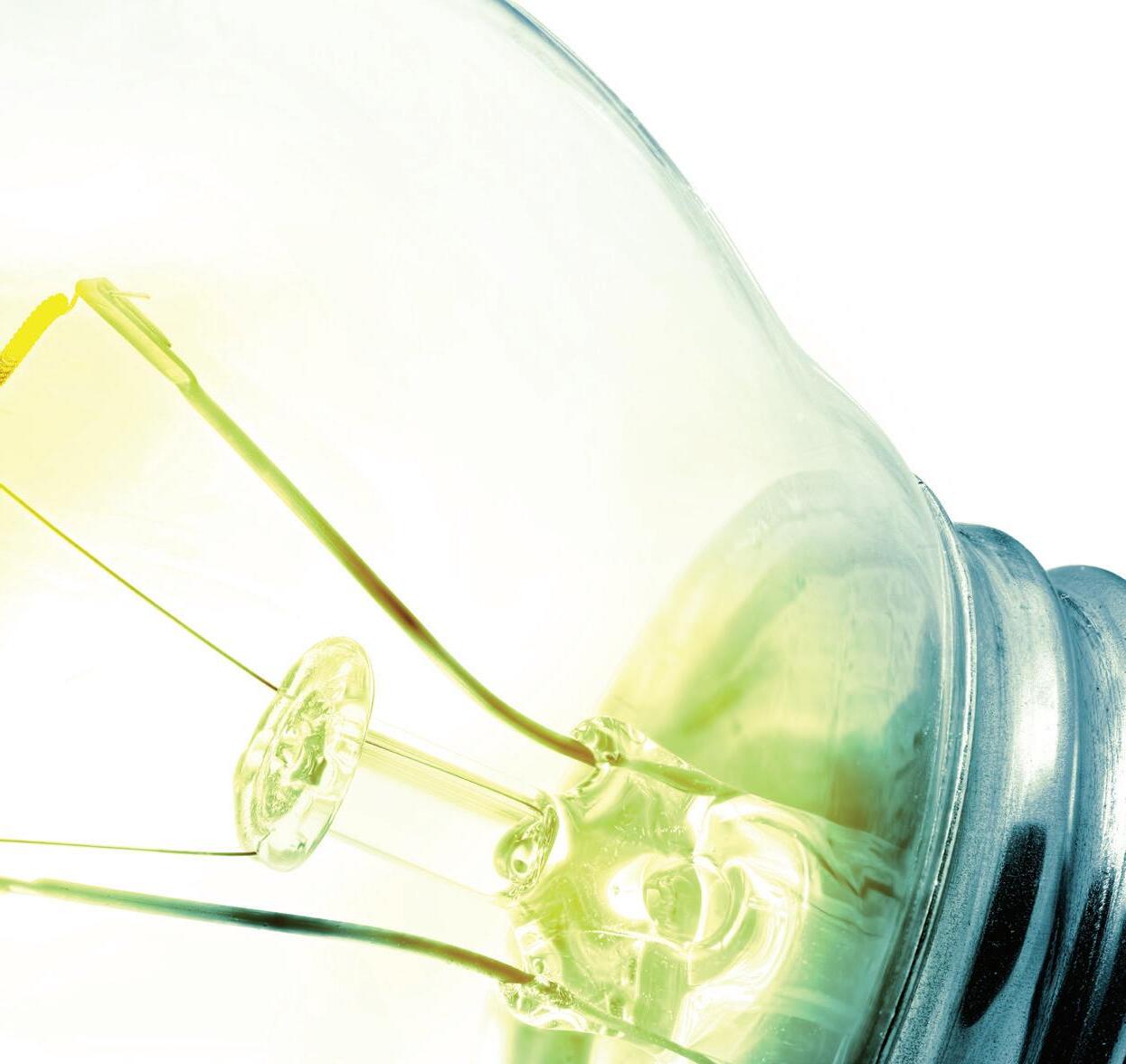
for the customer, and thinking about being part of the energy industry and changing the way it is, with the right mindset.
“I’m passionate about this. There’s so much opportunity to do well, and I am personally really focused on driving change in the energy industry.
“It’s going to take time, and I have to manage my energy and my expectations, but I believe we will get there.”
GROWING AN EMERGING ENERGY RETAILER
Ms Childs believes that being at the helm of a tier two retail business puts her in the perfect position to help bring about change in the energy industry – the size of the business offers a real competitive advantage when it comes to being agile and able to move swiftly to make changes that are required.
But of course there are challenges that come with being a tier two operator as well, and according to Ms Childs, probably chief among these is managing churn – when you’re running a business where you’ve already convinced customers to make the switch and move over to you, how do you actually convince them to stay?
“It’s really hard, and we have not cracked this one yet,” she admitted. “The challenging thing about being a tier two player is we’ve actually encouraged a churner to join us.
“So what we find is that there’s incumbent retailers who have obviously got a large base that can’t be churned, or they don’t know how to. Whereas for us, all of our customers have actually chosen us, so they know what to do. They know how to go and find a good deal. If we don’t live up to their expectations, they’re out of here – and frankly, so they should be.”
Churn is a topic that Ms Childs has clearly spent a lot of time thinking about, and she’s come to several conclusions on the subject – one of these being that when it comes to churn, it’s all on retailers. She believes it ultimately comes back to making the energy supply experience better for customers, and figuring out what can make the interaction between customer and retailer better, so “that you don’t end up leaving us for $30 or $50 a year”.
“It comes down to if you call us, you want to get served
68 RETAIL, BILLING AND CRM

AS AN INDUSTRY, WE NEED TO COME UP WITH A DIFFERENT APPROACH TO HOW WE SELL ENERGY.
quickly. You want to get your issue resolved, and then you just want to be left alone. You actually don’t want to think about your energy too much as a customer,” Ms Childs said.
As well as swift interactions with the business, Ms Childs also believes that providing customers with new services –such as educating them about how they can reduce energy consumption – are key.
“I spend a lot of time thinking about the things we can bring into market that are useful, that customers are willing to pay for? That’s going to help them reduce their energy bills? That’s ultimately what they want, and that will then endear trust which will make them stay longer, which will reduce churn, and then all of a sudden we’re in a place which is much better than we are today.”
Also important to Momentum is their Australian-based call centre, which according to Ms Childs, is something customers really respond to.
“Our customers are calling us because they’re confused, or something has gone wrong. So being able to speak to someone here in Australia, who can understand, empathise, be human in the interaction – I think that’s the magic, that’s where we’ve all got to strive to get to.”
The next step for Momentum’s call centre team is to achieve single call resolution, which means customers only need to call Momentum once to have their query or energy addressed.
“We’re working on that now. We’re trying to avoid the transfer between departments and people that often happens in call centres, and the waiting in queues that can happen.
“Now of course we might not be able to solve everything
in the first call, but I want to get to the point where one of our people is saying, ‘I’m Amy, I’ll follow this up for you, and I’ll get back to you on it.’ And you know who that person looking after you is. Because some things you can’t solve on the first call, it might involve having to call a network or another third party.
“I don’t want to declare victory on that yet, we’re not 100 per cent there, but we are very, very focused on having that done very, very soon.”
ESTABLISHING MOMENTUM IN A CROWDED MARKET
In a crowded market like energy retail, businesses like Momentum need to establish a clear voice and brand identity to cut through the noise in the marketplace.
Momentum’s repositioning of it’s business began in 2017 when it “killed the discount” – the company developed a campaign around positioning itself as the zero per cent discount retailer. But according to Ms Childs, it was a challenge to get everyone in the business on board with this one.
“People worried that customers wouldn’t pay their bills on time without a discount, but it just hasn’t been the case at all,” she said.
After a successful launch for the campaign, and positive reception in the marketplace, a number of other retailers followed Momentum with “no discount” offers. To continue its differentiation in the market, Momentum has just launched a “Less Hassle More Hustle” campaign, in line with the company’s belief that great, no hassle service is the key to retaining and attracting customers.
UTILITY • AUGUST 2019 WWW.UTILITYMAGAZINE.COM.AU
69 RETAIL, BILLING AND CRM
The

“Before we launched the Less Hassle More Hustle campaign, we conducted a survey that showed that 94 per cent of Australians find it a hassle dealing with their energy retailer. And while Australians are most concerned about affordable pricing, they also want to see simple rates and good customer service.
“Energy simply isn’t working the way it should be. Somewhere along the line, this industry lost its way and governments felt the need to step in on behalf of customers. But the level of intervention has been so high that it has distracted us from what should be our number one goal – the customer.
“It’s pointless being paralysed by all the change that’s happening in the industry. All we can do is focus on the immediate things we can do to create a better experience for our customers.
“Momentum acknowledges we can do better, particularly in areas such as call centre waiting times. We will use the findings of this survey – and other research – to get busy fixing things for our customers and making sure there is less hassle and more hustle when they’re dealing with us.
“In any marketing we do we have to cut through. We do not have big pots of money to spend. We need to be really careful how we invest the marketing dollar because ultimately that’s the cost of running the business, which you need to be very mindful of when you’re thinking about customers and their energy prices.”
THE NEXT CHALLENGE
Looking ahead, the focus for the future will move beyond acquiring and retaining customers, towards some exciting innovations that will change not just the business, but the energy market more broadly as well.
According to Ms Childs, the key upcoming challenge for the sector is working out how retailers play a role in the disruption that’s coming with behind the meter technology.
“We’re on that path now, and we’re working out what our role should be. There’s a lot of case studies out in the market of others who have gone before us, and tried and failed, which is useful – it gives us some intelligence on what worked and what didn’t.
“We’re using that information now to think about how do we play a role, what does that role look like? How do we help customers? That’s where we want to get to, and we’re working on how we put ourselves into a position where we are that trusted provider that is based out of Australia and can help people with what is a really complex and challenging problem.”
At the forefront of these new areas of focus for the business is an ongoing desire to serve as an advocate for energy customers.
“We really want to push for change and disruption, and doing the right thing for customers. It’s not hard, it’s a choice, and we really want to be leading the charge on that," Ms Childs said.
“Expect to see more of that from us – more products and propositions that are living up to what we’re trying to do in the market.”
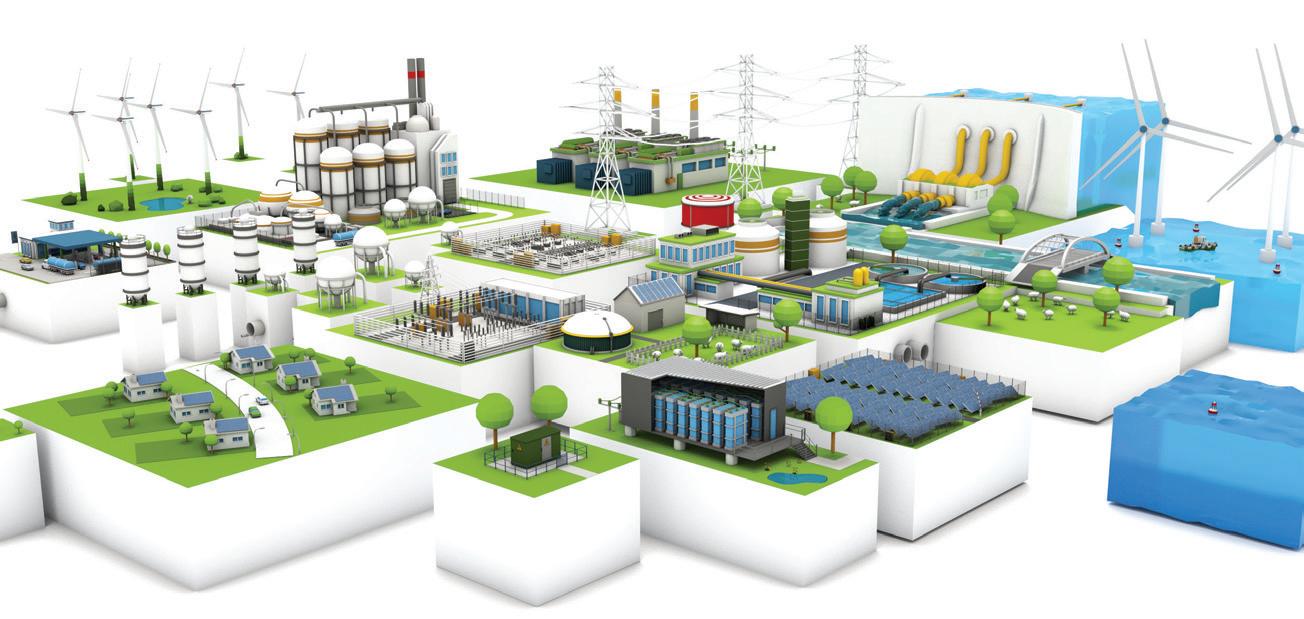
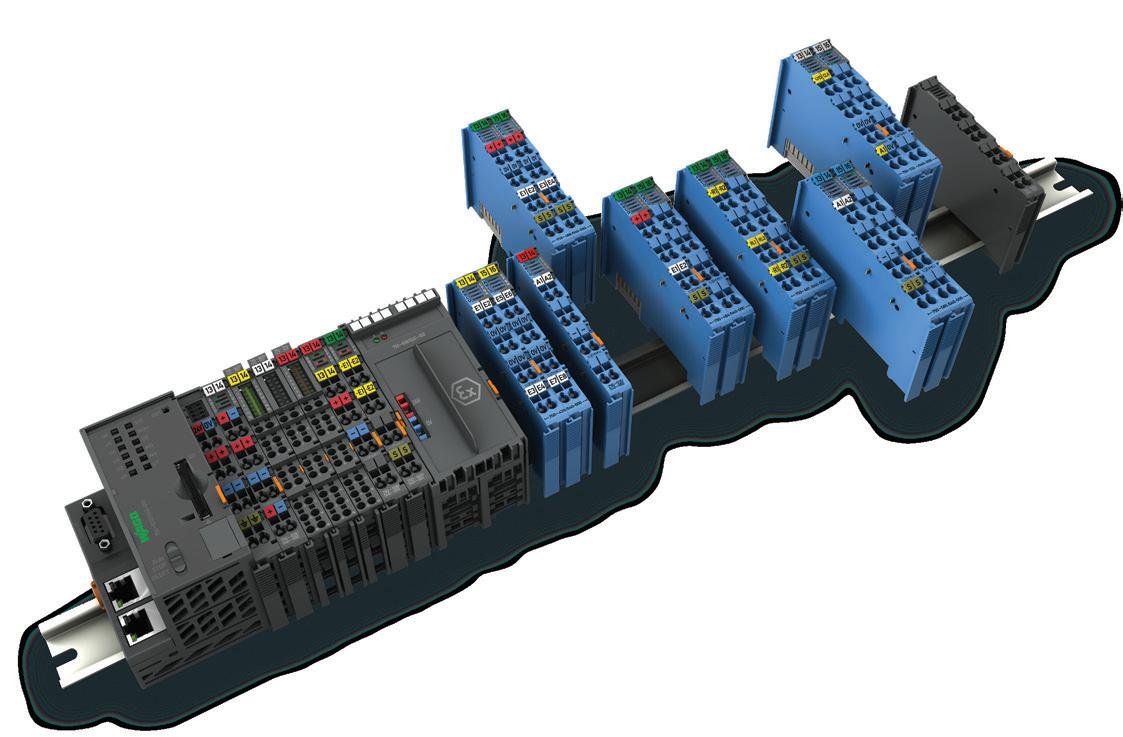
UTILITY • AUGUST 2019 WWW.UTILITYMAGAZINE.COM.AU
70 RETAIL, BILLING AND CRM
‘no hassle’ service approach to retail energy
AMY CHILDS.


CASE STUDY - WATER RESOURCE MANAGEMENT: INTELLIGENTLY NETWORKING MEASUREMENT VALUES
Using the right measurements – it always goes back to that when you are optimizing processes. It often sounds so easy, but it is usually anything but. Using the right measurements means: determining the data that are actually relevant for the process analysis, evaluating the data using suitable mathematical models, and bringing it into a targeted context. If this succeeds, then measures can be derived in the end that have the potential to sustainably increase the efficiency of the process.
In wastewater treatment, data is primarily recorded in the sanitary sewer network or at wastewater treatment plants. Using WAGO RTUs you can develop a solution that links data from geographically distant stations into a network in a comparatively easy way.
per BDEW and BSI Cloud connectivity: Connection to the cloud thanks to an MQTT software upgrade
Password-protected Web-based management prevents unauthorized users from changing system settings
DNP3
IEC61400 Smart Grid Automation WAGO RTU 750XTR: Flexible. Reliable. Powerful. IEC60870
WAGO is a registered trademark of WAGO Verwaltungsgesellschaft mbH. sales.anz@wago.com | (03) 8791 6300 | www.wago.com.au
WA drives SMART GRID SOLUTIONS

More than 52 per cent of Western Power’s overhead distribution network serves less than three per cent of its customers because much of the Western Power region is rural and sparsely populated. As challenging as this is, it also offers opportunity for more than half of Western Power’s overhead distribution network to evolve and provide customers with a better, technology-enabled solution.
Historically, Western Power has taken a watch and wait approach to network planning, only taking action when electricity demand reached a certain forecast level. However, the success of a modern, modular electricity network now depends on getting ahead of the curve. Identifying opportunities to apply new technologies, understanding how the network will function and developing capabilities to meet customer choices have become critical.
WESTERN POWER’S GRID TRANSFORMATION ENGINE
Western Power engaged with customers to gain key insights into their underlying energy needs. This included reliability, price, access to network, their desire to use new technologies and pricing sensitivities.
These insights and scenario-based planning methods were used to develop the Grid Transformation Engine (GTEng), which integrates new, deep customer
by Dr Monishka Narayan, Energy Networks Australia
Western Power is the transmission and distribution business which delivers power to Western Australians from a range of traditional and renewable energy sources. The Western Power network connects more than one million customers over an area larger than the United Kingdom, with power lines spanning from Kalbarri in the north, south to Albany and out to Kalgoorlie in the east.


UTILITY • AUGUST 2019 WWW.UTILITYMAGAZINE.COM.AU 72 SMART GRID
FIGURE 1: GRID TRANSFORMATION ENGINE
TABLE 1: GRID TRANSFORMATION METHODOLOGY
insights and external market signals with existing integrated asset planning methods.
The GTEng is a suite of software tools and applications that draws in a wide range of inputs to forecast the most probable shape and makeup of the electricity network, looking ahead 30 years. The conceptual diagram of GTEng
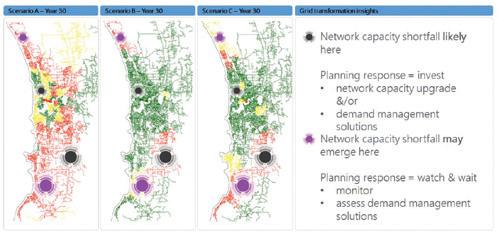
is shown in Figure 1. The objective of the GTEng is to understand the best technology solutions to serve the customers of the future, which also has to satisfy safety, reliability and affordability drivers.
The GTEng considers solar power, battery storage, microgrids, stand-alone power systems (SPS), virtual power plants and the existing poles and wires to identify energy solutions that are helping to drive a smarter grid. The GTEng methodology is shown in Table 1:
Energy profiles are developed for customer groups, utilising macro-economic data at a state level, geographic data and customer insights for each of the residential, commercial and industrial customer group. The GTEng provides insight into how the network can efficiently transition over the next ten, 20, 30 years and beyond.
Figure 2 shows the sample outcome for network utilisation based on the forecasted customer energy requirement and potential planning response for a 30-year scenario. It shows the locations where network capacity shortfall will likely occur or may emerge, and the appropriate planning response required.
The energy profiles provide greater clarity around network tariff trajectories that will influence the technical rules and regulatory or policy changes needed to unlock customer choice.
ADVANTAGES OVER THE STATUS QUO
Western Power’s assets have lives of 30-70 years, so ensuring those investments are viable across the entire asset life is critical in the face of a rapidly evolving energy future. A common misconception is that continuing to renew the existing network represents a safe course of action. In a stable business environment this may be true, however a different approach is needed when disruptive changes are considered.
The GTEng offers a prudent and efficient way to plan and build the network of the future. It helps to minimise the risk of investing in stranded assets by informing with greater
confidence the long-term decision making used to optimise the existing infrastructure. This ensures that the customer’s needs are fulfilled at the most efficient cost.
This level of analysis has not been done before and informs a range of strategic business decisions. Determining the shape of the future electricity grid is a key activity heavily influenced by the customer energy forecast. This in turn determines Western Power’s short and long-term network investment plans that impact their day-to-day network maintenance and renewal works.
LONG-TERM BENEFITS: INSPIRING FUTURE INNOVATION
The GTEng is enabling the strategic application of new types of technology that have shown merit in supplying
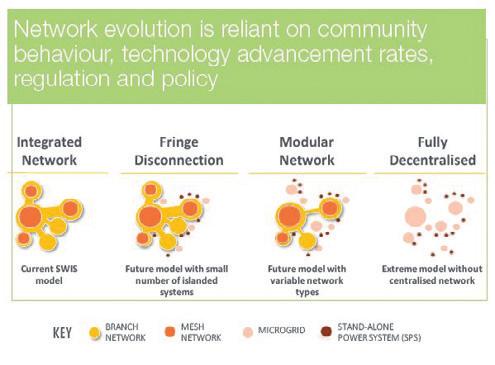
customers more efficiently.
For example, modelling showed an opportunity for more than 15,000 existing customers may be more cost effectively served by SPS across the Western Power grid. So, in an Australian-first demonstration project of its scope and size, Western Power is installing about 60 SPS. The project demonstrates that utilities can maintain a regulated service to a broad base of customers but through a different type of infrastructure. Western Power’s SPS project will validate the belief that these systems can be deployed and managed as a scalable technology as shown in Figure 3.
Reshaping the grid with new technologies will help improve reliability, particularly for areas previously serviced by long feeders, and improve the cost of delivery, which is beneficial to all users of a regulated entity. SPS also reduce costs for Western Power customers, while improving reliability for remote customers. For customers, a new grid will enable choice on how to generate and consume electricity. Hence, Western Power's innovative GTEng is helping reshape the grid into what could potentially be the grid of the future.
SMART GRID
FIGURE 2: ENERGY FORECASTING – 30-YEAR SCENARIO (SAMPLE OUTCOME)
FIGURE 3: RESHAPING THE NETWORK
UTILITY • AUGUST 2019 WWW.UTILITYMAGAZINE.COM.AU 73
YOUR GO-TO SUPPLIER FOR ALL THINGS PIPELINE
With a combined 74 years’ experience in servicing and supporting the pipeline and construction industry –Pipeline Specialty Supply Service (PSSS) have the knowledge and expertise to assist you with your next project.
Adedicated supplier of specialised machinery, tooling and consumables, Director John Wilton leads a small, committed team, who are proud to be the ‘go-to’ supplier for many of their clients.
A proud Australian business with
a global network of suppliers. PSSS are the Australian agents for Pigs Unlimited, Hy-Ram, HTL, CDI, Mirage Machines and Sawyer Manufacturing – to whom we can reach out to for advice and input, thereby ensuring we can always offer you the right solution. We offer our clients the option of either hiring equipment to see them through the short term or purchasing outright.
The steady growth of PSSS over the past seven years has seen the company grow from strength to strength. PSSS now has dedicated Business Development Managers looking after clients in each state and territory of Australia, with its head office and warehouse based in Loganholme, Queensland.

The image above shows pipe cones on a recent local project – these cones are a light and easy to handle alternative to traditional skids and sawdust bags. Pipe cones are termite resistant, load-rated, stackable, easy to store, easy to transport and manufactured to suit the Australian climate.










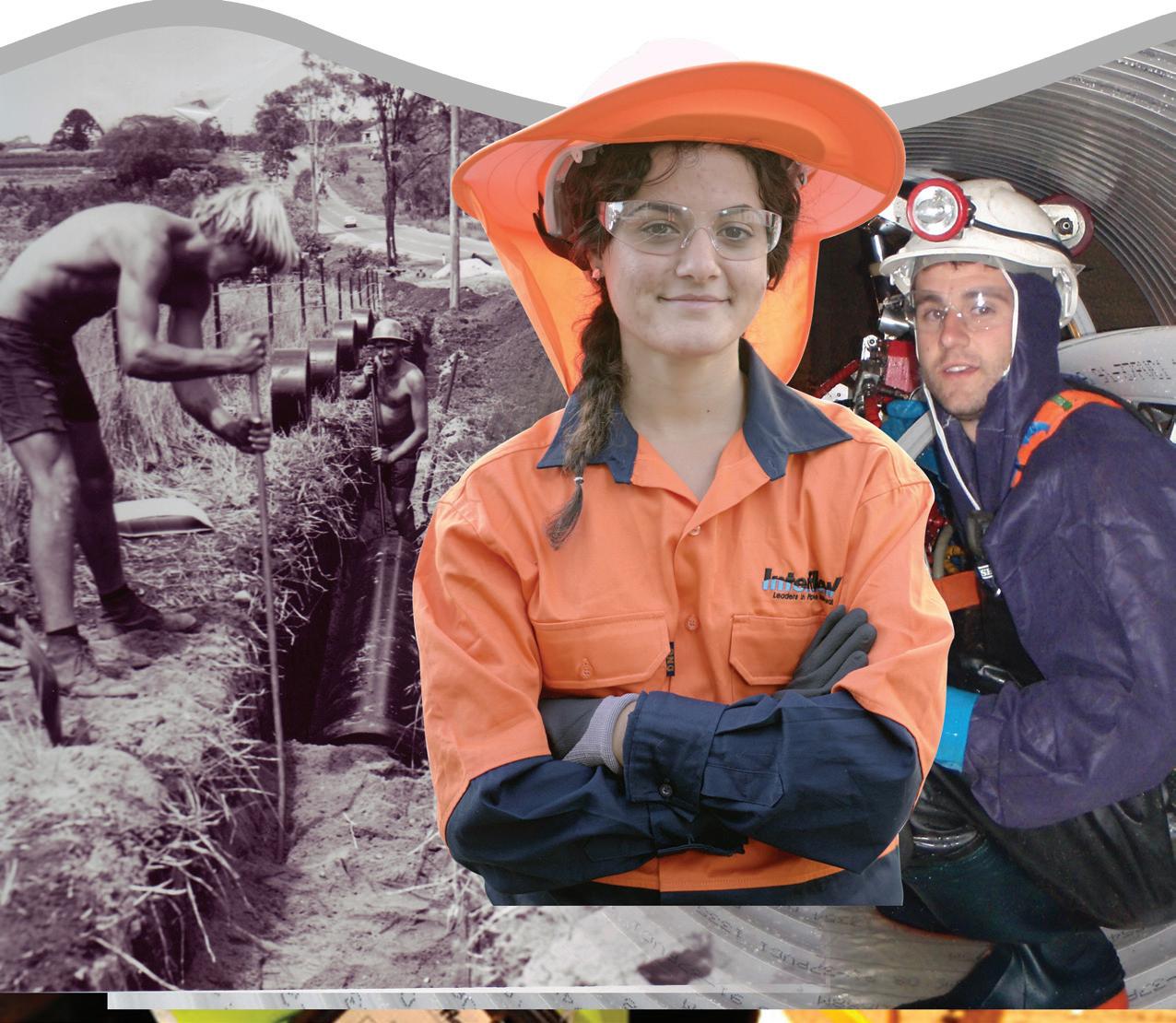
UTILITY • AUGUST 2019 WWW.UTILITYMAGAZINE.COM.AU Utility Partner Solutions 74 GAS PIPELINES
YOUR ‘GO-TO’ SUPPLIER FOR ALL THINGS PIPELINE PROUD OF OUR ‘GO-TO’ STATUS AND ‘CAN DO’ ATTITUDE 3/56-58 Burchill St, Loganholme QLD 4129 | Email: sales@psssa.com.au | Ph: 1300 794 096 www.psssa.com.au NEW CATALOGUE

Locations throughout Australia & New Zealand www.interflow.com.au mail@interflow.com.au Water Infrastructure Solutions Wastewater Infrastructure Solutions Road & Rail Culverts Network Maintenance Stormwater Infrastructure Solutions Condition Assessment Trenchless Installation Your trusted infrastructure renewals delivery partner since 1936 Solutions for the whole network
The ACT’s ‘RENEWABLE AND RELIABLE’ HYDROGEN FUTURE
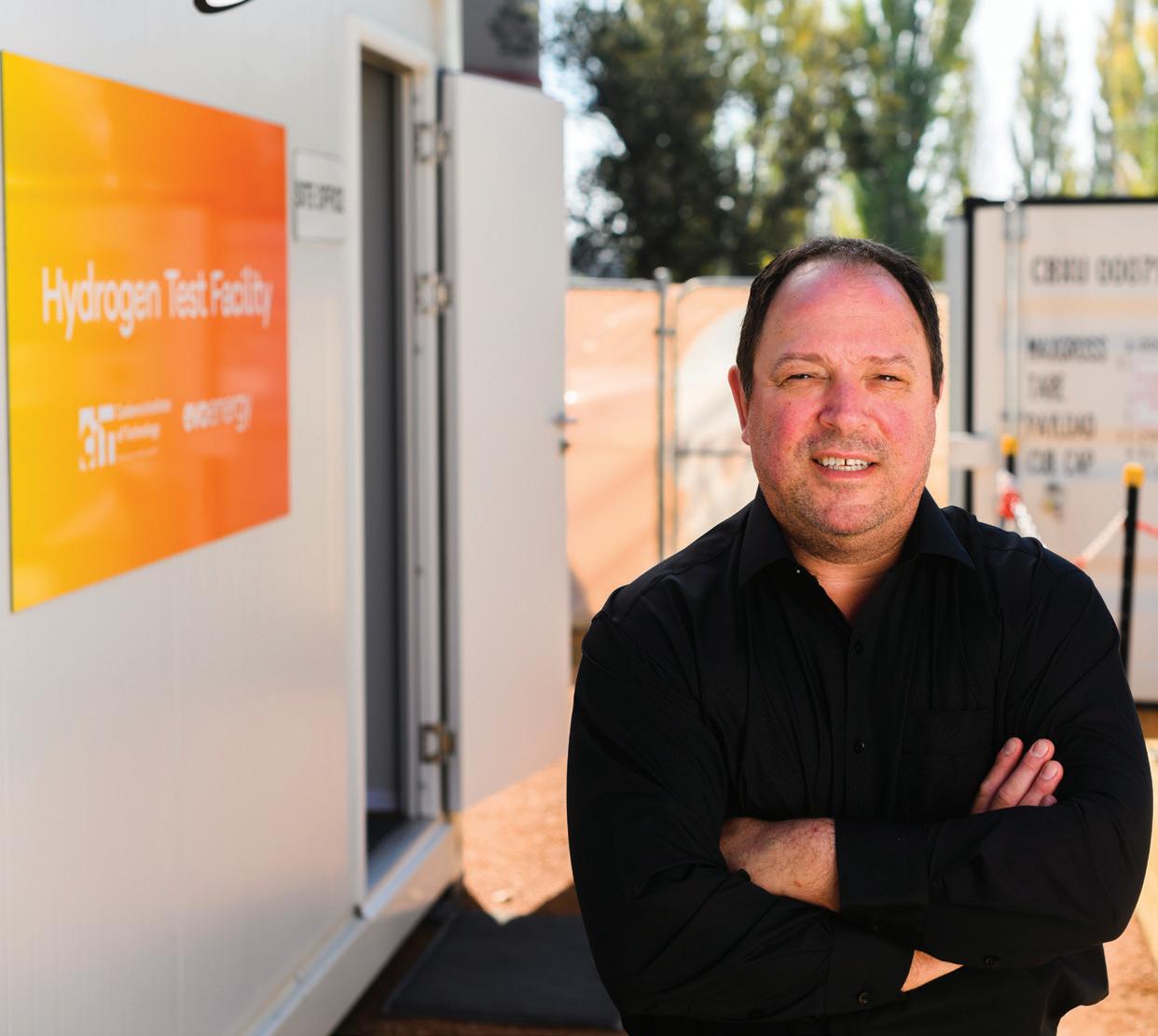
The Australian Capital Territory’s existing gas network is expected to transition to 100 per cent renewable gas, thanks to a new collaboration between the Canberra Institute of Technology (CIT) and ACT gas distributor Evoenergy. We met with Evoenergy Gas Manager, Bruce Hansen, who shed some light on the build of a first-of-its-kind hydrogen test facility and its anticipated impact on gas supply both in the ACT and across Australia.
UTILITY • AUGUST 2019 WWW.UTILITYMAGAZINE.COM.AU 76 GAS PIPELINES BRUCE HANSEN, GAS MANAGER AT EVOENERGY.
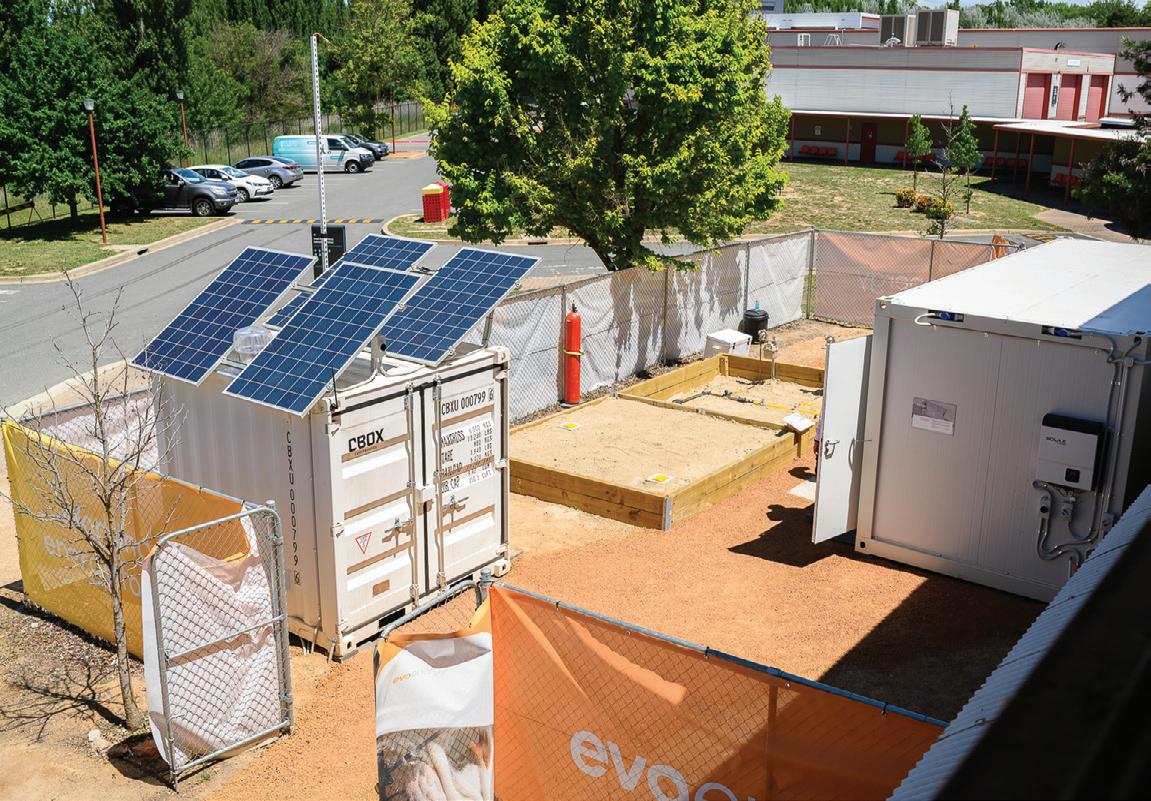
The new test facility, located at CIT’s Fyshwick campus, was launched in December 2018, and is the product of more than 12 months of research and planning by Evoenergy and the CIT.
While several gas distribution companies are undertaking hydrogenrelated projects, the difference with this project is that it is testing 100 per cent hydrogen on existing materials, equipment and work practices, in preparation for application to the existing gas distribution network.
According to Evoenergy Gas Manager, Bruce Hansen, the test facility will enable Evoenergy to gain a clearer understanding of how hydrogen will impact existing gas infrastructure, and marks an exciting new chapter for the Australian gas industry. It will also move Evoenergy closer to rolling out a viable renewable gas source on a large scale.
“The hydrogen test facility has been an exciting thing to be involved in, because even after 30 years I’ve not seen change in the gas industry like what this represents for the future,” Mr Hansen said.
Such is the buzz surrounding the project that two Evoenergy senior engineers have come out of retirement to work on the project.
THE RISE OF HYDROGEN
Evoenergy, along with the industry as a whole, has been working towards solutions that solve the energy trilemma – providing energy that is affordable, reliable and clean – and has the added incentive that the ACT Government is working towards a target of zero-net greenhouse gas emissions by 2045.
Mr Hansen said there were a number of factors to consider when exploring the role hydrogen would play in achieving that target.
“The first question to answer is: will gas play any sort of role in the future energy mix? If the answer to that is yes, and we want to have a zero greenhouse gas future, then hydrogen is going to be fundamental to that, because you generate hydrogen from renewable electricity,” Mr Hansen said.
“Whether hydrogen will be something that is made at service stations and pumped in cars, or whether it’s something that’s manufactured in large plants next to gas pipelines, using megawatts of power, I can’t predict. But it’s the starting point for the industry.”
As well as offering a clean energy source, another benefit of hydrogen is that it can be stored in existing gas pipelines until it is required, essentially turning the network into a giant battery for storing energy.
GAS PIPELINES 77 UTILITY • AUGUST 2019 WWW.UTILITYMAGAZINE.COM.AU
THE EVOENERGY HYDROGEN TEST SITE.

EXPLORING THE IMPACT ON THE CANBERRA NETWORK
The new facility is testing three things:
1. The effect of 100 per cent hydrogen application on existing Australian network components, construction and maintenance practices
2. Hydrogen as a broader energy storage source to support coupling the electricity network with the gas network
3. Appliances (e.g. testing hydrogen and mixed gases in existing appliances such as gas continuous hot water systems)
The key focus of the test facility will be to examine the impact of hydrogen in the gas network, and in particular, at what percentage hydrogen can be introduced into the current network with no impact at all.
Once the optimum level has been determined, hydrogen can be introduced into the existing network straight away. From here, the vision for the ACT Government, and Evoenergy, is to have 100 percent renewable gas in the network by 2045.
The process from moving from a level where there’s no impact on the network – which is expected to be somewhere in the vicinity of ten to 20 per cent – to 100 per cent hydrogen will be a step-change process.
And while it will most likely require some financial support from government, the key for Evoenergy will be ensuring the process of transition is one that is affordable for customers. Crucially, the fact that the existing network will remain in place will make a significant contribution to keeping costs down.
The test facility has been operational since December 2018 and is already providing data about how hydrogen affects existing infrastructure.
“The Canberra network that distributes gas to most customers is a plastic network, and it uses two types of plastic pipe – polyethylene and nylon,” Mr Hansen said.
“We’ve got a small network with both materials, and those types of fittings and joints have been tested with hydrogen to determine whether the existing materials in the network can handle a 100 per cent hydrogen mix.
“We’re looking at the network side of the meter, the customer side of the meter and the meter itself. That’s quite a different approach to the problem.”
Looking inside the facility, it doesn’t have a huge footprint – measuring approximately 10m by 16m, the tests don’t require a huge amount of space. What is required is a safe location to mitigate any hazards that come with testing fuels. For this reason, the facility is located at the CIT.
“We’ve partnered with CIT because of the educational value they have identified in the project. And they have a lot of control over the burner configuration on their appliances, so we can test those appliances on different blends of hydrogen and methane,” Mr Hansen said.
GENERATING ELECTRICITY
Once a safe level for hydrogen in the network is established, the next step for the test facility will be to investigate the process of actually producing hydrogen.
Currently hydrogen is produced through electrolysis, a process of splitting water into hydrogen and oxygen. Some of the crucial next questions that need to be answered include:
• How much water will be required to provide enough hydrogen gas to power the entire ACT gas network?
• What sort of water do we need to use – can it be normal mains water, or does it need to go through a purification process before it can be used to create hydrogen?
While these questions will be investigated over the next 12 months, scientists have estimated that to meet the gas needs of the ACT for a year, around 1.5 per cent of the water stored in Corin Dam would be required.
GAS PIPELINES UTILITY • AUGUST 2019 WWW.UTILITYMAGAZINE.COM.AU 78
MR HANSEN CHECKS OUT SOME OF THE EQUIPMENT ON SITE.
So while the volume of water required is not unattainable, the shift to hydrogen does raise questions about where this water will come from, and how we prioritise its use.
PARTNERING WITH INDUSTRY
One of the most exciting things about hydrogen for Evoenergy is the range of different potential applications for the fuel, from storage to hydrogenpowered public transport.
According to Mr Hansen, Evoenergy is joining with a range of industry partners to explore the potential of hydrogen.
“Because we can’t test everything, we are hoping that if we share our results, then others who are doing testing will also share theirs too,” he said.
“The industry is really trying to get as much done in this field as quickly as it can, because time is of the essence
with how we transition to a low-carbon future, so if we all work collaboratively then we’ll get there a lot quicker.”
Mr Hansen said he has been heartened by the interest from academia and government in the project, and he believes that demonstrating the new direction of the industry is as important as the testing itself.
“We’ve had a number of universities interested to understand what we’ve done, and what we’ve learned, because they’re doing their own research,” he said.
“Of course government has been interested in the project too; we’ve had ACT Government ministers, Federal Government and others tour the facility.
“Canberra is an ideal place to conduct a project like this, because there’s so many interested people here.”
Now that the test facility has been launched, Evoenergy is keen to organise tours of the facility with industry, fellow utilities and related businesses. This will provide a platform to share information and develop partnerships.
NEXT STEPS FOR HYDROGEN
Both in Australia and overseas, the desire to reduce carbon emissions has seen hydrogen emerge as a viable green alternative to natural gas.
The development of a hydrogen industry in Australia also represents a real opportunity to create new growth areas in the economy.
Proving the viability of hydrogen as a clean gas energy source will have a profound impact on customers and the broader energy industry.



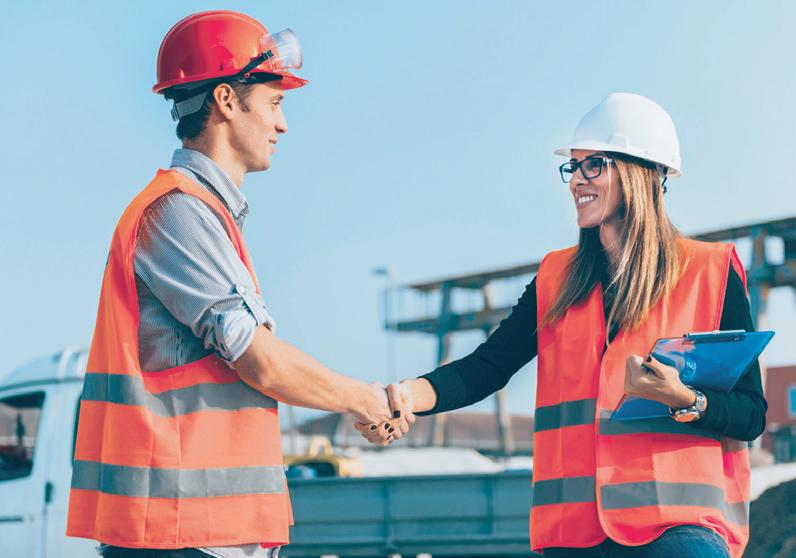




We all know an organisation is only as good as the people who work in it – You!
We’re PNP, and as people who’ve worked in the utilities sector, we’re known for putting the ‘You’ in utilities.
As a national contractor and staff placement and payroll management agency, we’re committed to servicing and supporting utility organisations across electricity, gas, pipelines, telecommunications, and water infrastructure.
For great people who live and work in utilities, whether you’ve found them or need us to find them for you, we’re your key to personnel.
GAS PIPELINES
The ACT’s ‘renewable and reliable’ hydrogen future
THE KEY
utilities@peternorman.com.au www.peternorman.com.au
• Pete Norman Personnel • 25 YEARS
1300
(1300 843 539)
79 UTILITY • AUGUST 2019 WWW.UTILITYMAGAZINE.COM.AU
GAIN MAXIMUM PRODUCTIVITY WITH SPECIALISED EQUIPMENT AND ATTACHMENTS
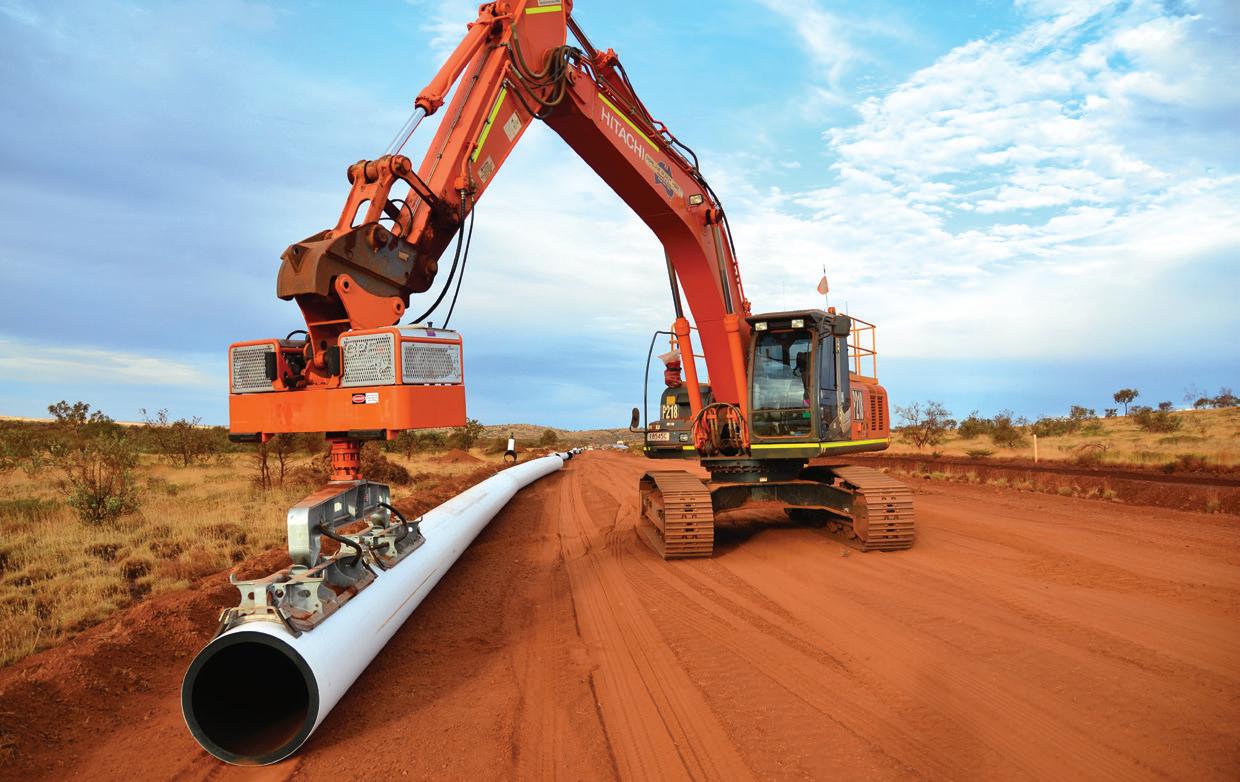
Pipeline Plant Hire has a large fleet of new or near new excavators, wheel loaders, graders, dozers, articulated dump trucks, articulated water carts, backhoes and other equipment needed to construct a pipeline, but the business is as much about the attachments fitted to the machines as it is about the machines themselves.
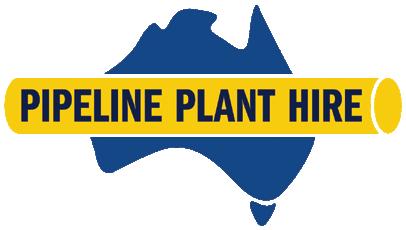
One of the company’s most productive attachments is its large range of VacLift equipment designed and built in Australia. These attachments can either be integrated units that maximise lifting capacity or custom-built to suit specific project tasks.
The excavator operator controls and monitors the VacLift from the cab, meaning no workers are needed on the ground, which minimises the risk of injury and dramatically reduces the cycle time for each pipe movement from minutes to seconds. Options include the ability to lay and verify mechanically jointed pipes, removing personnel from the trench.
Pipeline Plant Hire has Australia’s largest range of vacuum lifting equipment, from small units used to feed poly pipe to fusion welding machines lifting a few hundred kilograms and large units capable of lifting large diameter, high-pressure pipe weighing over 12 tonnes.
The majority of the recent large pipeline projects, incorporating hundreds of thousands of pipe handling movements, have used Pipeline Plant Hire’s Australian designed and manufactured vacuum lifting equipment to achieve world-leading performance in pipe handling.
Pipeline Plant Hire has incorporated a number of significant improvements to vacuum lifting equipment, improving lifting capacity, visibility, 360-degree horizontal rotation, operational noise reduction, and in-cab control and monitoring.
Other specialised attachments offered by Pipeline Plant Hire include:
• Rockbreaker hammers
• Hydraulic screening buckets
• Augers, vertical and horizontal drive
• Hydraulic vibrating plate compactors
• Angle tilt excavator grader blades
• Side rippers
Pipeline Plant Hire prides itself on its speed of delivering a complete solution to solve project problems. The company works with its customers to improve safety and productivity in the workplace, wherever that may be.
For more information, visit www.pipelineplanthire.com.au
Utility Partner Solutions GAS PIPELINES UTILITY • AUGUST 2019 WWW.UTILITYMAGAZINE.COM.AU 80
DARE TO BE DIFFERENT



Abberfield are different

Our Water Filling Stations are different & better to any alternative.
Abberfield provide personalised support at no charge:
n Pre-sale site demonstrations.
n Goods delivered by Abberfield staff.
n On-site installation advice. n Post installation commissioning. n Warranty extensions from 1 to 3 years subject to minimal conditions. n Whole of life options by the Abberfield Group Trust. n Leading edge technology. n Credit card payment with tanker & public separate pricing. n Account card option.
n Drought relief water distribution to the general public or specific customers.
n Ready access to water but restricted volumes per week. n Dispenses potable water or raw water.
There is a seismic shift in water management & leaving off-grid water distribution to tanker drivers is no longer the only option.
Water payment was normally pre-loaded storage card. Then came monthly account cards PLUS a credit card option.
Councils were quick to realise that with credit card use by tanker drivers, councils had no administrative involvement, the distribution process happened & the funds went straight to the council’s bank.
With the drought the general public demand for water escalated, often by users unable to pay tanker drivers delivery charges & often only needing small amounts of water. Credit card payment allowed self-collection with the next evolution being a price differential for tanker drivers & the general public, all by credit card & all automatically processed.
Then in many areas water reserves fell dramatically & the Abberfield systems were used to both restrict the volumes of water taken & then allow free or discounted pricing via a drought relief card.
Now that drinking water is being conserved the Water Filling Stations are also being used on raw or bore water, for stock or other purposes.
The evolution process continues but ignoring off-grid users is unsustainable.
Water should be: n Available to anyone, anywhere, any time. n Equitably prepaid. n Support tanker drivers & the public. n A profit centre for councils. n Controlled distribution of this precious resource.
Request further information or a site visit contact:
ABBERFIELD GROUP
THE
+61 - (0)2 9939 2844 www.abberfield.com.au

UTILITY • AUGUST 2019 WWW.UTILITYMAGAZINE.COM.AU TRENCHLESS TECHNOLOGY 82
THE TUNNEL BORER IS LOWERED INTO PLACE.
MICROTUNNELLING ENABLES COST-EFFECTIVE SEWER UPGRADE
When Queensland Urban Utilities proactively made the decision to upgrade the sewerage network in Brisbane’s south eastern suburbs to meet the future demands of the growing city, it faced a choice.
It could replace and increase the capacity of the existing trunk mains, which follow Bulimba Creek, one of the many creeks which crawl through the city’s undulating suburbs off the Brisbane River.
Alternatively, tunnelling a more direct route through the hilly terrain could significantly reduce the overall footprint and cost of the project. This approach would be challenging, but also had the potential to significantly reduce construction impacts on the community.
Following this latter path has proven not to be a case of ‘tunnel vision’ for Queensland Urban Utilities.
By harnessing modern microtunnelling techniques, and avoiding the meandering, flood-prone creek line, the project team has reduced the length of trunk mains required for the upgrade by up to 2km. This shaved an estimated $15 million off the project’s total cost, and reduced the likelihood of future sewage bypasses into the creek system.
HARNESSING TRENCHLESS TECHNOLOGY
At $55 million, and requiring 4.25km of gravity-fed trunk mains, the Bulimba Creek Sewer Upgrade is one of South East Queensland’s largest sewer upgrade projects.
“Advancements in tunnelling technique and technology made this project viable,” Queensland Urban Utilities Major Projects Manager, Will Campbell, said.
“We take a lot into consideration when designing upgrades for our sewer network.
“We look at the integrity of the existing network and plan for future demand while also considering what impact upgrades will have on our customers.
“The feasibility study we conducted back in 2011 identified several potential alignment options to meet the project’s goals, including following the existing infrastructure along the creek line.
“The most direct and cost-effective alignment was under an existing major suburban road (Scrub Road), however that would also require tunnelling through Belmont Hills Bushland Reserve.
“Given the depth of the proposed gravity sewer was, at times, more than 50m deep, only modern trenchless methods proved feasible.”
Significantly, use of the Herrenknecht AVN1500TB tunnel borer enabled greater drive lengths in excess of 850m.

UTILITY • AUGUST 2019 WWW.UTILITYMAGAZINE.COM.AU TRENCHLESS TECHNOLOGY 83
PROJECT MANAGER, WILL CAMPBELL, LEADS A COMMUNITY ENGAGEMENT SESSION ON THE BULIMBA CREEK SEWER UPGRADE PROJECT.
Microtunnelling enables cost-effective sewer upgrade
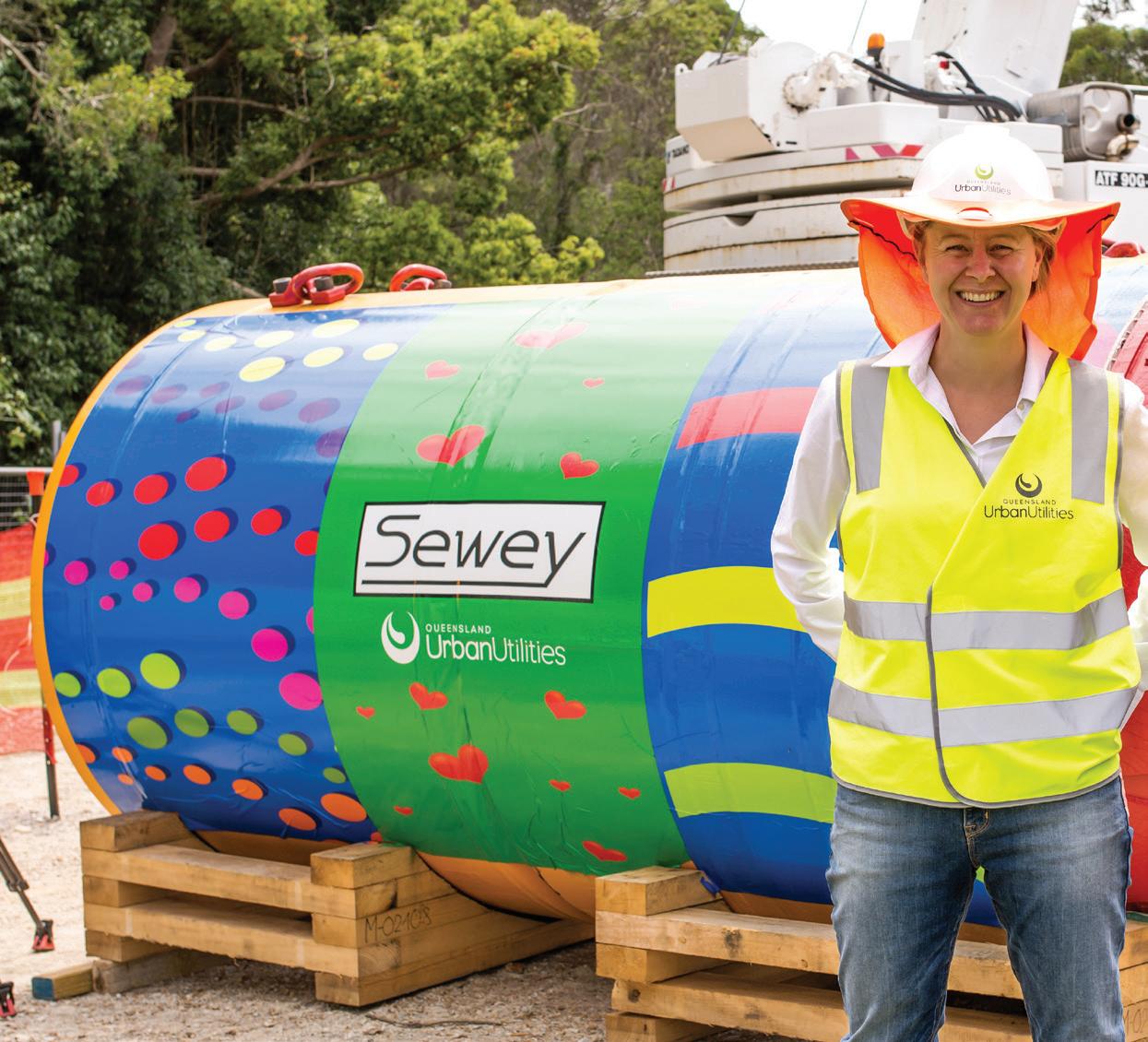
PROJECT MANAGER (RIGHT), WILL CAMPBELL, INSPECTS SEWEY PRIOR TO THE COMMENCEMENT OF WORKS.
“Previous projects where we’ve installed 900mm trunk mains have required drive shafts every 100-140m,” Mr Campbell said.
“By harnessing the latest technology, the project team has been able to drive lengths of over 850m, including sections with curved alignments to locate the tunnel shafts in locations which minimised the impact on customers and traffic users.”
Similar microtunnelling techniques were successfully used by Queensland Urban Utilities for a recently completed service tunnel that runs 560m beneath the Brisbane River from Kenmore to Jindalee in the city’s western suburbs.
“We have also been able to increase the capacity of the new pipes installed as part of the Bulimba Creek Sewer Upgrade, which, at 1,680mm in sections, are the second largest pipes in Brisbane’s sewer network,” Mr Campbell said.
“We also believe some of the now-completed sections are the longest pipe-jacks using GRP pipe materials anywhere in Australia.”
KEEPING COMMUNITY IMPACT TO A MINIMUM
The reduction in the number of shafts led to the second significant benefit of the Bulimba Creek Sewer Upgrade project: minimising the overall disruption to the community.
“By utilising modern trenchless techniques, we were able to minimise the number of drive shafts which also reduced the number of residents directly affected by the construction works,” Mr Campbell said.
“Several of the shafts were designed to allow the tunnel borer to launch in both directions, which reduced the number of sites where long-term construction works were undertaken to only three sites.
“Reverting to more open-cut techniques would have required us to dig up more suburban streets affecting all customers along the alignment.
“We were able to mitigate the impacts to mainly residential customers near the drive shafts by erecting noiselimiting panels which enclosed vital equipment enabling the drilling to continue below-ground 24/6 basis reducing the overall project construction time.
UTILITY • AUGUST 2019 WWW.UTILITYMAGAZINE.COM.AU TRENCHLESS TECHNOLOGY 84
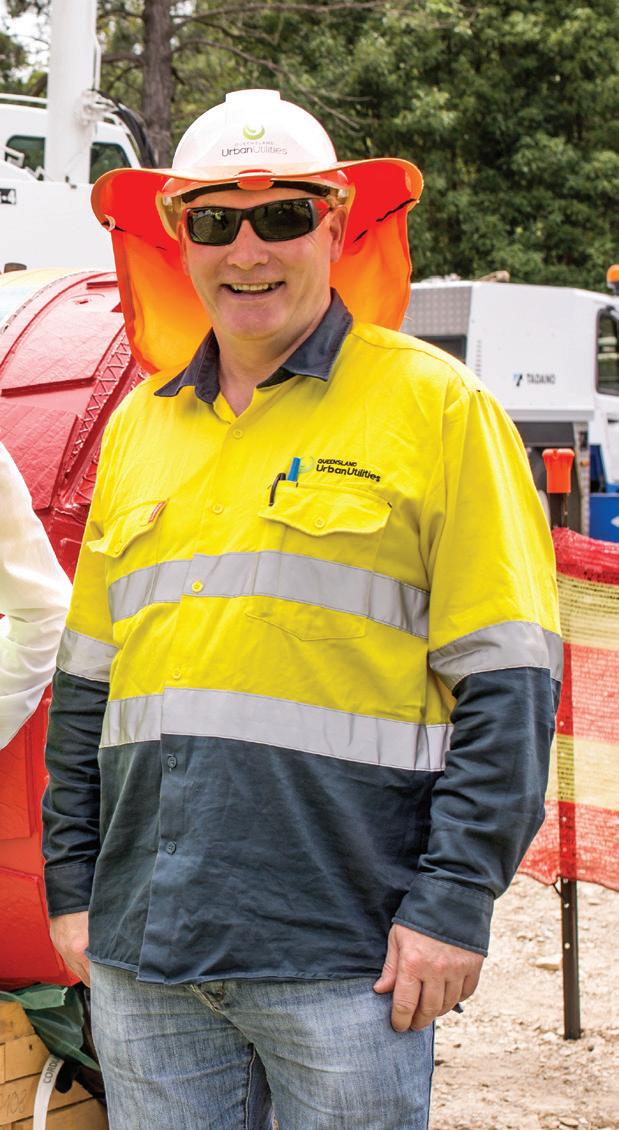


“The behind-the-scenes tours which were offered to residents were particularly useful in helping people understand exactly what was happening below and around them and the sheer size of the infrastructure works being delivered. We also involved the local rugby league club in the project by facilitating a competition to name and design the tunnel borer.
“When you’re dealing with upgrades of this scale to vital infrastructure, you can never completely eliminate adverse impacts on the community.
“However, by following a ‘no surprises’ approach to community engagement, and by harnessing trenchless techniques, we’ve kept community impacts to a minimum compared to projects of similar scope and significance.”
The 4.25km section of gravity-fed pipeline installed as part of the Bulimba Creek Sewer Upgrade runs between Wecker Road, Mansfield and Cadogan Street, Carindale.
The trunk mains and maintenance points have been installed and are currently undergoing capacity testing. The new pipes are expected to be fully operational in the second half of 2019.







ABOUT US
Edge Underground is a precision microtunnelling contractor that operates in Australia and the USA. With a focus on innovative technology and expertise, Edge Underground designs and enhances the performance of trenchless equipment.
UTILITY • AUGUST 2019
OUR SERVICES
• Microtunnelling
• Pipe Jacking
• Thrust Boring
Boring
BORING SPECIALISTS
0458 000 009
stuart@edgeunderground.co
www.edgeunderground.co
• Laser Tunnel
GUIDED
(
*
8
HI-VAC HIGH-CFM VACS AND JETTERS ALREADY MAKING AN IMPACT DOWN UNDER
Vermeer Equipment Holdings, the recently appointed Australian distributor of Hi-Vac Corporation’s range of high-CFM hydro-excavators and industrial combination vac/jetters, has completed fit up of the first units to arrive in the country—and with significant orders already placed, the market likes what they see.
Anthony O’Grady, Vermeer’s National Sales Manager for Hi-Vac products, said that on-site demonstrations of the X-Vac X10 vacuum excavator will commence in August, though significant orders of the Aquatech B10 jetter means that demonstrations of this unit won’t be possible until next year.
“The first units of Hi-Vac high-CFM industrial combination vac/jetters and vacuum excavators to arrive in-country have been fitted up to Volvo FM540 8x4 trucks at Vermeer’s Brisbane dealership. These trucks were chosen because of their high power output, required to support the Hi-Vac’s impressive blower output, as well as their quality and reputation in this application,” Mr O’Grady said.
“Initial discussions with local vac truck and jetter operators here has seen really positive feedback, and they are eagerly anticipating the arrival of the units to see how the on-paper specs translate to performance on the job.

TRENCHLESS TECHNOLOGY UTILITY • AUGUST 2019 WWW.UTILITYMAGAZINE.COM.AU 86 Utility Partner Solutions
“These units feature a level of performance not before seen in Australia, in particular the CFM rating of the blowers. Both the X-Vac and Aquatech units feature a no-load blower rating of 5750 CFM, but what is more significant is that the Roots WHISPAIR positive displacement blower is able to maintain an unprecedented 2000CFM at 27HG of vacuum. This is over 30 per cent higher CFM under load than this market has seen previously.”
Again on the performance side, the Aquatech B10 delivers 330L/min at 2500PSI through a 243m 1-inch Cobra jetter hose featuring auto lever wind and digital distance counter, and a 1135LPM water pump off system for fast decanting.
Mr O’Grady said that in addition to outright performance, the Hi-Vac units offer other features that fleet operators are sure to find compelling.
X-Vac X10
Blower
Water pump
Spoil tank
“Hi-Vac spoil tanks feature floor jets, tank flush and a tank vibrator for fast, easy emptying, and are covered by a lifetime warranty. Their 8-inch booms feature hydraulic in/ out, up/down and 360 degree rotation, which coupled with a 16-function wireless full remote control system ensure operator efficiency on site.”
If you would like to learn more about Hi-Vac hydro-excavators and jetters, you can contact Anthony at sales@hi-vac.com.au or on 0498 911 112, or visit hi-vac.com.au to enquire online.
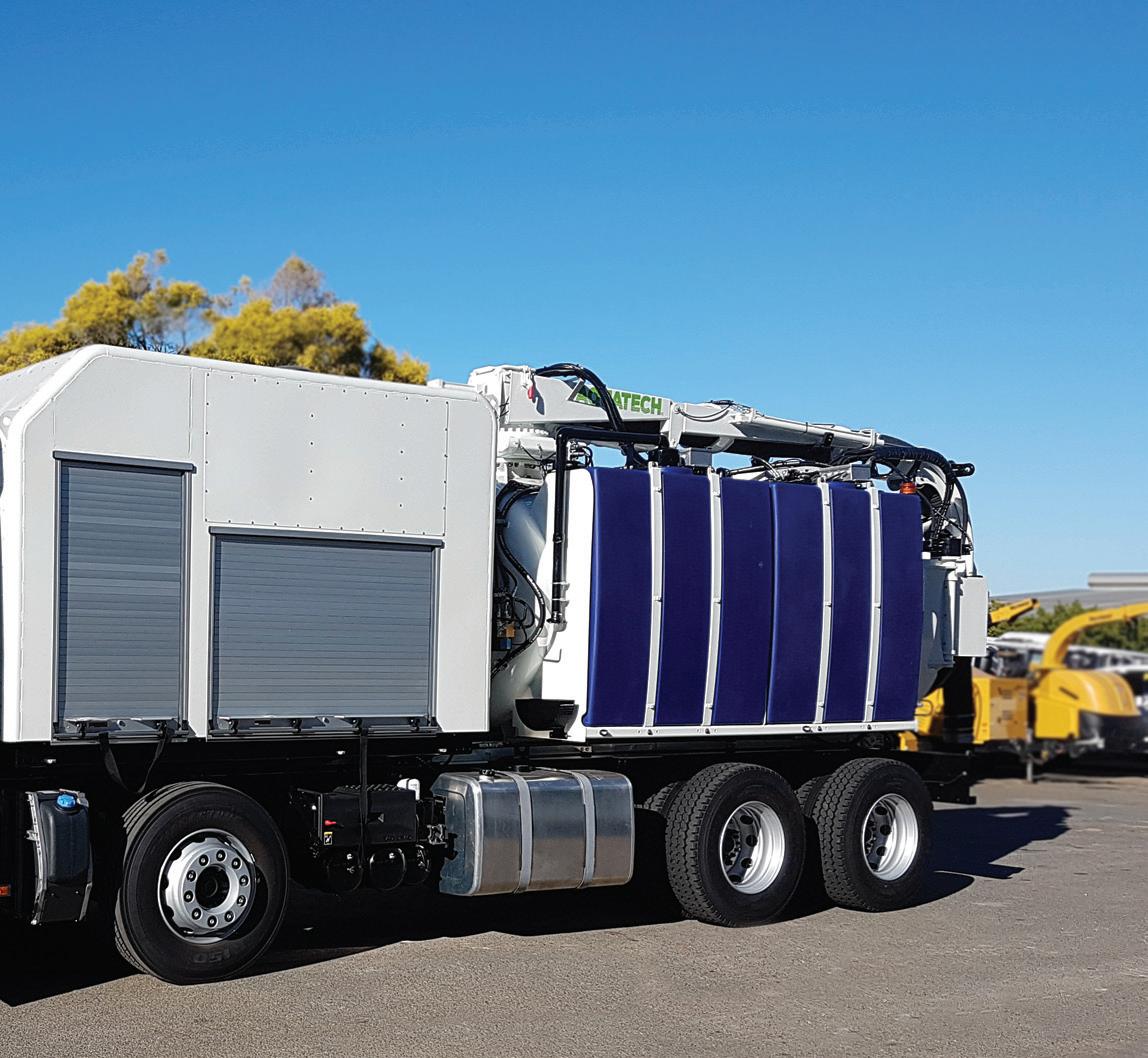
Aquatech B10
827DVJ Roots WHISPAIR. 5750 CFM (2000CFM@27inHG)
26L/min @ 3000 PSI
330L/min @ 2500 PSI
7300L A36 corrosion and abrasion-resistant with lifetime warranty
3800L poly carbonate fresh water tanks (saddle, 2175L per side)
UTILITY • AUGUST 2019 WWW.UTILITYMAGAZINE.COM.AU 87 TRENCHLESS TECHNOLOGY Utility Partner Solutions
Water tanks
inch,
360 degree rotation SPECIFICATIONS AT A GLANCE
Boom 8
hydraulic in/out, up/down and
OVERCOMING CHALLENGES IN THE TODD ROAD BRANCH SEWER
Rimic Civil were engaged by Dalton Consulting Engineers, under MAB Corporation to construct the Todd Road Branch Sewer, providing an outfall for a commercial development beneath the West Gate Bridge.

The project presented a number of challenges associated with construction in ground water of approximately 10m deep and the stability of structures in Coode Island Silt and Port Melbourne Sands. The site, adjacent to the eastern abutment of the West Gate Bridge, is a former landfill site, which presents the additional challenge of working with potential contaminants and debris.

Stakeholder negotiations involved the Port of Melbourne Authority, the West Gate Bridge Authority and VicRoads to facilitate construction of the $3 million project in the vicinity of Melbourne’s busiest transport hub.
The construction consisted of sinking caissons to isolate the construction area from the groundwater and potential contaminants to establish clear working space to launch the ISEKI TCZ MTBM and jack the pipes between caissons, up to 110m apart.
The sewer was then connected to the Hobsons Bay Main Sewer, after a timber tunnel was constructed to complete the final section, allowing the break in to the 100-year-old brick manhole, connecting the new sewer with the 2.6 diameter brick sewer at a depth of over 20m deep, which continues to run right across the bay.

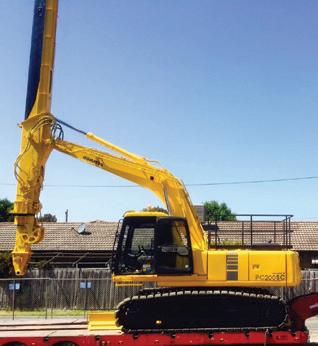
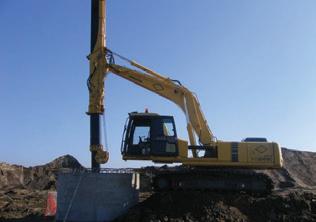
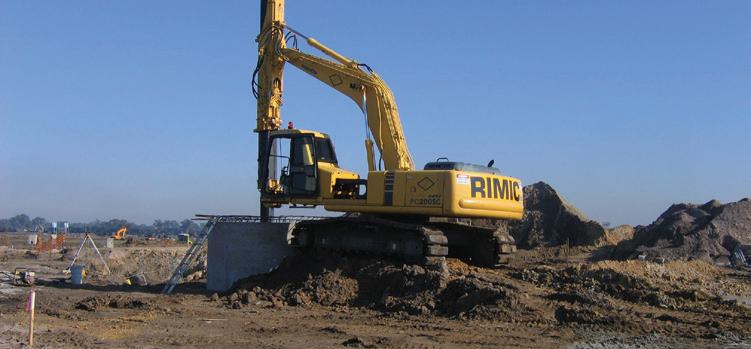

UTILITY • AUGUST 2019 WWW.UTILITYMAGAZINE.COM.AU 88 TRENCHLESS TECHNOLOGY Utility Partner Solutions
steve.rimiccivil@gmail.com 0400 225 619 (03) 9775 1541 MICROTUNNELING AND DEEP SHAFT SPECIALISTS www.rimiccivil.com.au
FOR HIRE

WWW.IPLEX.COM.AU 1 IPLEX MILLENNIUM® PE100 HSCR TAKES CARE OF THE STRESS IN TRENCHLESS PIPELINES CIVIL 13 10 86 • EMAIL DESIGN@IPLEXPIPELINES.COM.AU • WWW.IPLEX.COM.AU
INDUSTRY LEADER DRAWS ON FORTY YEARS OF EXPERIENCE

When it’s complete, the Donnybrook Road Branch Sewer will stretch 3km along Donnybrook Road, within a future services corridor, and provide sewerage services to more than 8,000 homes.
The location of the pipeline, which passes through privately and developerowned properties, presented a number of challenges, including the presence of existing services and structures, depth, as well as cultural heritage and natural values such as native vegetation.
To overcome these issues, the construction of the pipeline relied on open cut excavation and trenchless construction methods. In order to complete the project within the January 2018 to late 2019 timeframe, Yarra Valley Water broke the project into three segments and engaged specialist contractors for each section.
CALLING IN THE EXPERTS
Pezzimenti Trenchless and MFJ Constructions were awarded the contract to construct one of the sections, which stretches 1,705m
The Donnybrook Road Branch Sewer will cater to an ever-expanding urban area in Melbourne’s north. The location of the pipeline has presented a number of challenges for construction, however, Pezzimenti Trenchless has brought more than 40 years of experience and expertise in trenchless technology to the project.
and requires 1,060m of trenchless construction, 645m of open cut construction and the installation of eight maintenance holes.
Pezzimenti Trenchless first made a name for itself in pipeline construction in 1957 when G. Pezzimenti and Sons was contracted to the Melbourne Metropolitan Board of Works. Since then, the company has become the industry leaders in the installation of new sewer, water, storm water and conduits utilising their specially and locally built equipment.
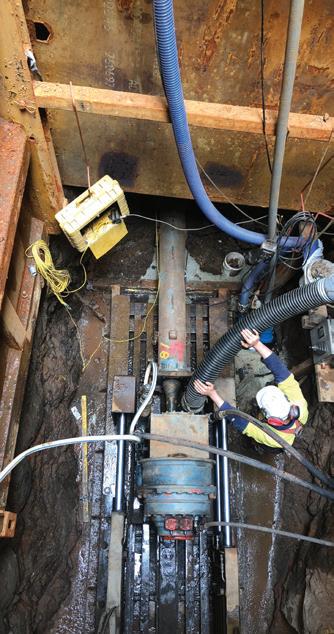
GETTING DOWN TO WORK
As part of the project, the company employed its Pezzimenti Lazer-Bore System, which uses vacuum extraction to remove spoil and rock cuttings and can achieve a range of bore diameters. This system ensured a small operational footprint and overcame challenges caused by other works in the area; in some cases the construction zone was reduced to 20-30m. It also ensured that bores were accurately installed.
Pezzimenti Trenchless also overcame the high-strength basalt that it encountered, by using specialistbuilt rock cutters that were fitted to the microtunnelling head; and the requirement to build deep shafts of up to 15.5m, which it achieved by using an 87-tonne excavator and a smaller one-tonne excavator that was fitted with a hydraulic hammer and lowered into the shaft. Groundwater was also an issue, but this was overcome by drilling upstream and using some of the industry’s most powerful vacuums.
KEEPING IT LOCAL
Pezzimenti Trenchless’s extensive local workshop facility provided back-up support to the project and ensured that repairs and modifications to the equipment could be completed without any delays to the project. This has contributed to the project being on target to be completed in September 2019.
For more information about Pezzimenti Trenchless, visit www.pezztrenchless.com.au
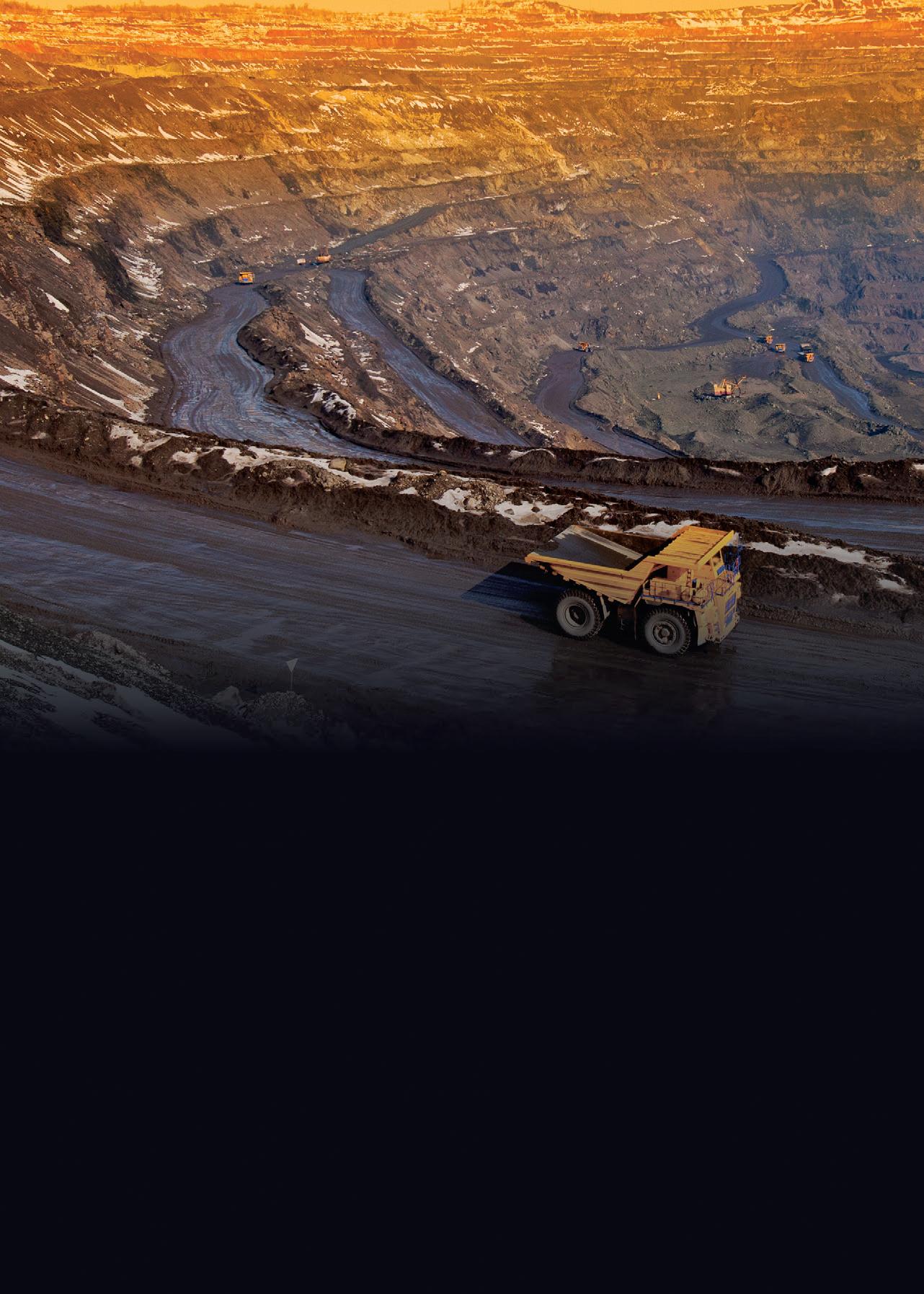
UTILITY • AUGUST 2019 WWW.UTILITYMAGAZINE.COM.AU
TRENCHLESS TECHNOLOGY 90 Utility Partner Solutions
WHERE GLOBAL MINING LEADERS CONNECT WITH TECHNOLOGY, FINANCE AND THE FUTURE.

The International Mining and Resources Conference (IMARC) is where global mining leaders connect with technology, finance and the future. Now in its 6th year, it has become Australia’s largest mining event bringing together over 7000 decision makers, mining leaders, policy makers, investors, commodity buyers, technical experts, innovators and educators from over 100 countries for four days of learning, deal-making and unparalleled networking.
BHP, Rio Tinto, Anglo American, Mitsui, Newcrest and OceanaGold are just some of the companies you will hear from at the conference. With a programme covering the entire mining supply chain, from exploration, to investment, production to optimisation through to new technologies and global opportunities. Alongside brand-new conferences on energy, the environment, workforce engagement as well as mine and plant optimisation.
Furthermore, the free exhibition will feature over 260 leading companies across the 10,500m2 expo floor showcasing the latest mining projects, equipment and innovations the industry has on offer. Dyno Nobel, Sandvik, K92 Mining, Komatsu, Yokogawa, HATCH and Downer Group are just some of the companies you can expect to meet
VISIT IMARCMELBOURNE.COM TO CLAIM YOUR FREE EXPO PASS, OR RECEIVE A FURTHER 10% OFF CURRENT RATES WITH THE DISCOUNT CODE MA1200MM
6TH ANNUAL INTERNATIONAL MINING AND RESOURCES CONFERENCE + EXPO
Workshops: 28 October 2019
Conference & Exhibition: 29 - 31 October 2019
Melbourne Convention & Exhibition Centre
Founding Partners
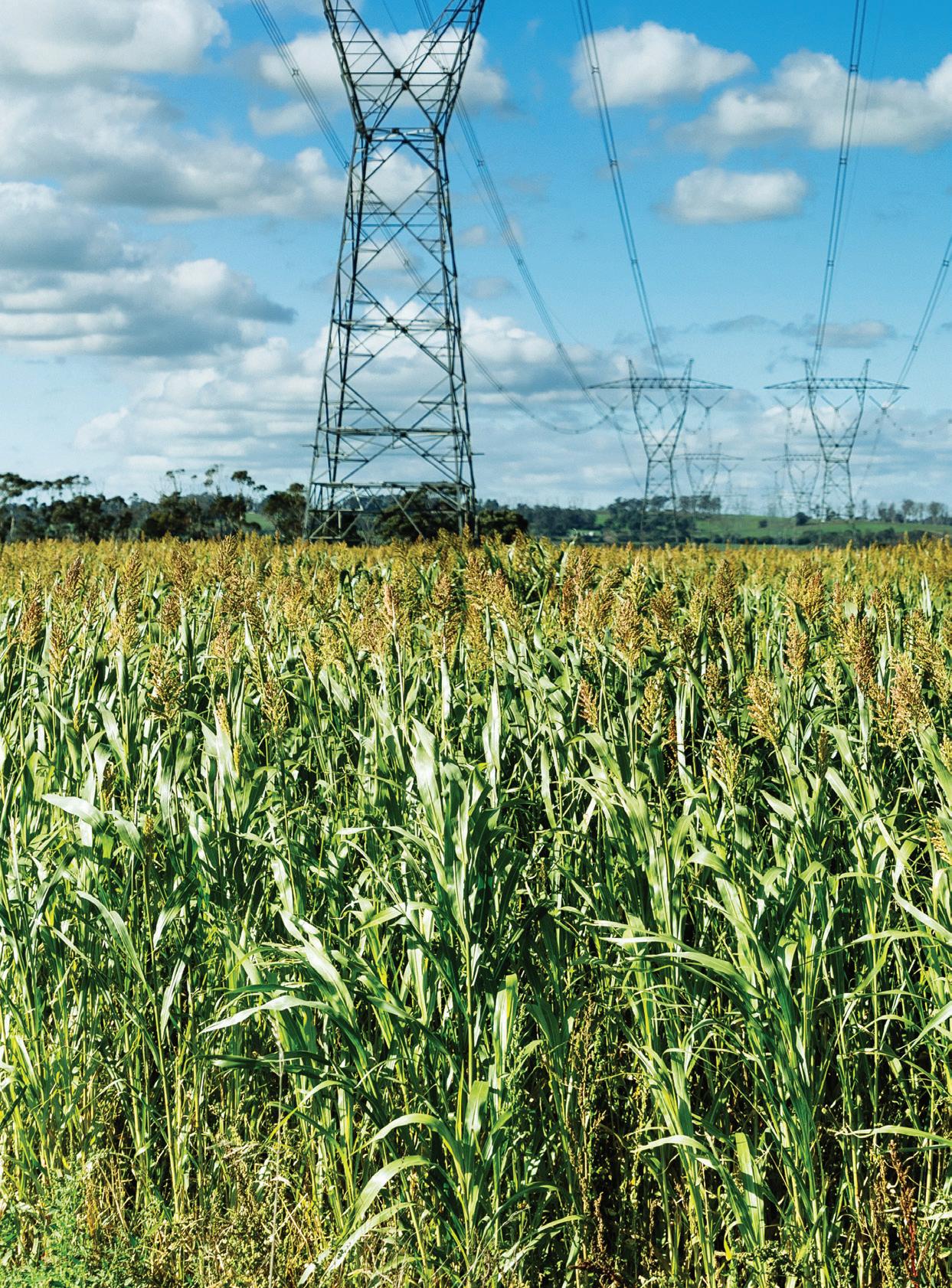
BIOSOLIDS TRIAL TO BOOST SOIL PRODUCTIVITY
South East Water, which delivers water, sewerage and recycled water services to 1.87 million people in Melbourne’s south east, is investigating new ways to use biosolids – a by-product of the wastewater treatment process. Farmers can use this nutrient-rich fertiliser to maintain soils and stimulate plant growth, which increases their productivity, but there are restrictions on how biosolids can be used that limit their effectiveness.
WASTE MANAGEMENT 92
UTILITY • AUGUST 2019 WWW.UTILITYMAGAZINE.COM.AU

Supported by the Cooperative Research Centre for High Performance Soils (Soil CRC) and partnering with the University of Newcastle, South East Water is trialling soil injection of biosolids in liquid form to improve soil structure, fertility and function at its Longwarry Water Recycling Plant.
If successful, the project has the potential to influence Environment Protection Authority (EPA) guidelines on liquid injection of T3 grade biosolids in Victoria, which is not a biosolids management option sanctioned by EPA Victoria.
“We hope to prove that using biosolids in liquid form (known as T2 or T3 treatment grade) is appropriate for use on agricultural crops. This would permit time and cost efficiencies through bypassing conventional drying and stockpiling processes,” South East Water’s Senior Research and Planning Scientist, Dr Aravind Surapaneni, said.
“By undertaking this trial we can assess the impact of using T3 grade liquid biosolids on crops, as well as identifying any potential risks of using this by-product.”
The trial started in October 2018 and is scheduled to be completed by October 2020.
The specific objectives of the trial include:
• Identifying and quantifying potential on and off-site environmental risks and impacts as well as potential contaminant/emission sources, pathways and end points (fate of known contaminants/nutrients)
THE
• Generating scientific knowledge and understanding on biophysical and chemical soil properties and processes associated with liquid biosolids injection
• Assessing the agronomic benefits of soil injection of liquid biosolids
The long-term objective is to develop guidance/policy documents for future regulations and compliance in relation to soil injection of liquid amendment, in association with EPA Victoria and other regulatory agencies across Australia.
In the Victorian context, biosolids are classified by treatment (pathogen reduction/stabilisation grades T1, T2 and T3) and contaminant grades (C1 and C2). The treatment grades are based on the process used to stabilise and dry the sludge, and seek to protect human health and the environment from a microbiological contamination perspective.
The current method for producing biosolids that meet treatment grade T1 – the only type of biosolids deemed safe for unrestricted use as fertiliser on farms – involves a lengthy treatment process, which includes storing the product for a minimum of three years before it’s used.
The agronomic benefits associated with soil injection of liquid biosolids and liquid food wastes are that it delivers nutrients, organic matter and moisture directly into the soil surrounding the plant root, aiding in plant growth and health.
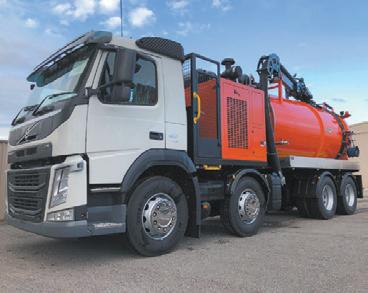
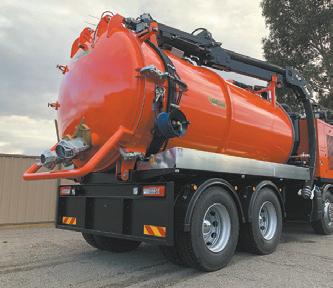
UTILITY • AUGUST 2019 WWW.UTILITYMAGAZINE.COM.AU WASTE MANAGEMENT 93
by 40 years of engineering excellence, Vac Dig is proud to offer our economical standard units, or a customized solution to suit your specific needs. Australian manufactured. Made for Australian conditions by Australians.
Innovative design
Exceptional build quality
Unrivalled after sales services YOUR BUSINESS IS IMPORTANT TO US 0407 593 137 info@vacdig.com.au www.vacdig.com.au
NON-DESTRUCTIVE EXCAVATION SPECIALISTS Backed
•
•
•
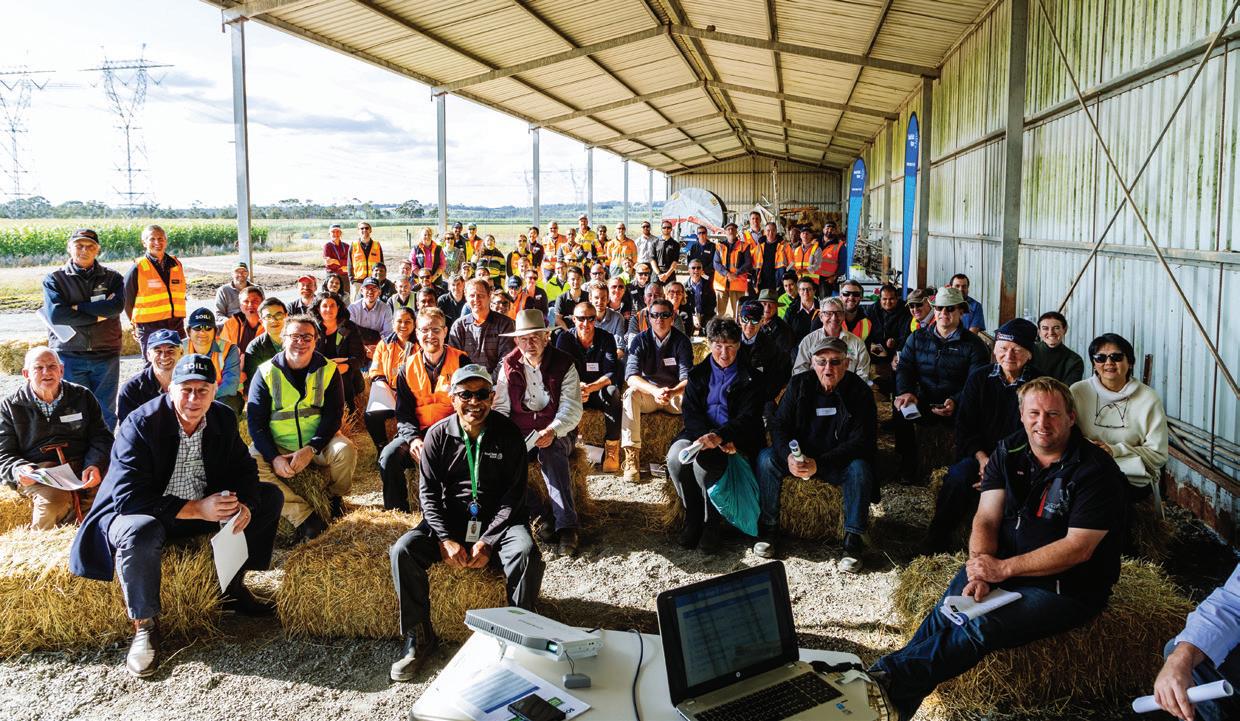
AN EFFICIENT AND COST-EFFECTIVE ALTERNATIVE
EPA Victoria approved the utility’s request to undertake the trial through its Research, Development and Demonstration pathway. Water organisations have used liquid biosolids in Australia since 1998, but all applications so far have been limited to New South Wales.
The current strategy for biosolids management at the Longwarry Water Recycling Plant is to take the sludge-laden Facultative Lagoon 1 offline and dry the sludge in-situ. Sludge is then harvested and taken to Pakenham Water Recycling Plant (around 35km away) for further drying and storage for a minimum of three years, in order to achieve T1 status.
This process is problematic for South East Water (and the water industry at large) as it is costly, time consuming, labour intensive and requires double handling of transport. Additionally, the end-product has a lower nutrient value due to the long storage times associated with the current practice.
“At South East Water, we’ve been managing biosolids from water recycling plants through agricultural land application for the last fifteen years. The biosolids are produced from liquid sludge, which is removed from the treatment lagoons and dried on site,” Dr Surapaneni said.
“To achieve top quality biosolids as prescribed by EPA Victoria, the dried biosolids should then be stored for a minimum of three years for further drying and be devoid of
pathogens. This process is costly, time consuming, labour intensive and requires vast tracts of land. In addition, the nutrient value of the three-year old biosolids also decreases due to the long storage time.
“Hence, we proposed the on-site utilisation of liquid biosolids via soil injection as an alternative cost-effective solution for liquid biosolids management.
“Since the proposed plan was to utilise lower grade liquid biosolids, it required a scientific study for agricultural application approval by EPA Victoria. Therefore, we decided to collaborate with the University of Newcastle for scientific expertise and successfully submitted a project proposal to the Soil CRC in December 2018.”
ESTABLISHING THE BENEFITS FOR BOTH THE WATER AND AGRICULTURAL SECTORS
South East Water has completed the first part of the trial, which has seen a bumper crop of summer forage sorghum produced from liquid injection of biosolids under dryland conditions.
South East Water celebrated the success of the project so far with its partners by hosting a biosolids field day with more than 100 industry professionals, members of the farming community and researchers at Longwarry Water Recycling Plant.

WASTE MANAGEMENT 94 UTILITY • AUGUST 2019 WWW.UTILITYMAGAZINE.COM.AU
Biosolids trial to boost soil productivity
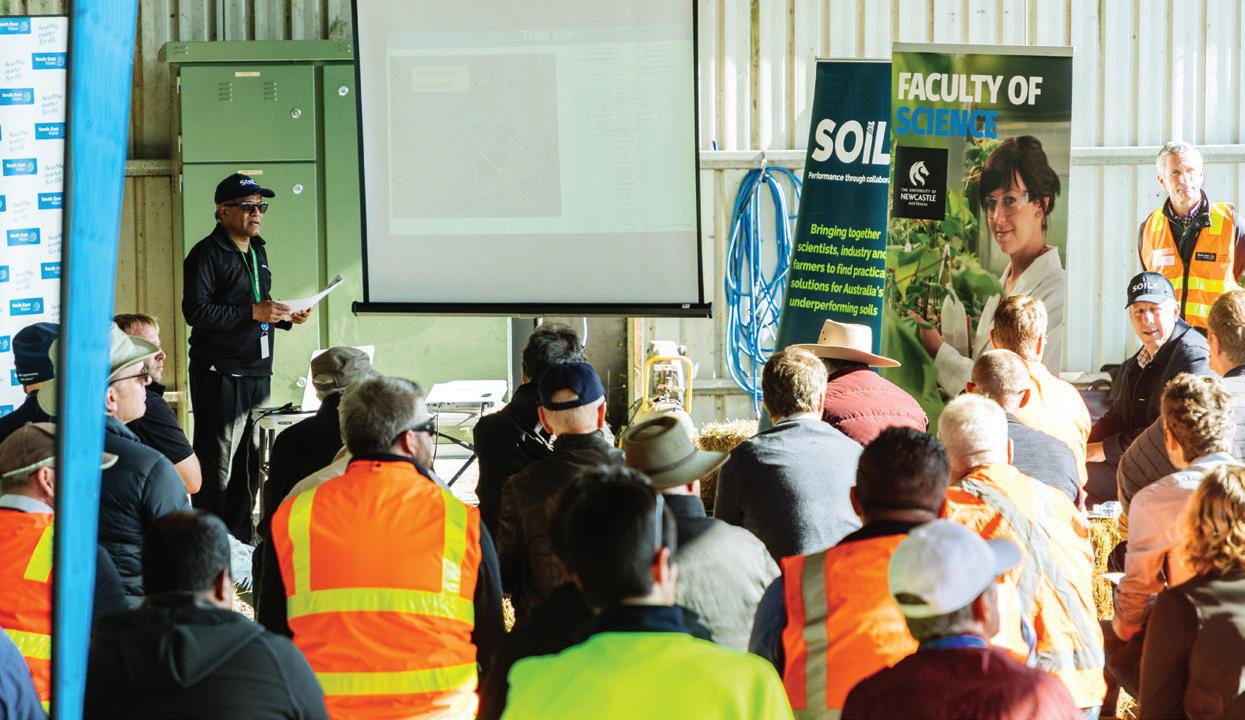
University of Newcastle Environmental Remediation Researcher and one of the project investigators, Dr Balaji Seshadri, said optimising the use of biosolids will result in high value products that can enhance agricultural productivity and soil health.
“Delivering nutrients and organic matter in biosolids to the root zone via liquid injection is one novel approach we’re exploring through this joint trial that will ultimately benefit Australia’s farming community,” Dr Seshadri said.
Soil CRC CEO, Dr Michael Crawford, also believes this project is vital.
“In addition to addressing an important issue for the water sector, it provides scientists and farmers with an understanding of how the addition of organic matter and nutrients to the subsoil can improve soil productivity and ultimately, farmer profitability.”
The Soil CRC is the biggest collaborative soil research effort in Australia’s history. It brings together 40 partners from universities, farmers’ groups, state agencies and industry, including South East Water, with the aim of helping farmers increase their productivity and profitability by providing them with knowledge and tools to improve the performance of their soils.
Dr Surapaneni said if successful, the project will provide a number of benefits to both the water and agricultural sectors.
“It will provide regulatory authorities and the water industry with evidence-based scientific information on alternative courses of action relating to utilisation of biosolids, with a particular emphasis on soil injection of sludge.
“It will also provide best management guidelines on soil injection of sludge leading to significant environmental, economic and social benefits to us as an organisation, and the greater water industry in general.
“For the agricultural sector, it will demonstrate and establish the benefits (soil and agronomic), impacts (especially environmental) and costs (financial and carbon) associated with direct injection of sludge into soil at a well-controlled and confined test site. This will happen under prescribed management practices as well as prevailing environmental conditions for the specified evaluation period.
“We’ll be providing results direct to farming groups, such as Western Port Catchment Landcare Network, via field days, newsletters and websites which will have wider circulation for farmers.”

95 UTILITY • AUGUST 2019 WWW.UTILITYMAGAZINE.COM.AU
to
productivity WASTE MANAGEMENT
Biosolids trial
boost soil
MICROTUNNELLING
Is it possible to balance quality, time and cost on pipeline projects?
When searching for pipeline installation contractors, clients are always looking to get the best quality, with the least time and cost. But this is rarely possible. Technology has come a long way though, and while in the past a higher standard of quality meant a higher cost and more time, this is no longer the case. With the right technology and technique, it is possible to get a quality pipeline installation on time and within budget.
CHOOSING THE RIGHT INSTALLATION METHOD
There are a range of trenchless and non-trenchless installation methods that contractors offer including microtunnelling, horizontal directional drilling, pipe jacking and open cut. Selecting the right method that best meets the needs of the project and the site conditions will ensure the job will be done right the first time, and project time and costs can be kept low as there’s less chance of something going wrong during the installation process.
If accuracy is required for the installation, the only way to get a quality installation is to choose a microtunnelling contractor.
Typically, microtunnelling contractors can achieve an accuracy of +/-25mm, with an accuracy of +/-10mm often achieved with the Vermeer AXIS guided boring system. These tight tolerances are achievable for these machines because they use a laser guidance system with live monitoring that allows the contractor to make hydraulic steering corrections in real time to keep the drill in line.
REDUCING RESTORATION COSTS
Traditional open cut methods of installation can be expensive due to the additional costs of restoration.
As trenchless methods of installation such as microtunnelling require minimal excavation compared to open cut methods, the costs of restoration are greatly reduced.
Microtunnelling only requires an entry and exit pit to be excavated at each end of the pipeline, with the ground in between these points left undisturbed. As disruption to the ground is kept to a minimum, the impact to the surrounding environment is greatly reduced, and contractors are able to get the job done quicker and cheaper than if full trenches are used.
Restoration costs for microtunnelling can be further reduced when using the AXIS system which is able to install pipelines via the keyhole pipeline method. This method is extremely precise and non-invasive.
As only minimal ground incision is needed for a pipe to be installed, there is minimal disruption to the ground and any services and obstacles around the pipeline.
RISK MINIMISATION KEEPS PROJECTS ON TIME AND IN BUDGET
Risk minimisation is imperative to keep projects on time and in budget as an unexpected problem could cause time and cost blowouts.
Using the AXIS boring system, the challenges associated with changing ground conditions are reduced.
Geotechnical information is provided before an installation begins, however it
ABOUT STUART HARRISON
is not always correct as it only provides a snapshot of the conditions present.
This means it is not uncommon to get to site and begin drilling only to find the ground conditions are different to those advised. This is a problem as most microtunnelling machines are not designed to retract, so when ground conditions change there’s no choice but to dig the drill head out from above. This causes time and costs to increase due to increased labour and restoration.
The Vermeer AXIS system doesn’t have this problem as it has been designed to retract so that a pilot line can be completed where the pipeline will be installed. If it encounters any issues, the drill can be retracted and the contractor can assess the ground to make a decision about which part to use before installing the final product pipe.
This feature greatly increases the chance of a successful installation the first time, and the chance of time and cost blowouts is greatly minimised.
A BALANCING ACT
While it is possible to find a balance between quality, time and cost, there is no one method or technology that will do this perfectly. The AXIS boring system for microtunnelling is one option that offers a good balance by combining accuracy with reduced restoration costs and risks, to get a high-quality installation that is completed on time and on budget.
At the end of the day, the client will need to decide which one of these is more important, and choose a solution that meets their requirements based on that.
Global microtunnelling pioneer
Stuart Harrison is the Managing Director of Edge Underground, where he specialises in on-grade microtunnelling installations with millimetre accuracy.
Stuart is also the inventor of the Vermeer AXIS Guided Boring system, and he is constantly working to improve the effectiveness of this and other trenchless systems used in the installation of gravity sewers.
To discuss your next microtunnelling installation, contact Stuart on 1300 JACKED or at stuart@edgeunderground.co

UTILITY • AUGUST 2019 WWW.UTILITYMAGAZINE.COM.AU
96
CROWN PROMENADE MELBOURNE, AUSTRALIA 24–27 NOVEMBER 2019

PLENARY LECTURERS:
CORROSION & PREVENTION 2019
The annual ACA conference is a three day gathering of world experts on corrosion mitigation. This will be a premium networking event as well as a source for the latest information concerning corrosion mitigation. Entitled Corrosion & Prevention 2019, the conference will comprise a program of keynote speakers and presentations under a range of industry ‘streams’, integrated with an exhibition that will showcase the latest products and services of the corrosion mitigation industry.
Over 500 delegates and visitors are expected to attend from industries such as; protective coatings, water, defence, building and construction, mining, oil & gas, cathodic protection, power and more.
C&P2019 INCLUDES:
• Quality Technical Program
• 60 Booth Trade exhibition
• Social & Networking functions
• Various Forums
• Awards Dinner

• Partner Program

Willie Mandeno Principal Engineer Materials – WSP Opus

Carmen Andrade President – Alconpat

Dudley Primeaux Owner – Primeaux Associates LLC

Srdjan Nesic Russ Professor of Chemical Engineering – Ohio University

Stuart Lyons AkzoNobel Professor of Corrosion Control – School of Materials (Corrosion and Protection)

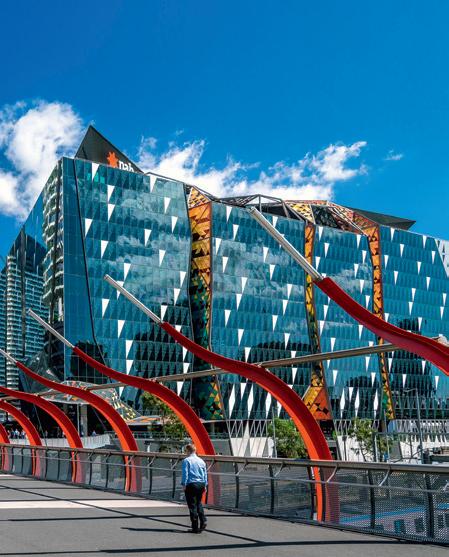
PRESENTED BY:
PROUDLY
For more information and to register go to: conference.corrosion.com.au
Bringing together innovative thinkers IN THE POWER AND ENERGY SECTOR
The power industry is undergoing a dramatic transformation as renewable power is rapidly introduced into the system, and distributed generation and microgrids take on increasing significance as an energy solution. Power & Utilities Australia is designed to examine the challenges and opportunities created by this unprecedented disruption in the industry.
The 2019 Power & Utilities Australia Conference and Exhibition will be held at Melbourne Conference and Exhibition Centre on 14–15 August. Power & Utilities Australia, created with the colocation of several established power and utility events, focuses on strategies and solutions along the entire electric power supply chain – power generation, transmission and distribution, and digital transformation. This event features discussions on industry driven frameworks that allow for affordability, sustainability and reliability.
The Power & Utilities Australia Conference will have an audience of C-suite executives discussing, at the highest levels, strategies and frameworks to meet the challenges of providing reliable, affordable and sustainable power to Australia.
The Power & Utilities Australia Exhibition, running alongside the conference, will feature 150 exhibitors and 3,000 visitors from across the industry spectrum. The exhibition floor will have three knowledge theatres – Generation, Transmission and Distribution, and Digital Transformation – offering high-quality content free of charge to qualified visitors.
The Generation Theatre, where presentations will focus on the challenges of balancing traditional energy with clean energy, will feature case studies on topics such as asset management, utility-scale solar and storage, emissions control and demand management.
The Transmission and Distribution Theatre will focus on new challenges and opportunities for network companies as they manage intermittent power on a grid built for a different era. Additionally, microgrids, community

energy and edge-of-grid intelligence will be explored.
The Digital Transformation Theatre looks at case studies from utilities that have invested In IoT, AI and customer facing strategies to gain efficiency and reduce customer churn.
Power & Utilities Australia will also include exciting additional features such as breakfast forums, industry roundtables, business matching, a start-up zone and innovation pavilion.
Some of the most important industry organisations are participating, including:
• Google Cloud ANZ
• GE
• Ausgrid
• Hydro Tasmania
• Western Power
• Ausnet Services
• IBM A/NZ
• Siemens
• Australian Energy Council
• Energy Networks Australia
• CS Energy
• BLOOMBERG NEF
• The Energy Charter
• Jemena
• AVEVA

• AEMO
• AEMC
• Yarra Valley Water
• Sydney Water
• Zinfra
• Telensa
Confirmed speakers include: Jett Winter, Global Leader for GE Digital Energy Grid Analytics; John Cleland, CEO of Essential Energy; Andrew Bills, CEO of CS Energy; Rebecca Kardos, CEO of Aurora Energy; Colin Timm, Country Director, Google Cloud ANZ; Dave Johnson, General Manager Development and Construction, AGL; Seb Henbest, Head of EMEA, BLOOMBERG NEF; and Andrew Dillon, CEO of Energy Networks Australia.
For speaking and marketing partnerships at Power & Utilities Australia please contact Michael Silber, Michael.silber@talk2.media; to discuss sponsorship and exhibition packages, please contact Patrick Baker, patrick. baker@talk2.media.
For more information or to register for a free Expo Pass, please visit: www. powerandutilitiesaustralia.com.
Utility Partner Solutions EVENTS 98

If your business involves plastics pipe systems, OZPIPE XIX is the one event you cannot miss in 2019.

REGISTER NOW
Early bird rates available for delegates who register now online - www.ozpipe.com.au
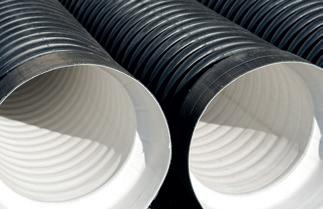
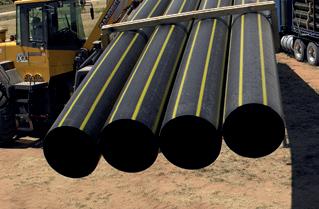
For two days over 7th and 8th November 2019, PIPA and the international Plastic Pipe Conference Association will gather the world’s foremost plastics pipe experts, together with Australia’s pipeline designers, operators and manufacturers, to share knowledge and latest developments in the fields of:
• Disinfectant resistant pipe materials,
• Conventional and trenchless pipe installation and design processes,
• Advances in plastic pipe welding and jointing processes,
• The sustainable use of recycled materials,
• Asset life research and future service life expectations, and
• State-of-the-art pipeline case studies from around the world.







The location of this event is Dockside, on Sydney’s magnificent Cockle Bay Wharf.

Delegate numbers are strictly limited so register early to secure your position and take advantage of the early-bird rates. ozpipe.com.au


MAIN SPONSORS GOLD SPONSORS NETWORKING EVENT SPONSOR LUNCH BREAK SPONSOR iPAD SPONSORS
+ present
MAJOR FEATURES
RENEWABLES CORROSION DISASTER MANAGEMENT
2019
AUGUST 2020
SPECIAL FOCUS TRANSFORMERS & SUBSTATIONS PIPELINE INTEGRITY & LEAK DETECTION DAMS LAND ACCESS
UTILITY • AUGUST 2019 WWW.UTILITYMAGAZINE.COM.AU Article title SECTION 100 EDITORIAL SCHEDULE Advertisers’ index Abberfield Industries 81 Access Detection 7 Alternative Lining Technologies OBC AMS Instrumentation & Calibration 16 Bintech Systems 39 Corrosion and Prevention 2019 97 Edge Underground 85 Filtec 48 Future Engineering & Communication 9 Harcor 11 Interflow 75 International Mining and Resources Conference 91 Iota Services 47 IPD Industrial Products 55 Iplex Pipelines Australia 89 kwik-ZIP 65 Lanco Group 14 McRobert Contracting Services 17 NHP Electrical Engineering Products 15 Ozpipe XIX 99 Ozzi Kleen 13 Peter Norman Personnel 79 Pezzimenti Trenchless 90 Pipeline Plant Hire 80 Piping Specialty Supply Service 74 Polymaster 5 Power & Utilities Australia 98 Projex Group 40 QMAX Pumping Systems 10 Quantum Filtration Medium 43 REHAU 61 Rimic Civil 88 Schneider Electric (Australia) 49 Simmonds & Bristow 18 Steel Mains 27 Taggle Systems 64 Thermo Fisher Scientific Australia 35 Vac Dig 93 VEGA Australia 41 Veolia Water Technologies (Australia) 12 Vermeer IFC Viega 37 WAGO 71 WIOA Bendigo IBC Zinfra 28-29
MAJOR FEATURES BIG DATA CYBER SECURITY SOLAR SYDNEY WATER SPECIAL FOCUS MAPPING, GIS & SURVEYING UTILITY LOCATION SEWER REHABILITATION EMBEDDED NETWORKS DISTRIBUTED GENERATION CUSTOMER EXPERIENCE EQUIPMENT & MACHINERY DRONES SWITCHGEAR MAJOR FEATURES WATER MANAGEMENT DEMAND MANAGEMENT ENERGY NETWORKS SUSTAINABILITY SPECIAL FOCUS INSPECTION, CCTV & CONDITION ASSESSMENT MOBILITY VEGETATION MANAGEMENT ENERGY STORAGE FUTURE FUELS EQUIPMENT & MACHINERY SMART METERS MICROTUNNELLING SALES DEADLINE 20 MARCH 2020 FEBRUARY 2020 SALES DEADLINE 22 NOVEMBER 2019 EVENT DISTRIBUTION WIOA QLD OZWATER SMART CITIES 2020 EVENT DISTRIBUTION ASSET
MAY 2020
MANAGEMENT FOR CRITICAL INFRASTRUCTURE 2020 WIOA BENDIGO EVENT DISTRIBUTION
SMART
SPECIAL
GAS
TRENCHLESS TECHNOLOGY IOT AND SCADA IRRIGATION WASTE MANAGEMENT EQUIPMENT & MACHINERY PIPE & CONDUIT PUMPS,
NOVEMBER
MAJOR FEATURES WATER OPERATIONS AND TREATMENT STORMWATER ASSET MANAGEMENT
GRIDS
FOCUS
PIPELINES
VALVES & FILTERS
EQUIPMENT
HORIZONTAL DIRECTIONAL DRILLING
PIPE
SALES DEADLINE 12 JUNE 2020 SALES DEADLINE 20 SEPTEMBER 2019 WIOA NSW DIGITAL UTILITIES 2020 LOCATE 2020
DISTRIBUTION
OZPIPE XIX
& MACHINERY
(HDD)
& CONDUIT
EVENT
CORROSION AND PREVENTION DISASTER MANAGEMENT INTERNATIONAL MINING AND RESOURCES CONFERENCE


All industry personnel involved in the operation and maintenance of urban, rural and industrial water related infrastructure for the management, conveyance, treatment, discharge and reuse of water and trade wastes should attend this conference.
The Water Industry Operators Association of Australia (WIOA) is a national association facilitating the collection, development and exchange of quality information between people undertaking operational roles in the water industry.
Promoting best practice in water management by building the knowledge, skills and networks of operators.
• Listen to the experience of others through the latest “operational” technical and research based information platform and poster presentations.
• View and discuss the latest advances in technical equipment, products and services with suppliers and trade consultants.
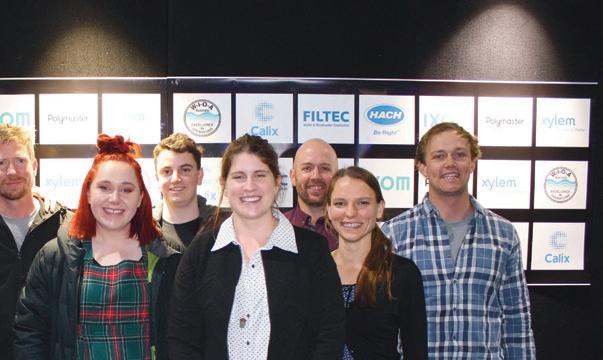
• Update your knowledge and skills through interaction with fellow water industry employees.
Supported by Hosted by







Sponsored by





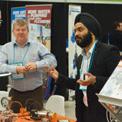




E info@wioa.org.au P 03 5821 6744
4 & 5 Sept
Media Partners Join us at our 2019 Victorian Water Industry Operations Conference & Exhibition Bendigo Exhibition Centre
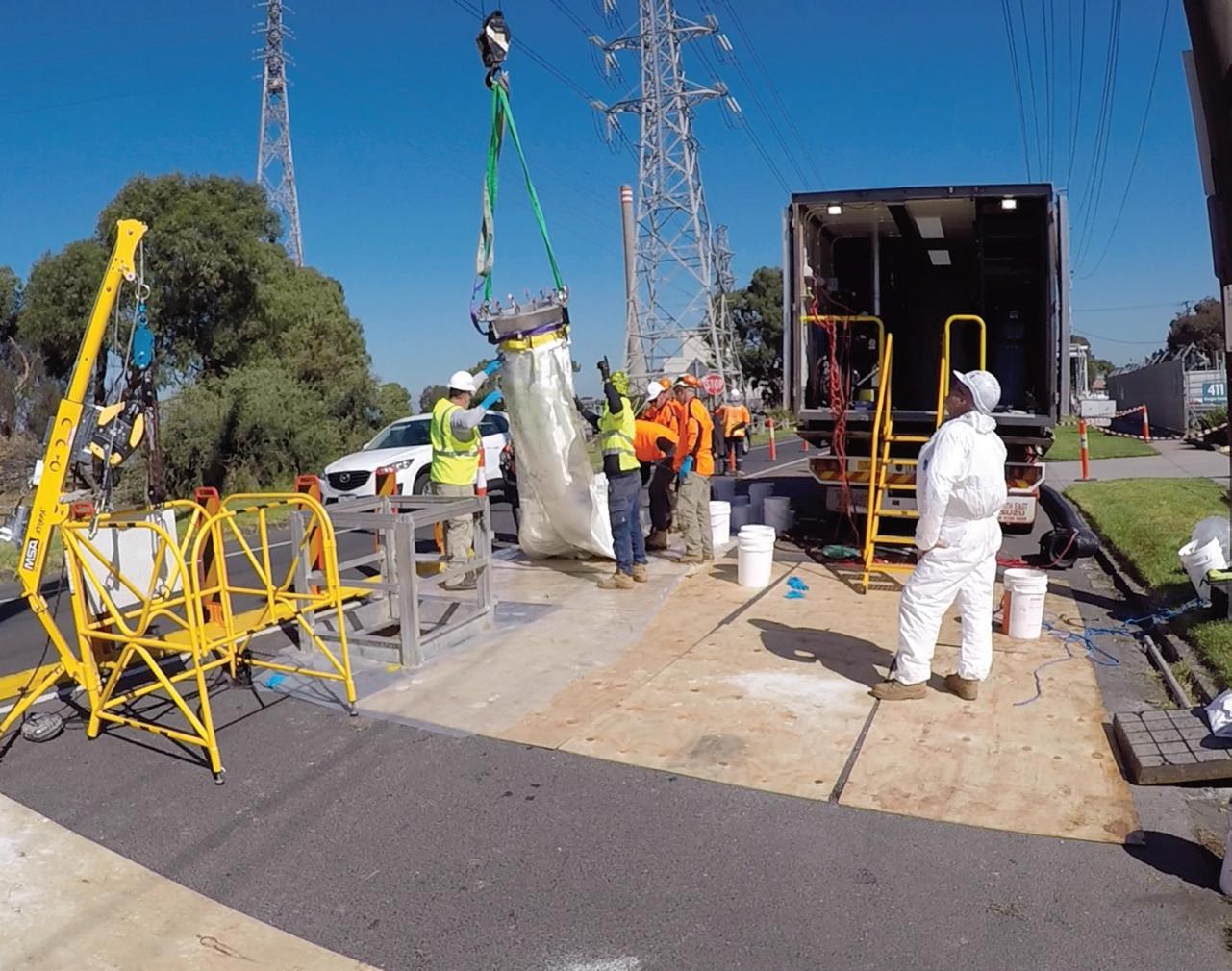

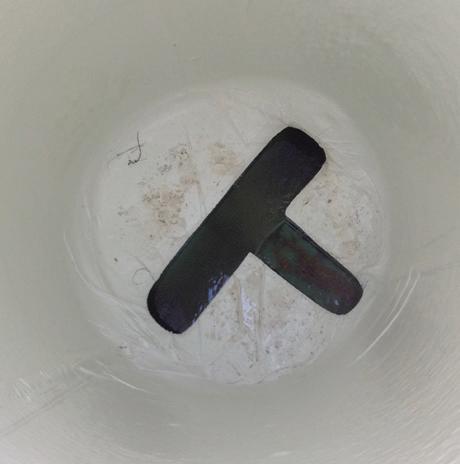

THE BEST WAY TO REHABILITATE MANHOLES? Making manholes GREAT AGAIN With Alternative Lining Technologies Cured in Place Manhole...CIPMTM (03) 9933 8040 info@altliner.com.au www.altliner.com.au BEFORE AFTER Stop infiltration Stop H�S corrosion Structurally rehabilitate Manholes Pump wells Pits Suitable for:
WHAT'S













































































































































































































 Russell Fisher Process Engineer, Amiad
Russell Fisher Process Engineer, Amiad
















 DANIEL WEAVER EXECUTIVE GENERAL MANAGER INTERFLOW
DANIEL WEAVER EXECUTIVE GENERAL MANAGER INTERFLOW




























































































































